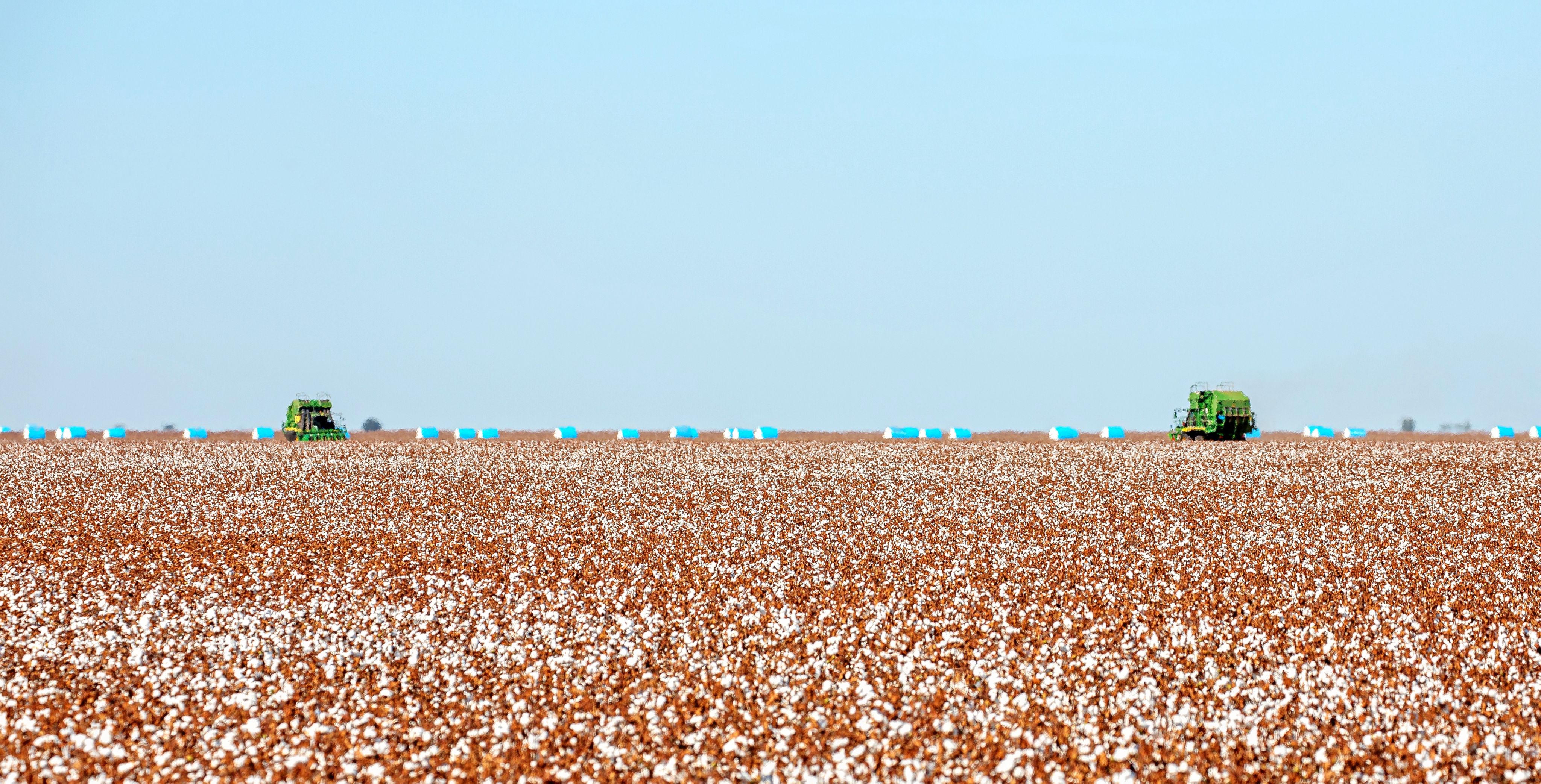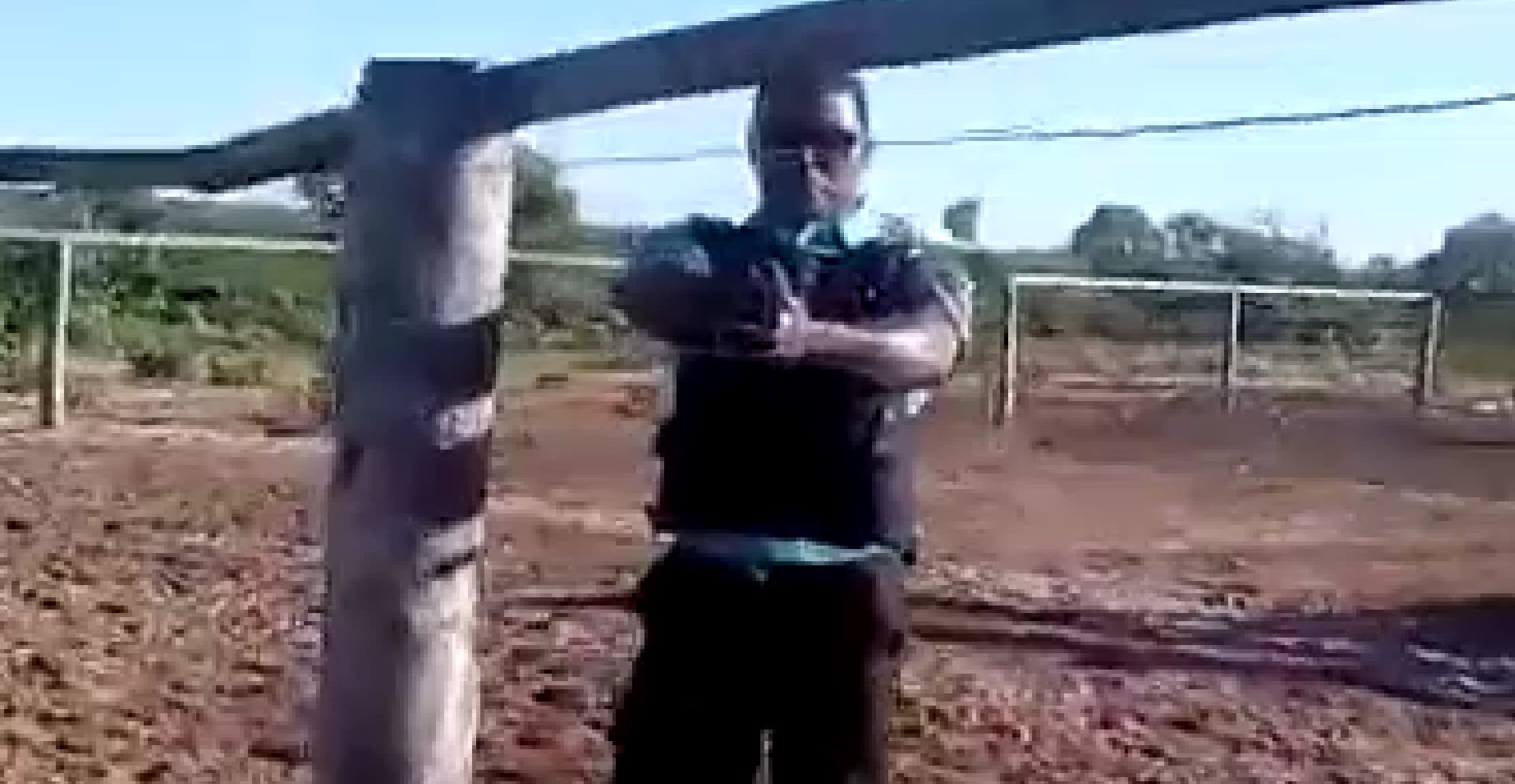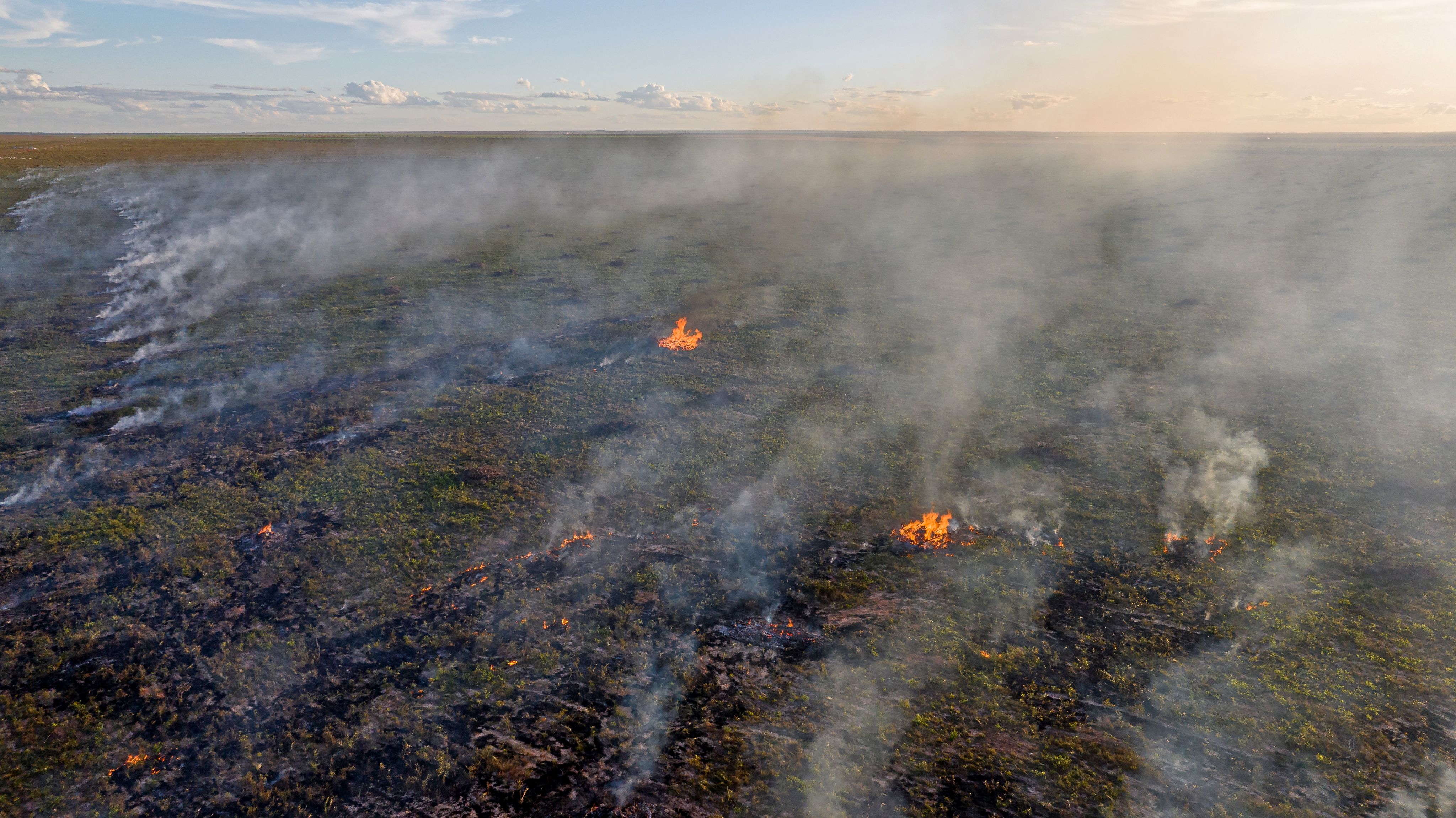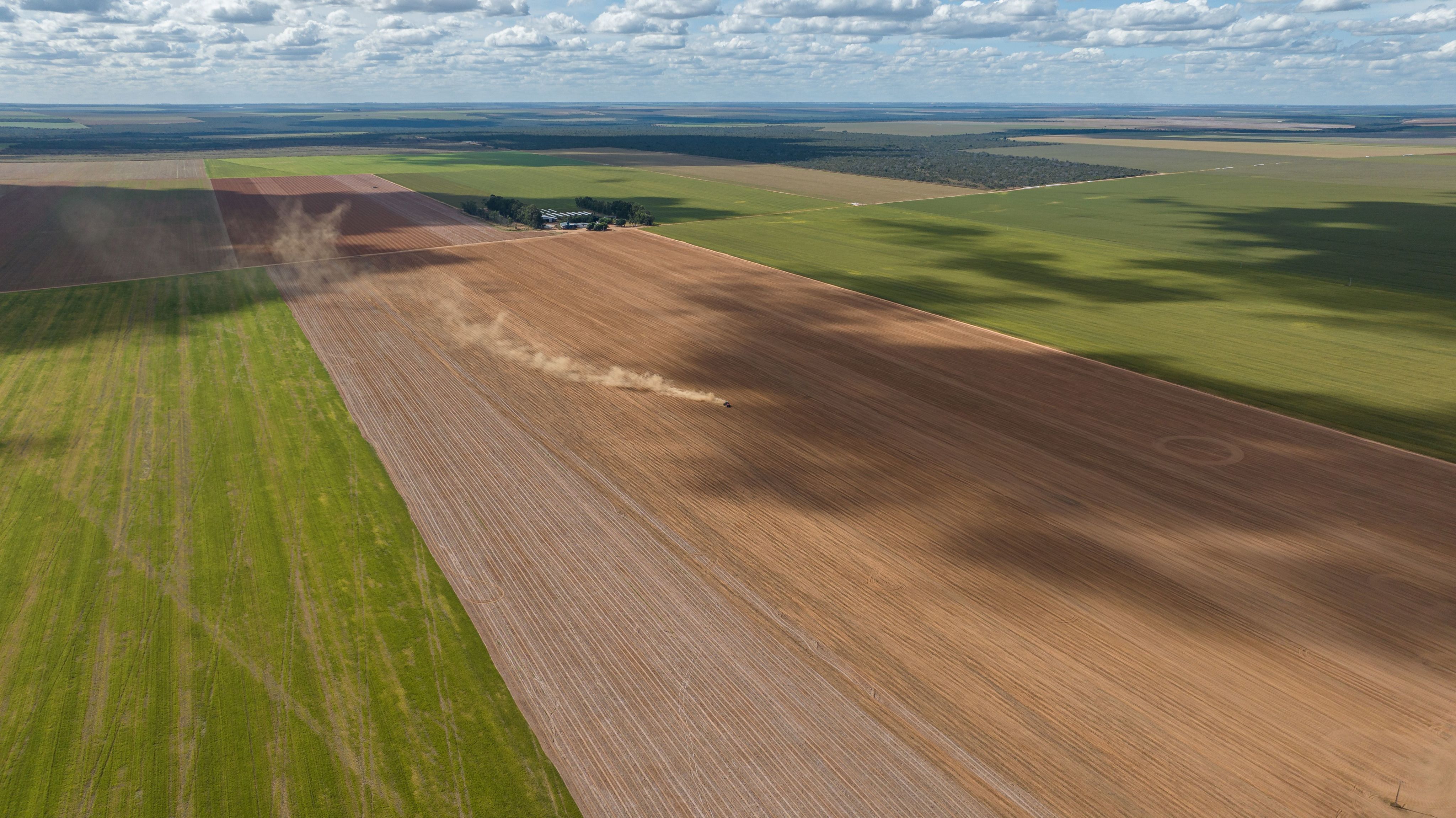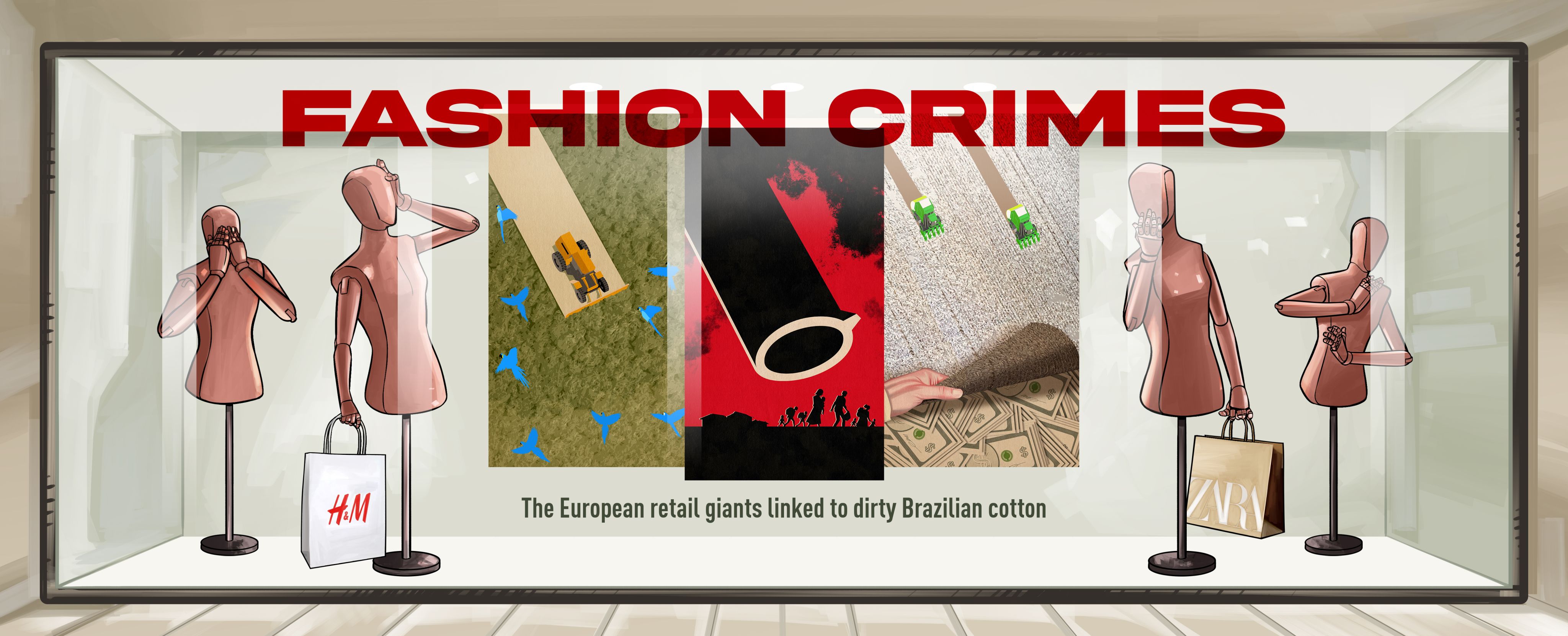
Key Findings
- The world’s largest fashion brands, H&M and Zara, use cotton linked to land grabbing, illegal deforestation, violence, human rights violations and corruption in Brazil.
- The cotton is grown by two of Brazil’s largest agribusinesses – SLC Agrícola and the Horita Group – in western Bahia state, a part of the precious Cerrado biome, which has been heavily deforested in recent decades to make way for industrial-scale agriculture.
- Unlike in the Amazon, deforestation in the Cerrado is getting worse. The biome is home to five per cent of the world’s species. Many face extinction due to habitat loss if current deforestation trends are not reversed.
- For centuries, traditional communities have lived in harmony with nature. These communities have seen their lands stolen and suffered attacks by greedy agribusinesses serving global cotton markets.
- The tainted cotton in H&M and Zara’s supply chains is certified as ethical by the world’s largest cotton certification scheme, Better Cotton, which has failed to detect the illegalities committed by SLC and Horita. Better Cotton’s deep flaws will not be addressed by a recent update to its standards.
- Failure by the fashion sector to monitor and ensure sustainability and legality in its cotton supply chains means governments in wealthy consumer markets must regulate them. Once in place, rules must be strictly enforced.
Fashion Crimes was published on the 11th April 2024
See the bottom of this page for an addendum with a short update to this report since it was first published.
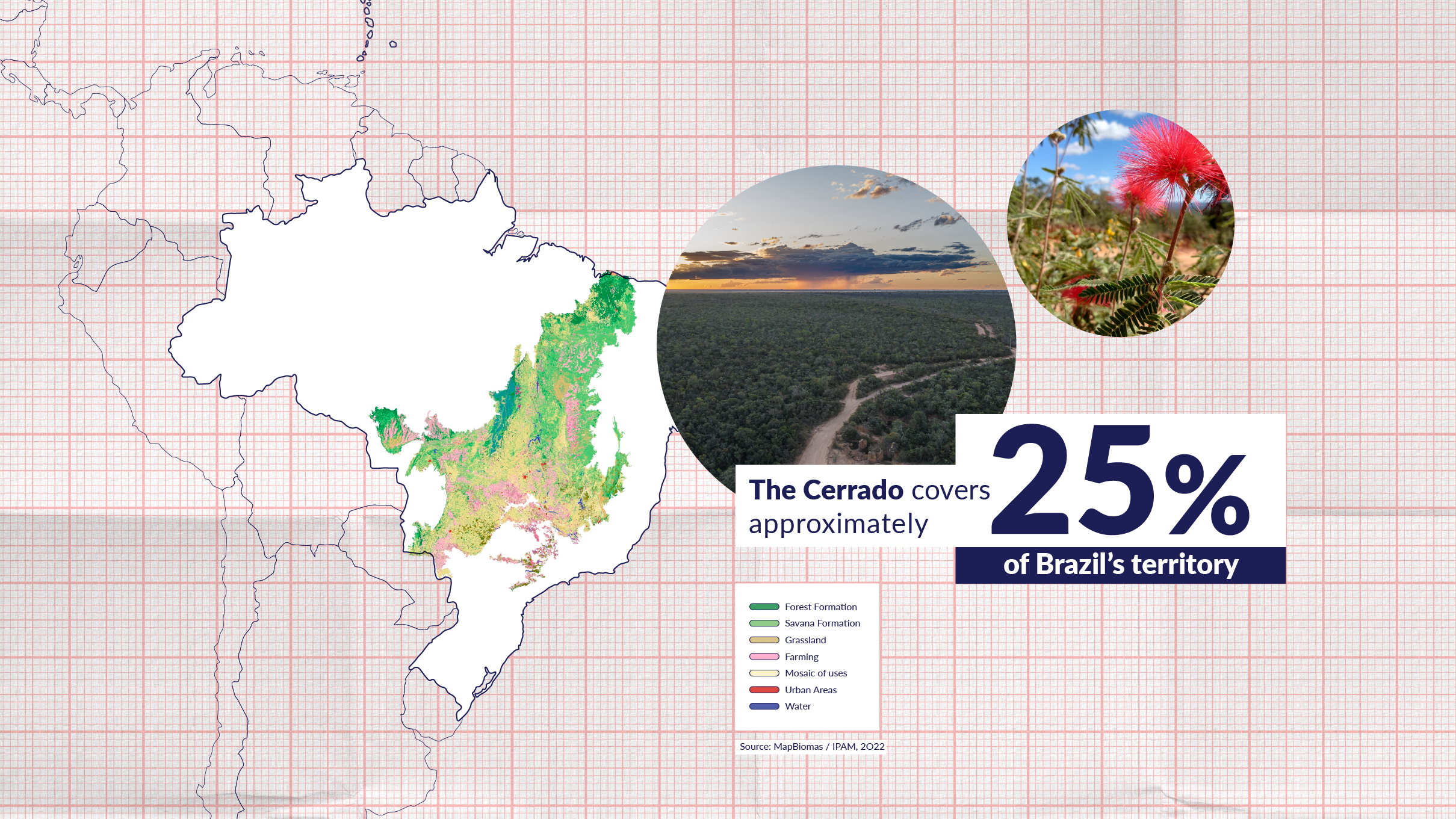
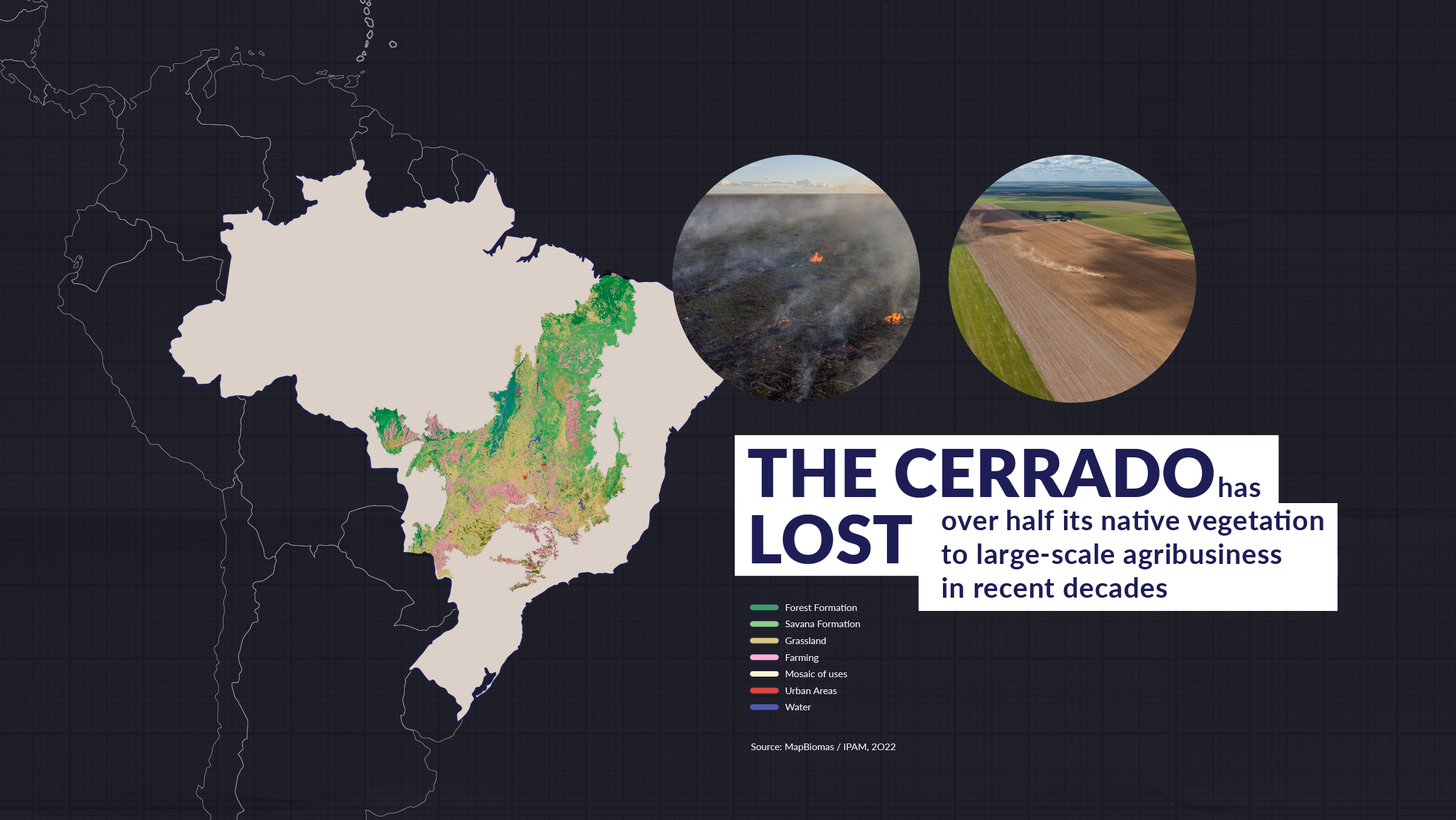
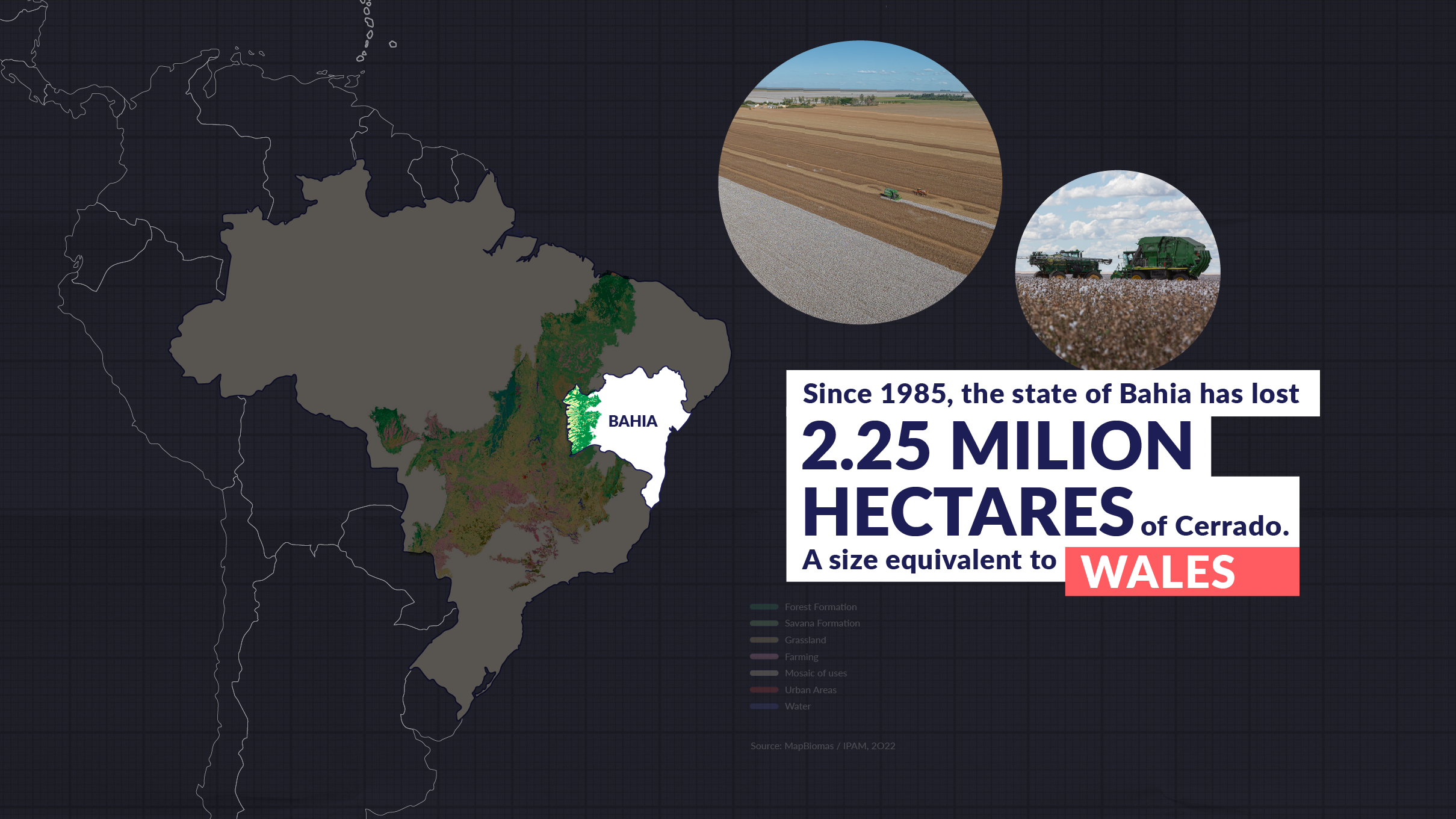
Chapter 1:
The arrival of Big Ag
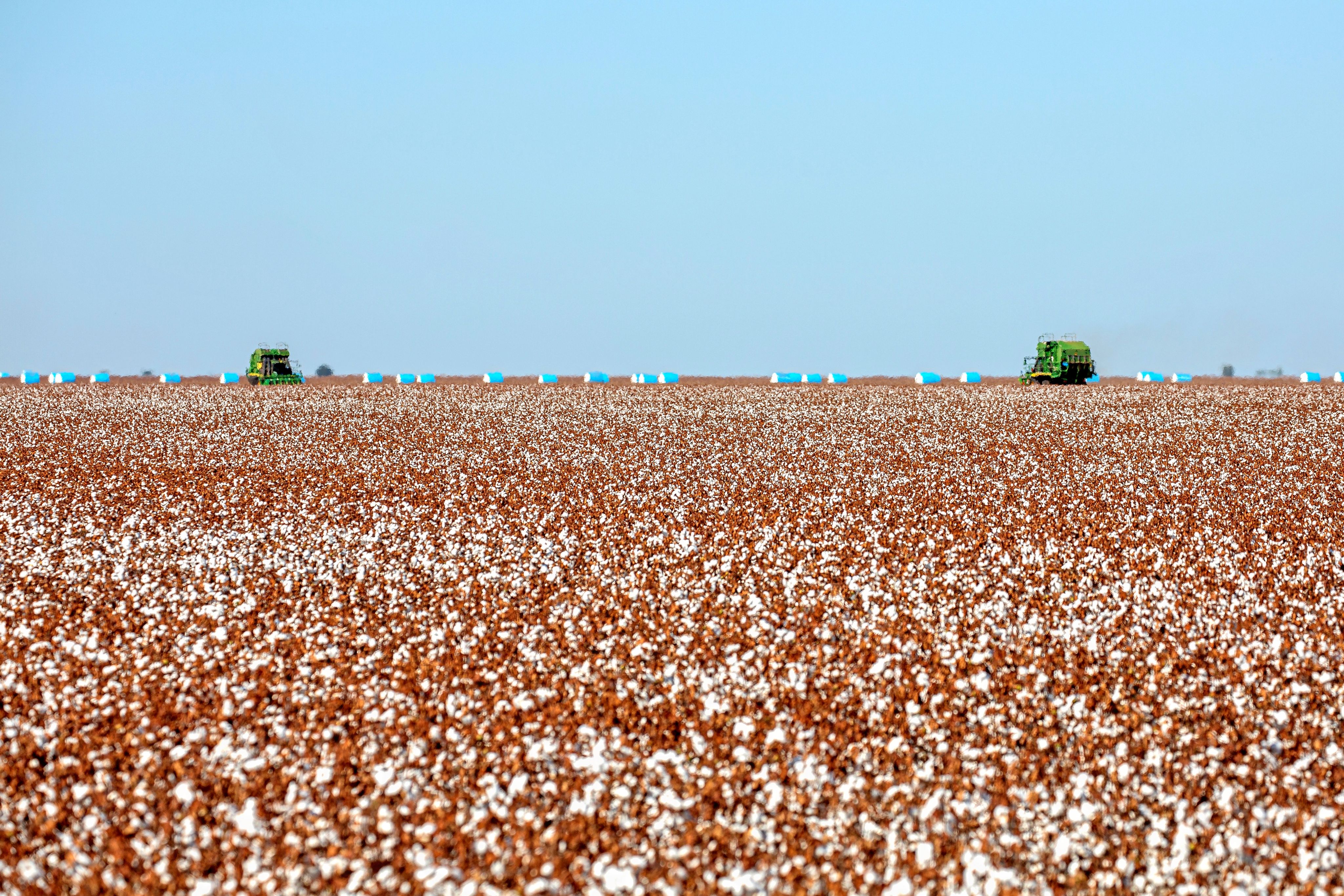
A precious wilderness
Rising up at the margins of the veredas11, tucum palm trees share space with buriti trees, attracting toucans and blue macaws in search of their round fruits. The vegetation also includes barbatimão, mangaba and sucupira trees, known to locals for their medicinal properties and used to treat everything from inflammation and infections to diabetes. Beyond the veredas, a mosaic of landscapes includes savannahs, wetlands, grasslands and forests.
This is the Brazilian Cerrado. Despite the immense beauty of its dramatic plateaus and lush valleys, and its importance for numerous species, the Cerrado is not as well-known as the Amazon. Sprawling over almost 25 per cent of Brazil’s territory, an area the size of Mexico, it is the second largest biome in the country.12 The Cerrado – home to five per cent of the world’s species (including giant armadillos, tapirs, maned wolves, jaguars, rheas and siriemas) and a third of Brazil’s biodiversity13 – is known as a cradle of waters due to its role in replenishing several major Brazilian and South American rivers.14
The biome has lost over half its native vegetation to large-scale agriculture in recent decades.15 "It is often said that the Cerrado can be sacrificed so that agribusiness can expand without threatening the Amazon,"16 says André Sacramento, Coordinator of the Association of Rural Workers' Lawyers (AATR). He adds: "The Cerrado, however, is essential for the preservation of the Amazon itself.” Indeed, important Amazon rivers (Xingu, Madeiras, Trombetas) have springs in the Cerrado.17
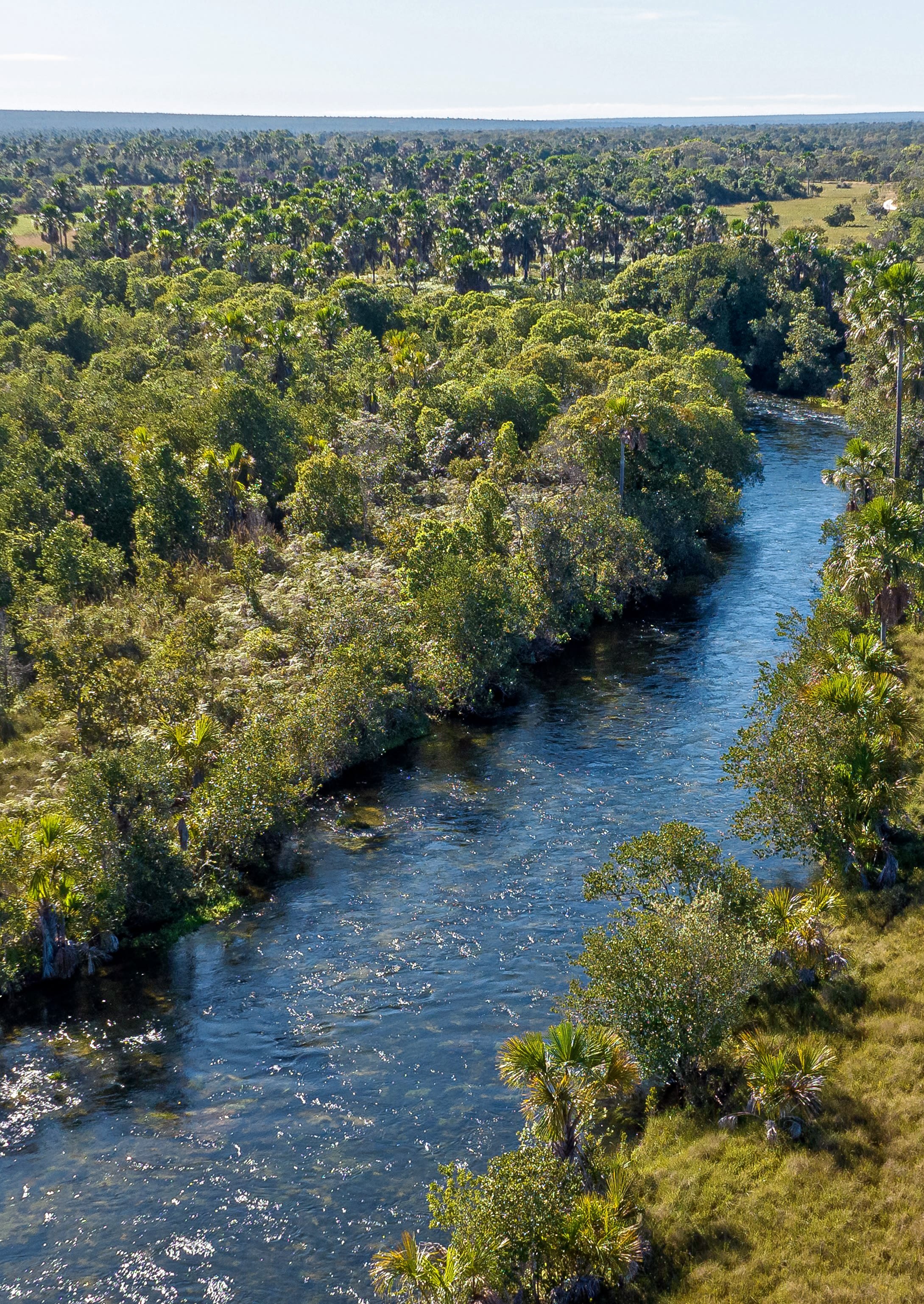
River between the Cachoeira community and Cacimbinha, Bahia. © Thomas Bauer / Earthsight
River between the Cachoeira community and Cacimbinha, Bahia. © Thomas Bauer / Earthsight
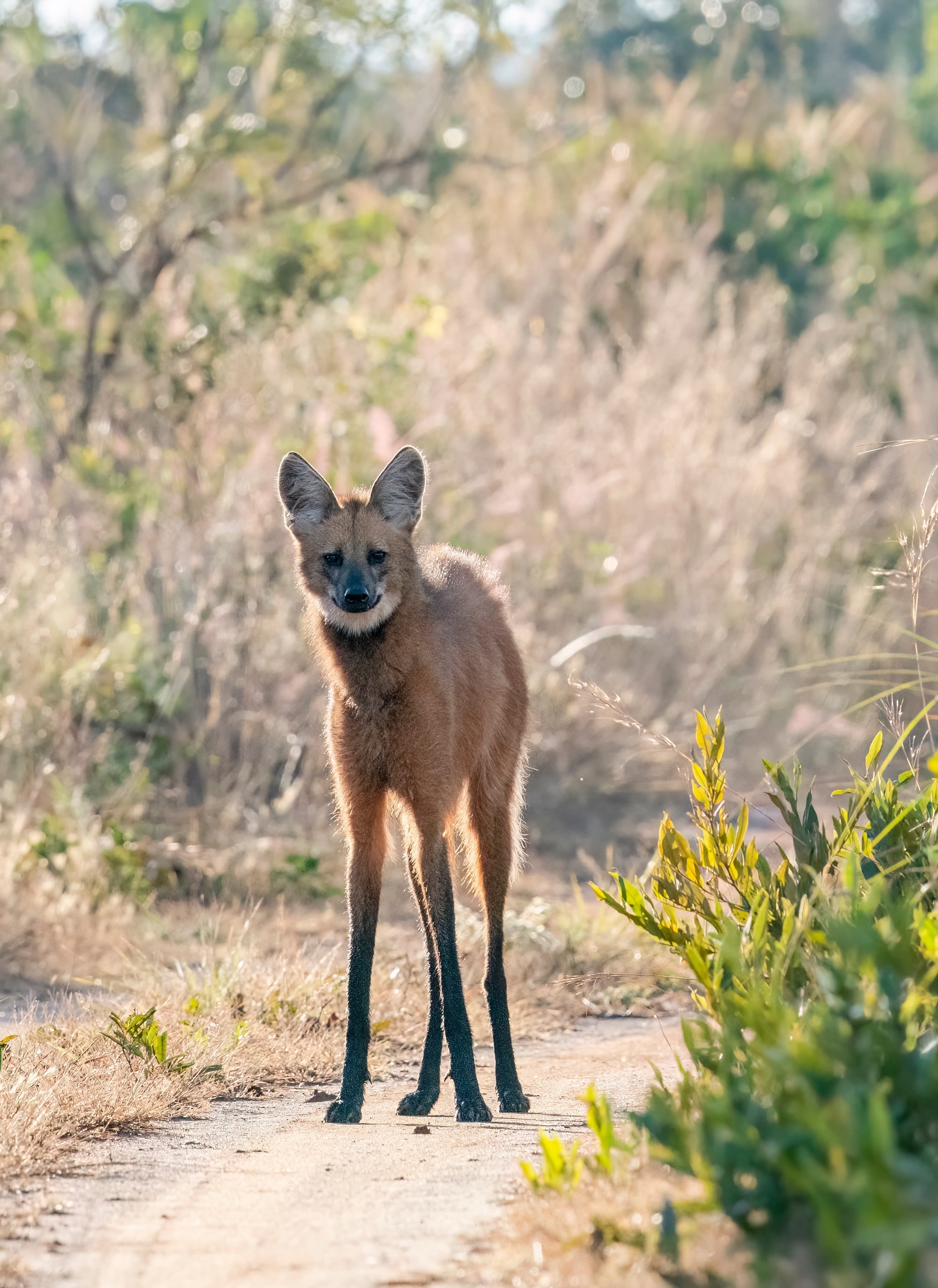
Maned Wolf, Brazil. © Rob Jansen / Shutterstock
Maned Wolf, Brazil. © Rob Jansen / Shutterstock
Within the vast area covered by the Cerrado is the western portion of the state of Bahia. Geraizeiro communities have inhabited western Bahia for generations.18 Geraizeiros live low-impact, traditional ways of life. They collect fruits and medicinal plants, grow traditional crops – such as manioc, beans and pumpkins – and drive cattle over natural grasslands.19 When wildlife was still abundant and rivers clean, they could hunt and fish.
Some of these communities have existed for over 200 years and started as an assortment of fugitive enslaved people, peasants and anyone who wanted or needed to escape mainstream society.20
The communities identified as fundo e fecho de pasto in the municipality of Correntina, further south of Formosa do Rio Preto, have a similar way of life. In the community of Capão do Modesto around 80 families try to live as their ancestors did. Houses are not connected to the electricity grid. Spotty internet connection is only available via satellite.
In the nearby community of Pedrinhas, Bernardino Alves Barbosa, 37, attests to its longevity. "My grandfather, who died in 2021 aged 97, was born and raised here. Back in his early days, people let loose a lot of cattle. They picked pequi, cascudo, cashew, mangaba. We always lived in harmony with nature,”21 he says.
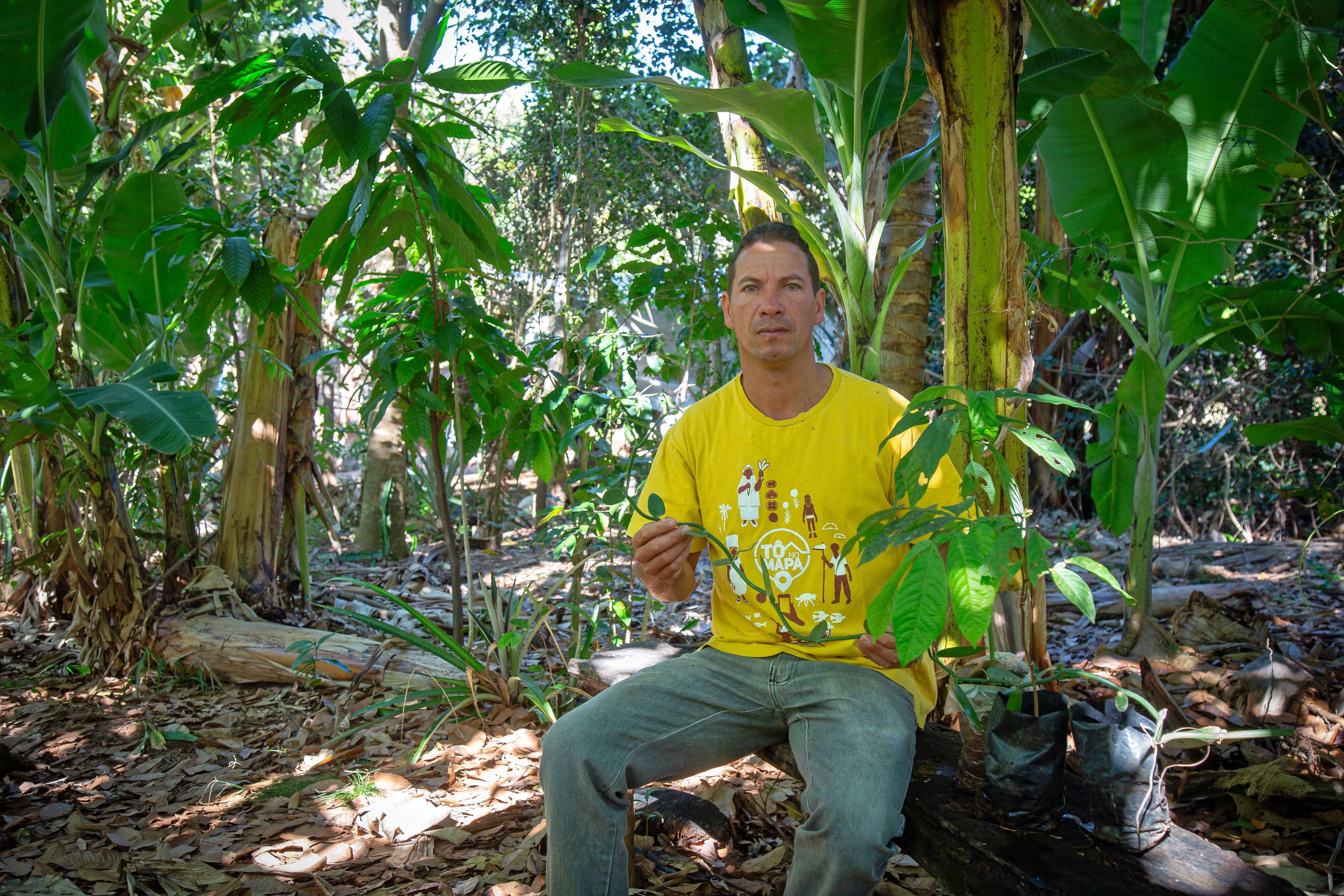
Bernardino Alves Barbosa, Community of Pedrinhas, Bahia. © Thomas Bauer / Earthsight
Bernardino Alves Barbosa, Community of Pedrinhas, Bahia. © Thomas Bauer / Earthsight
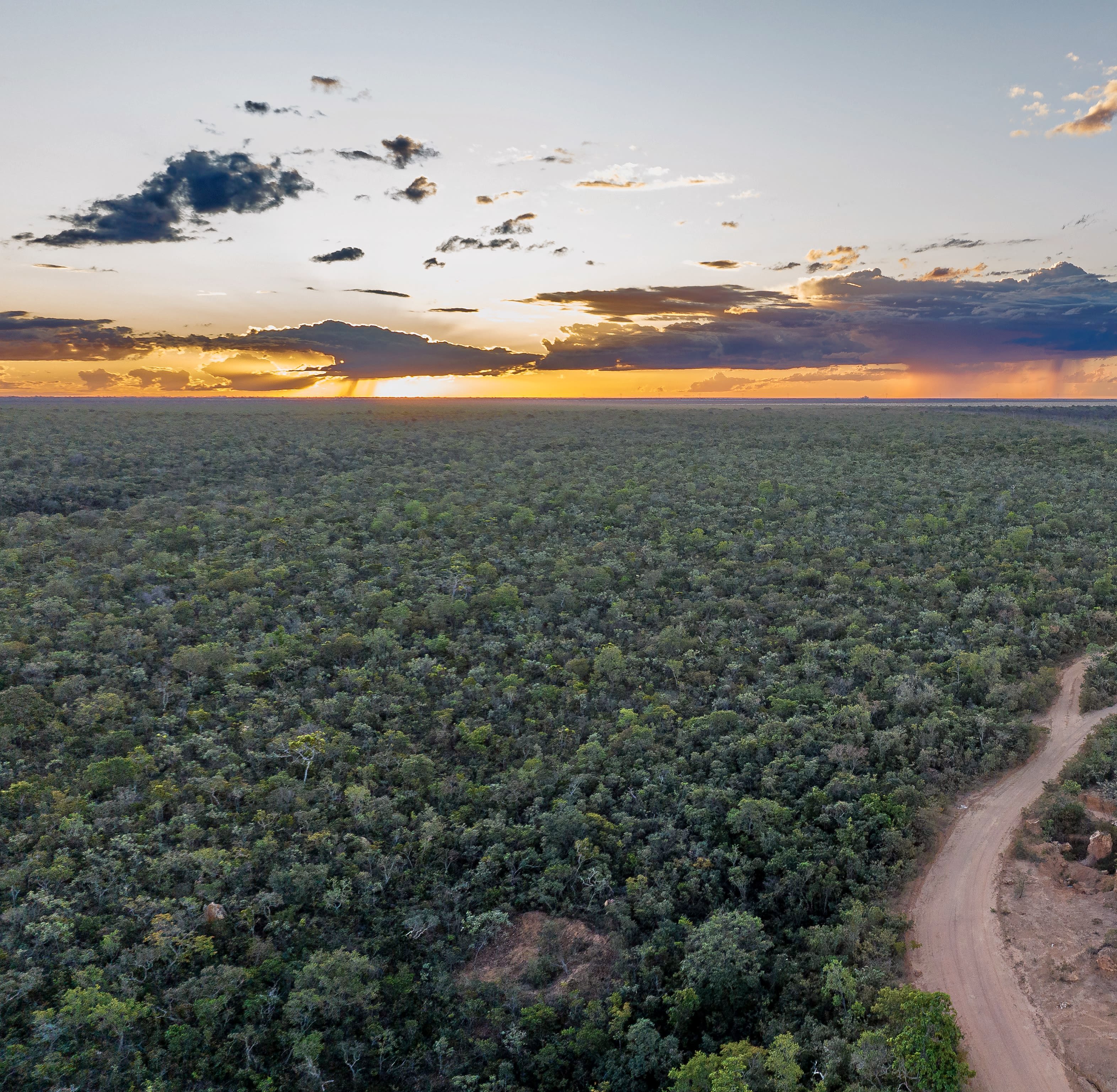
“It's often said that the Cerrado can be sacrificed so that agribusiness can expand without threatening the Amazon.”
André Sacramento
Coordinator of the Association of Rural Workers' Lawyers (AATR)
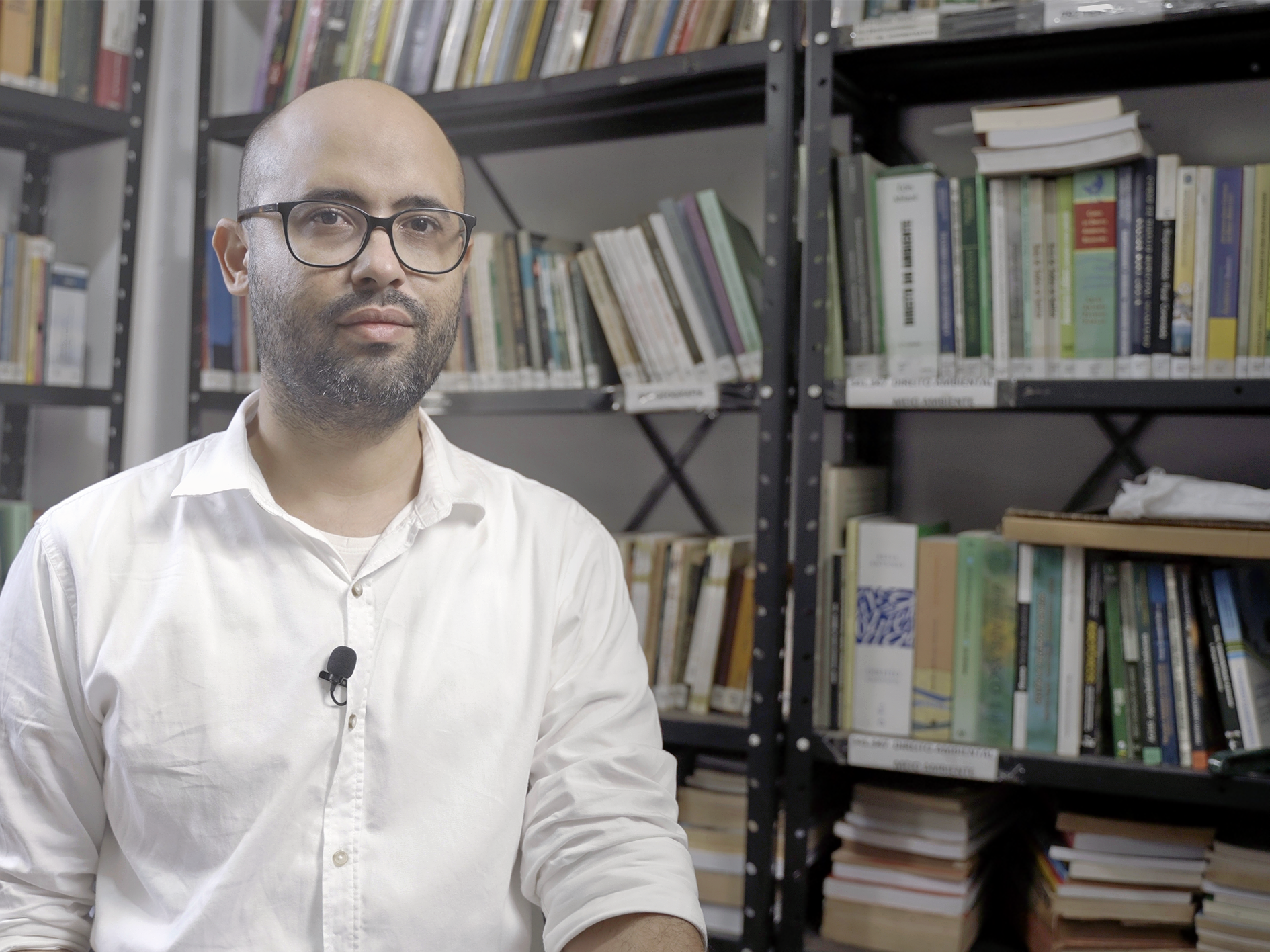

Dispossession and deforestation
This harmonious co-existence has come crashing down in recent decades. Since 1985 Bahia has lost nearly a quarter of its original 9 million hectares (ha) of Cerrado to industrial agriculture.22 Aggressive agribusiness expansion is leading to habitat loss that threatens the survival of a fifth of the Cerrado’s species, including the maned wolf and giant armadillo.23 Traditional communities and wildlife are under pressure from plantation encroachment, unsustainable water extraction and pesticide contamination.
Major Cerrado rivers are expected to see their water levels drop by a third by 2050 due mostly to deforestation and overexploitation, especially by thirsty cotton monocultures.24 Cotton uses more toxic pesticides than any other crop, causing pollution of soil and water sources.25 Added to these environmental impacts is the fact cotton and textile production are notorious for their high levels of greenhouse gas emissions.26 Some estimates say the global clothing industry has a similar carbon footprint to that of all EU Member States combined.27
A ruinous mix of state policy, corruption, greed, violence and impunity has opened up western Bahia to the unstoppable advance of industrial-scale agribusiness founded on the blatant theft of public lands, dispossession of traditional communities, and heart-wrenching deforestation.
In the late 1970s land grabbers saw a golden opportunity in western Bahia, historically seen as ‘idle land’.28 The then military dictatorship was eager to promote the agricultural ‘development’ of vast expanses of Brazil’s territory to, among other things, stop real or imagined ‘communist cells’ from establishing themselves in remote regions.29 The environmental, human and legal costs of such a policy were overlooked or trivialised.
Through fraudulent schemes, land grabbers began illegally privatising hundreds of thousands of hectares of public lands – which belong to the state and people of Bahia – including those which had been under traditional communities’ collective use.30
Under pressure from violent land grabbers, many families were forced to flee. "When the land grabber arrived, he would sometimes win over the locals by paying them a pittance for the land. But often he would simply hire a gunman, burn down houses or threaten and kill residents before taking over the area,"31 says environmentalist and local activist Marcos Rogério Beltrão dos Santos.
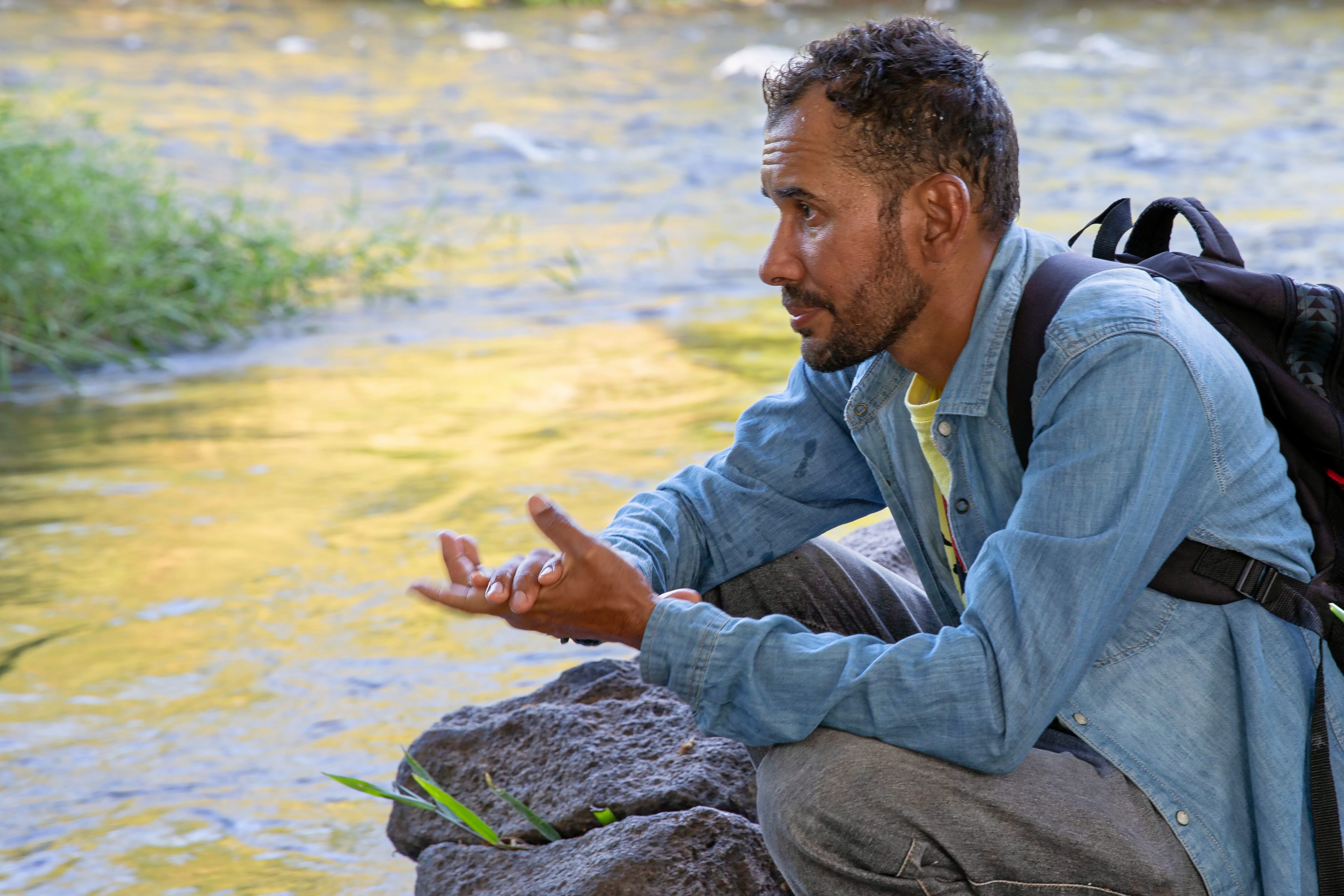
Marcos Rogério Beltrão dos Santos - environmentalist and local activist. Correntina, Bahia. © Thomas Bauer / Earthsight
Marcos Rogério Beltrão dos Santos - environmentalist and local activist. Correntina, Bahia. © Thomas Bauer / Earthsight
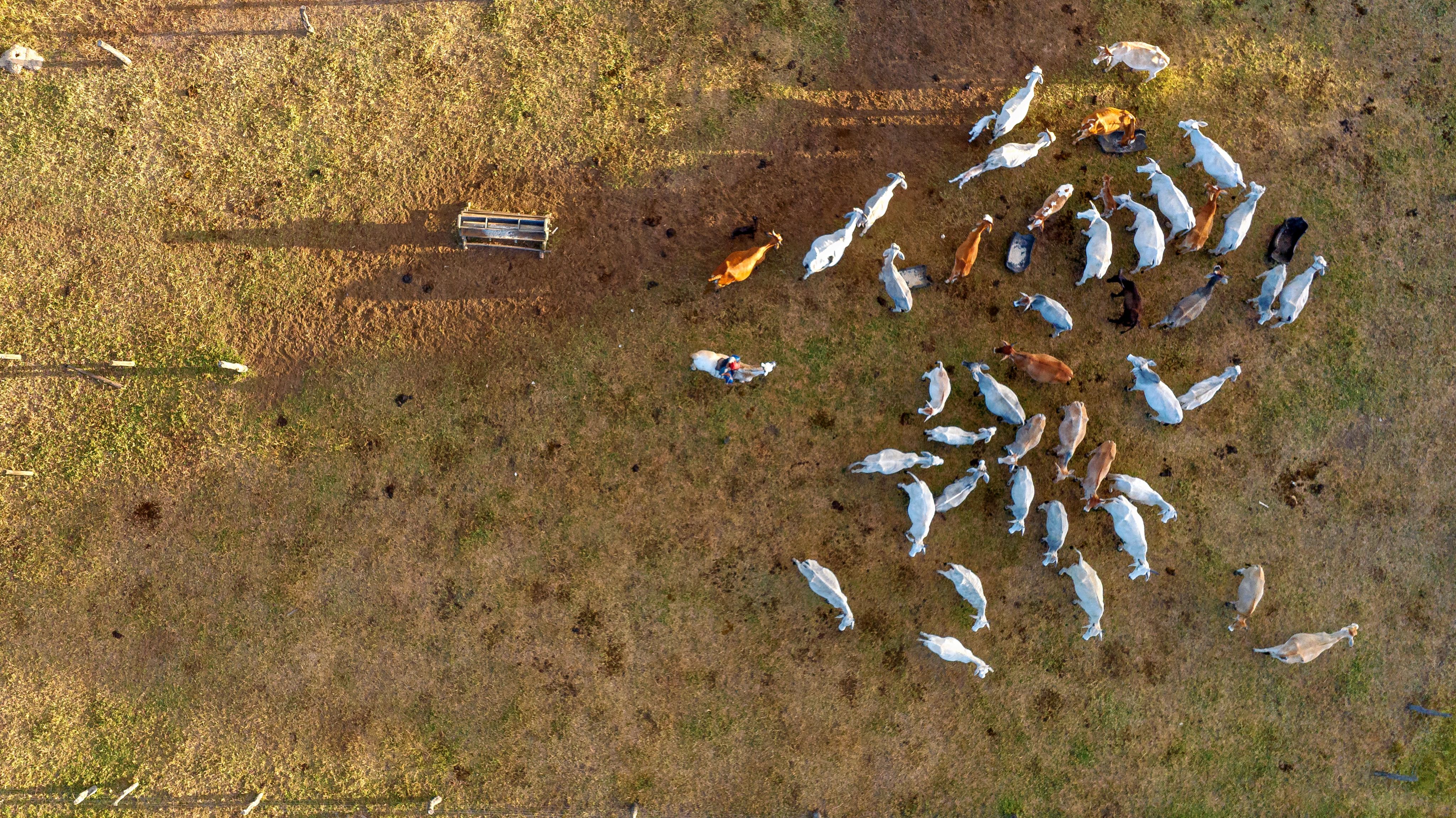
The first land grabbers paved the way for later waves of fraudsters and agribusinesses with few qualms about transforming stolen public lands teeming with wildlife into vast monocultures.32
Prodecer, a ‘development’ programme that received nearly US$700 million in funds from the Japanese government between 1985 and 1990,33 helped agribusinesses acquire low-cost arable land and access modern cultivation techniques, especially for soy production. Cotton, which is now grown in rotation with soy by most of the largest agricultural groups in the region, was introduced around the turn of the 20th to the 21st century.34
Both the federal and the state governments’ fervour for agribusiness expansion was abetted by Bahia’s neglect of its responsibilities towards the environment and traditional communities. Under Bahia’s 1989 Constitution, the state government had three years to map all public lands and ensure they were preserved, and that communities were granted rights to their traditional territories.35 To date, this process has not been completed.
"If the government were to reclaim all public lands in western Bahia there wouldn’t be any farms left because they were all fraudulently titled," adds dos Santos.36 The state's omission also violates Convention 169 of the International Labour Organisation, to which Brazil is a signatory.37 When it comes to environmental stewardship, Bahia’s government has condoned the worst abuses and allowed the Cerrado to be carved up by agribusinesses.38
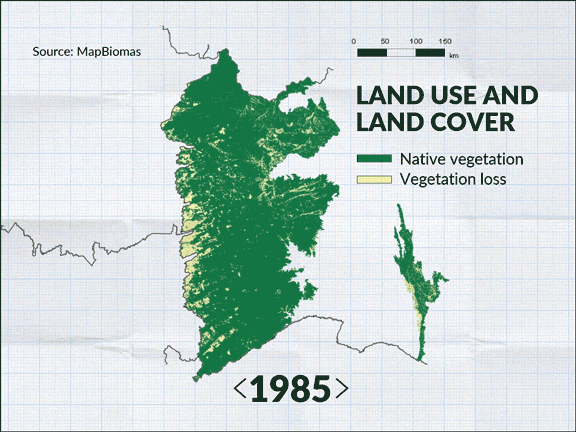
© Data provided by MapBiomas / IPAM, graphic by Earthsight.
© Data provided by MapBiomas / IPAM, graphic by Earthsight.
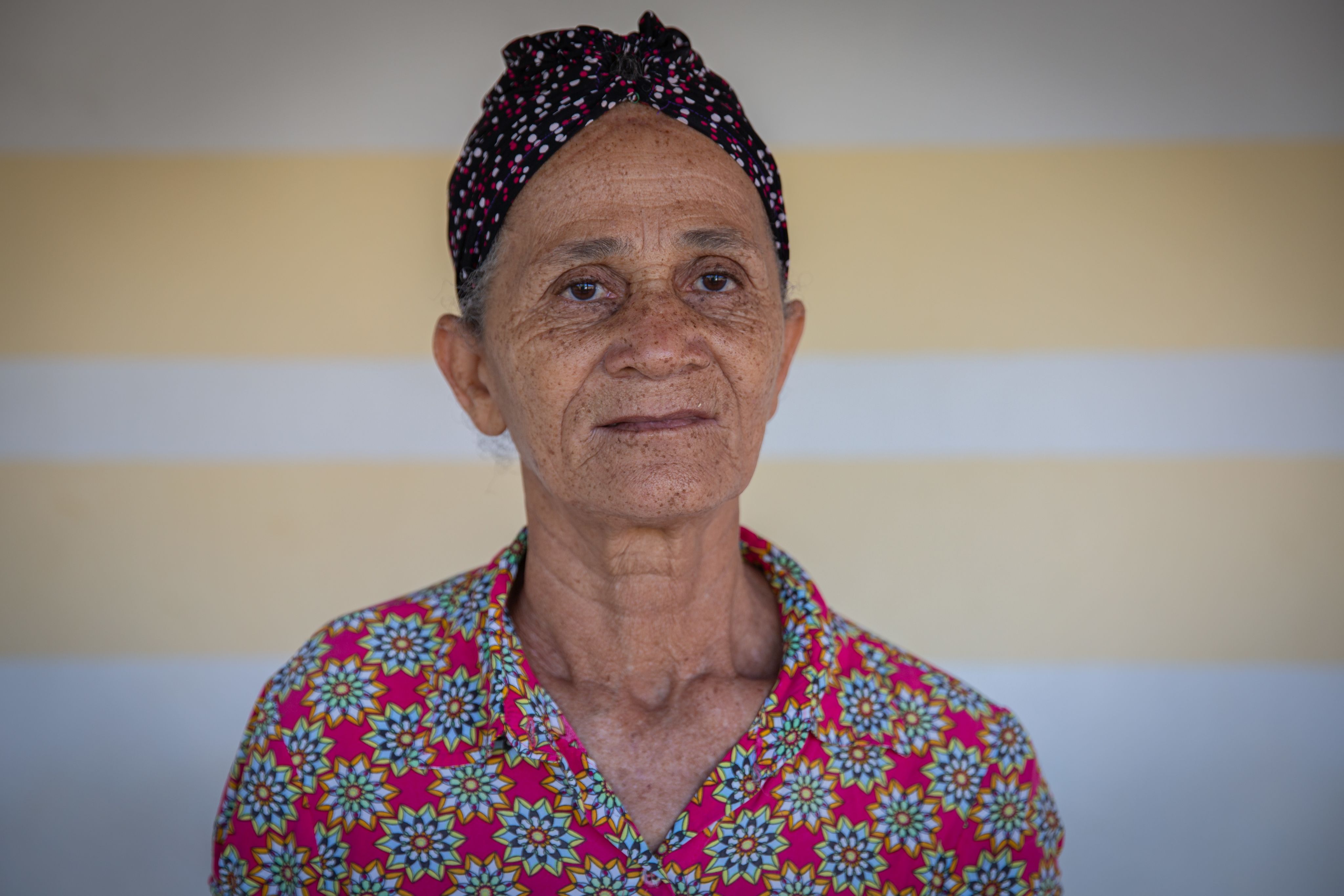
Catarina Lopes Leite, resident of the Cachoeira community in Formosa do Rio Preto, Bahia. © Thomas Bauer / Earthsight
Catarina Lopes Leite, resident of the Cachoeira community in Formosa do Rio Preto, Bahia. © Thomas Bauer / Earthsight
Handcrafted by local residents for generations and sold in urban centres, products such as pequi pulp, buriti oil and tucum ropes have become scarce with the disappearance of native species. "My grandmother, my aunts and I used to pick tucum in the hills to make rope. It was like a palm tree. When deforestation arrived, the tucum palms were gone, nobody finds them anymore"39 says Catarina Lopes Leite, 63, a resident of the Cachoeira community in Formosa do Rio Preto.
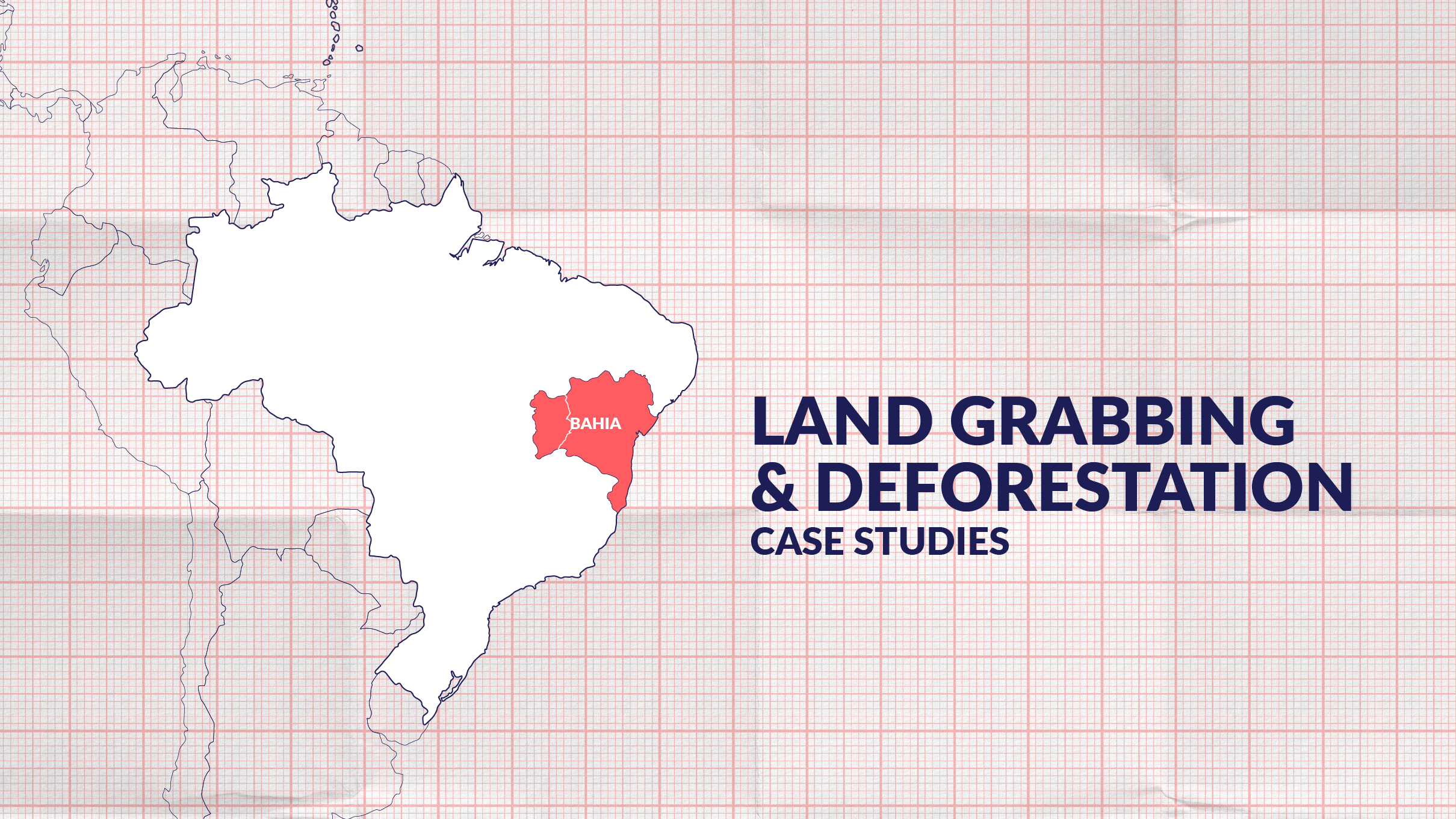
© Graphic by Earhsight
© Graphic by Earhsight
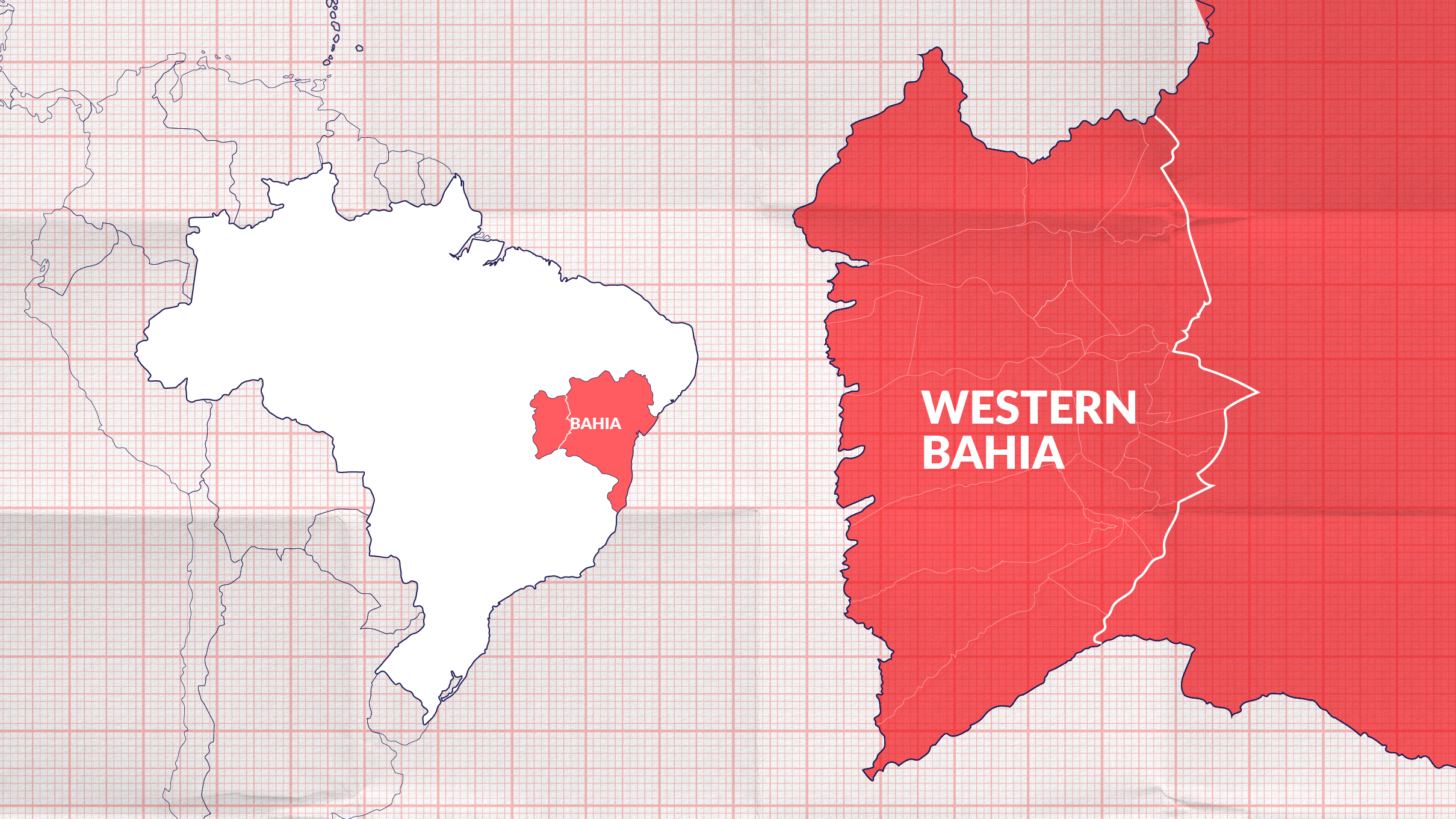
© Graphic by Earhsight
© Graphic by Earhsight
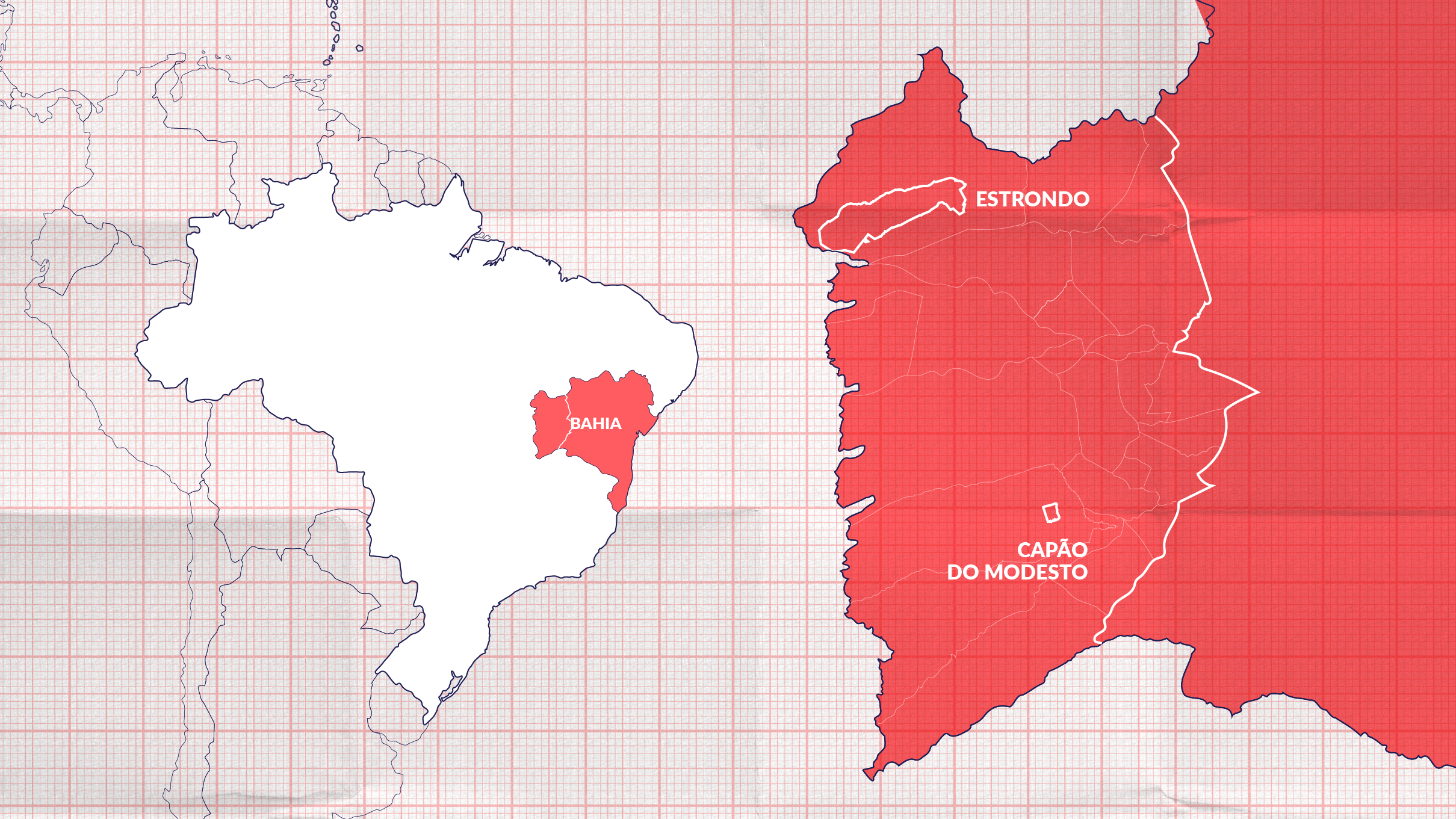
© Graphic by Earhsight
© Graphic by Earhsight
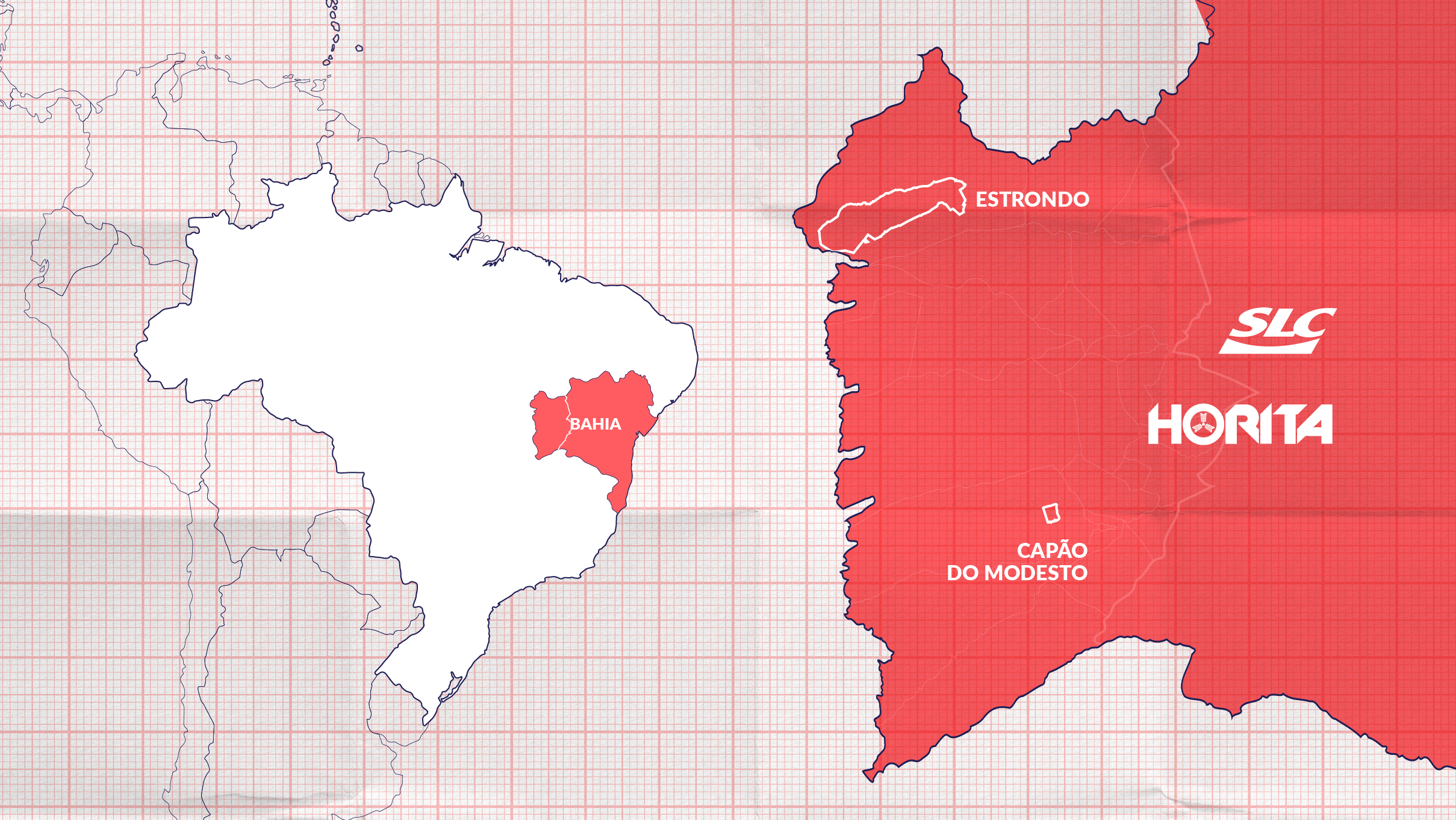
© Graphic by Earhsight
© Graphic by Earhsight
The two cotton giants eating up the Cerrado
For this report, Earthsight chose to focus on two case studies of land grabbing and deforestation in western Bahia, one in the north and one in the south, and two agribusiness giants responsible for them.
The cases are Estrondo and Capão do Modesto, or Capão for short. The companies are Grupo Horita (Horita Group) and SLC Agrícola.
Horita and SLC’s actions in western Bahia are not isolated cases. They are typical of the export-oriented industrial-scale agribusinesses that are devastating the Cerrado and its traditional communities. A study has found that, in 2020, 99 per cent of deforestation in the Cerrado was illegal, destruction caused by large-scale landowners representing only one per cent of all rural properties.40 Lucrative land speculation, state failure to demarcate and protect public lands, and Bahia government’s almost unconditional support for agribusiness expansion have resulted in widespread land grabbing and vegetation loss.41
Lopes Leite’s village of Cachoeira and six other communities are clustered together in 82,000ha of land, a small fraction of the hundreds of thousands of hectares they occupied until only four decades ago. A large part of their traditional land has been grabbed by the enormous agribusiness estate whose full name is Agronegócio Condomínio Cachoeira do Estrondo.42 Dozens of agribusinesses now grow soybeans, cotton and corn on a high plateau, known as chapada, that was once a forest and the hunting grounds of geraizeiro communities.
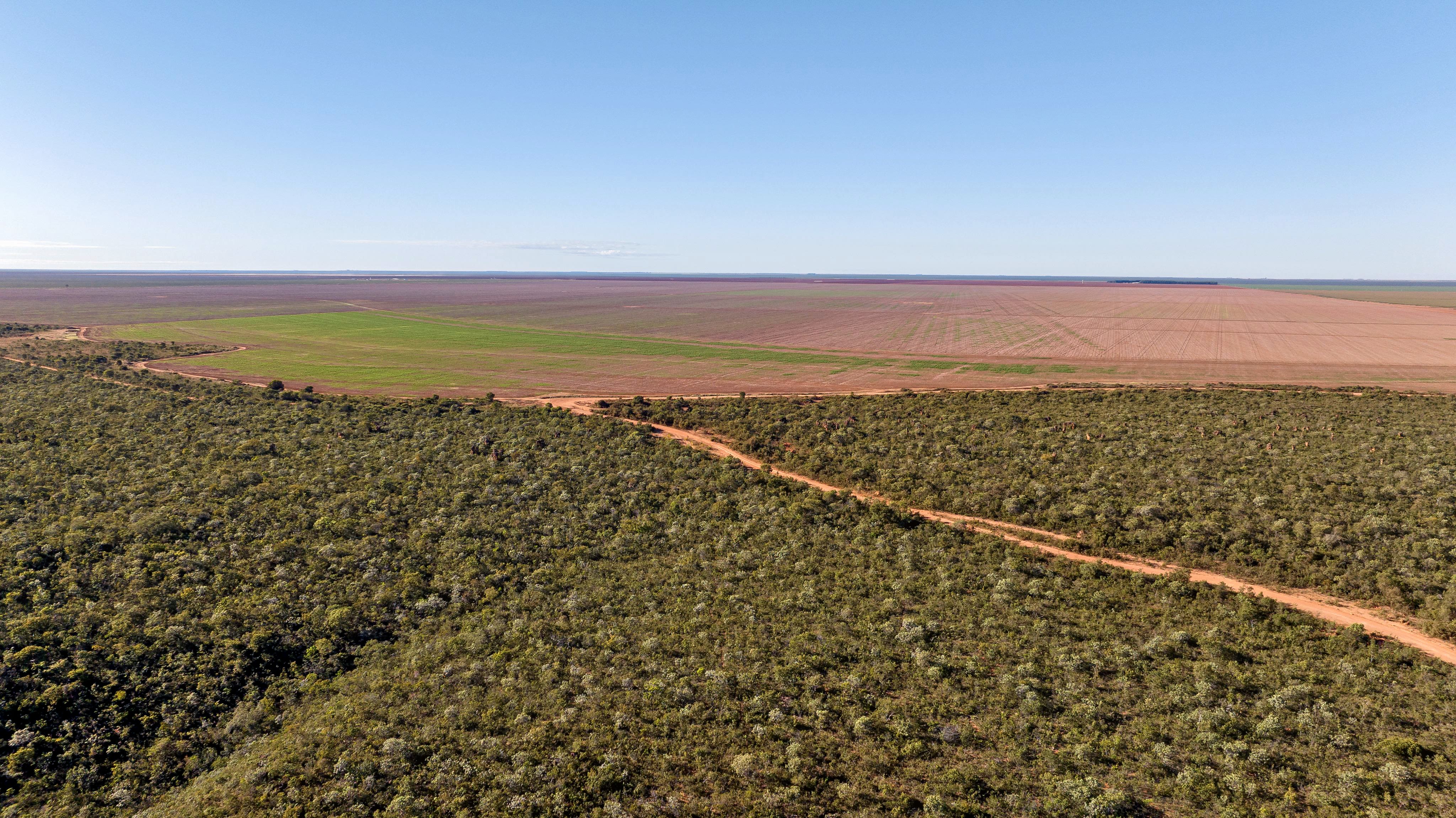
Limit between traditional community land and the Estrondo estate, Bahia. © Thomas Bauer / Earthsight
Limit between traditional community land and the Estrondo estate, Bahia. © Thomas Bauer / Earthsight
The estate currently extends for 320,000ha,43 an area almost four times the size of New York City.44 It covers not only the deforested chapada but also the surrounding low valleys still inhabited by the geraizeiro communities. Implicated in illegal deforestation, armed violence, corruption, and labour conditions analogous to slavery, the project has been named among Brazil’s most notorious cases of land grabbing.45, 46
The largest cotton and soy producer at Estrondo is the Horita Group.47 Originally from Paraná state in southern Brazil, the brothers Walter, Ricardo and Wilson Horita arrived in Bahia in 1984. After initially acquiring 1,200ha of farmland, today the Horita Group owns at least 140,000ha of land spread over six municipalities in western Bahia.48
The company is Brazil’s sixth largest cotton producer49 with an estimated output of 180,000 tonnes in the 2022-23 crop season.50 The Horita Group exports 70 per cent of the cotton it harvests.51 The Horitas are reportedly among the wealthiest families in Brazil.52 They grow cotton, soy and other crops on approximately a third of Estrondo, or around 100,000ha.53
The other major player in western Bahia at the centre of this investigation, SLC Agrícola, is Brazil’s largest cotton producer.54 The company arrived in the region in the early 2000s, and currently grows crops on 147,000ha in six municipalities, 44,000ha of which are cotton fields.55
SLC is headquartered in Rio Grande do Sul, Brazil's southernmost state. It belongs to the Logemann family, one of the wealthiest in the country, with assets worth more than BRL7.2 billion (US$1.4 billion).56 The group, with a net income of over BRL1 billion (US$271 million) in 2022,57 also owns properties in five other Brazilian states, all part of the Cerrado biome.58
SLC has been named one of the top deforesters in the Cerrado.59 The Norwegian pension fund divested from SLC a few years ago due to the company’s links to deforestation.60 The company has been repeatedly linked by NGOs to unsustainable forest loss in Brazil.61
As this report will show, the Horita Group and SLC are linked to land grabbing and violence against the Capão do Modesto community in Correntina. Environment agencies have accused the two companies of illegal deforestation across western Bahia.62 Meanwhile, Walter Horita has even been embroiled in one of the most shocking corruption scandals in Brazil’s recent history.
SLC Agrícola and the Horita Group epitomise the dire environmental and human impacts large commodity producers have had in western Bahia. The details of their misdeeds in the region should shock anyone contemplating doing business with them. Yet their cotton reaches global markets and global brands. The fashion industry is complicit in their transgressions, and is failing its responsibilities on an epic scale.
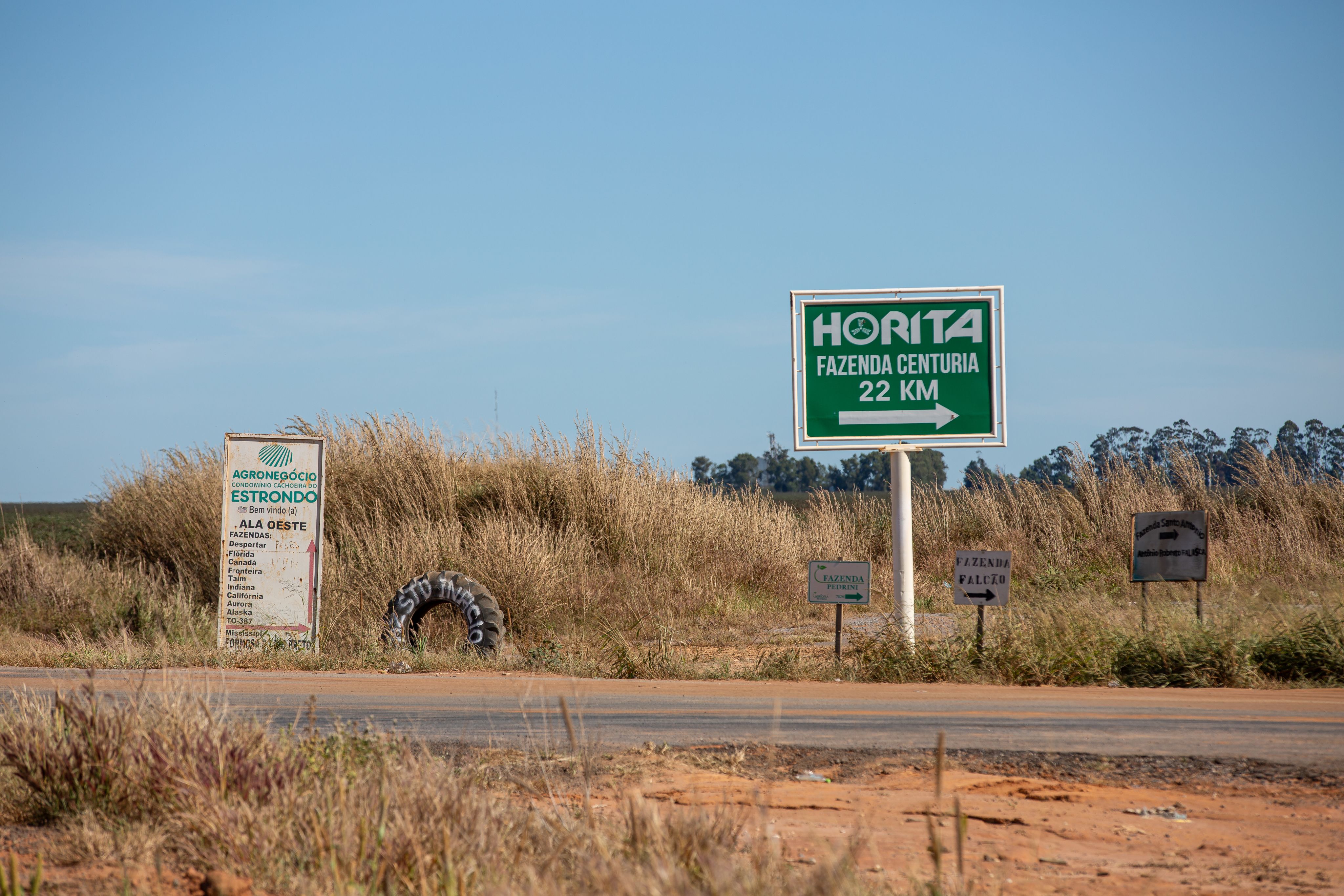
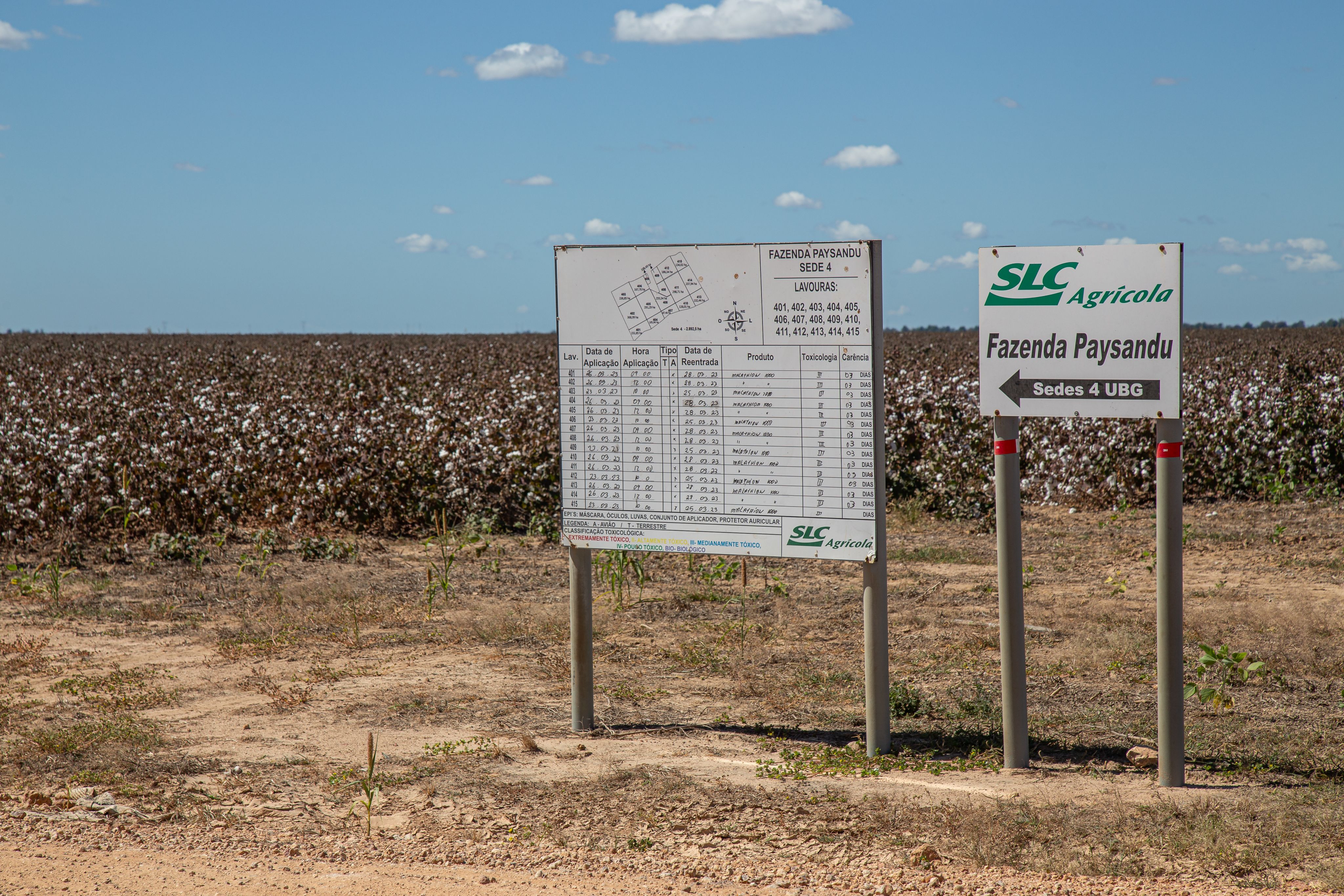
Chapter 2:
Land grabbing, violence and corruption
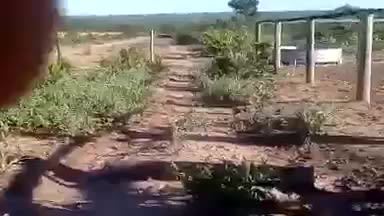
Estrondo: the 4,000 square kilometre land grab
"In the beginning we heard the sound of machinery. As time went by, they moved closer, expanding their crops, building headquarters and the deforestation on the chapada grew."63 Jossone Lopes, a Cachoeira resident, remembers when the first farmers arrived. The crops and headquarters he mentions are part of what came to be called Estrondo.
It was corrupt and illegal from the start.64
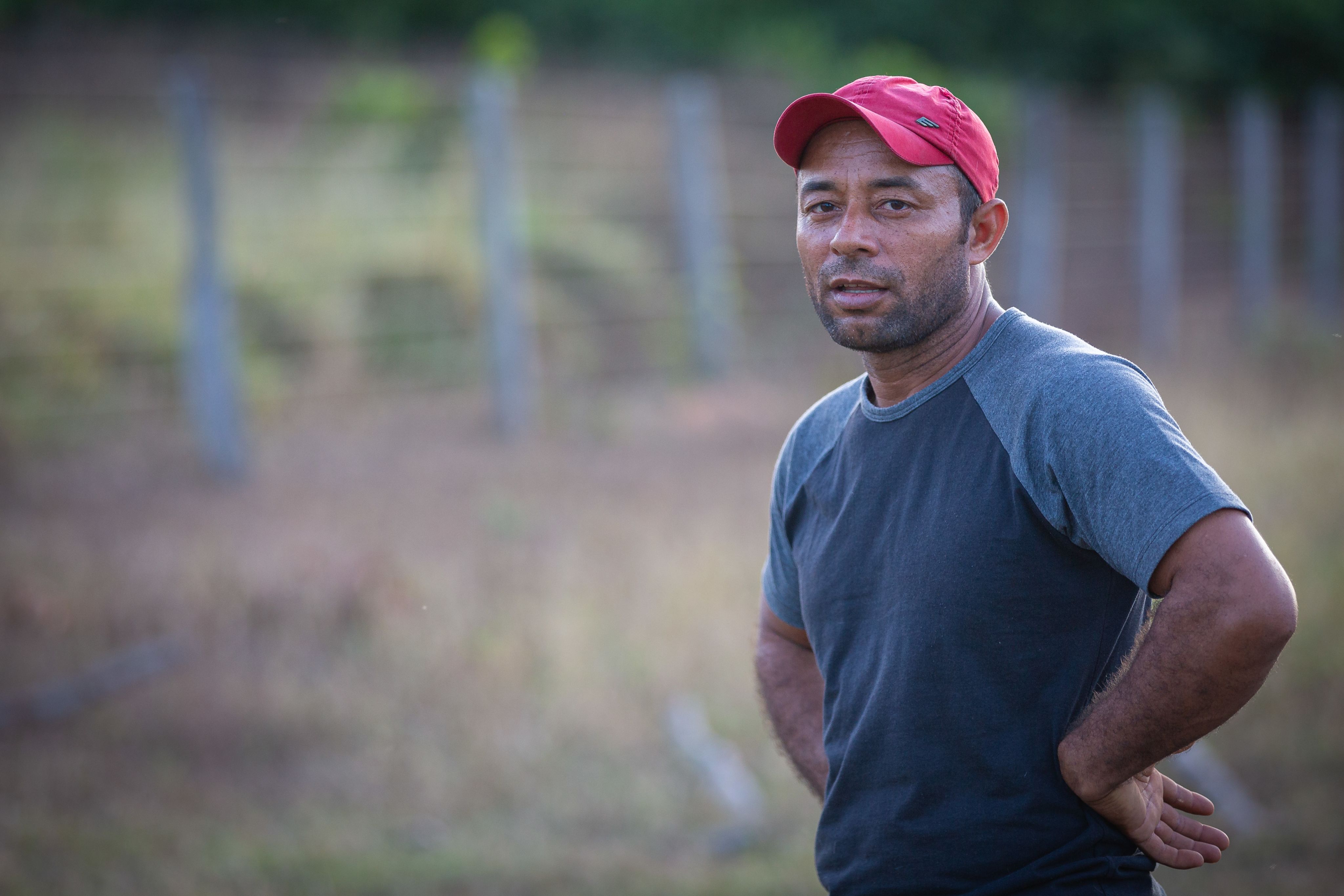
Jossone Lopes, resident of the Cachoeira community in Formosa do Rio Preto, Bahia. © Thomas Bauer / Earthsight
Jossone Lopes, resident of the Cachoeira community in Formosa do Rio Preto, Bahia. © Thomas Bauer / Earthsight
In June 1981, a company by the name of Delfin Rio purchased a property extending for 405,000 hectares (ha) in Bahia65 – a vast tract of precious Cerrado ecosystem larger than New York’s Long Island. Delfin Rio later registered the plot of land as Agronegócio Condomínio Cachoeira do Estrondo – or ‘Estrondo’ for short.66 Delfin Rio’s acquisition was suspect for a number of reasons. The property’s land title made no reference to its original ownership67 – something which is illegal under Brazilian law.68 The land title number also didn’t match that of the title held by the firm from which Delfin had purchased the land – a major red flag.69
A land title number must carry over when the property changes hands.70 Alterations to these numbers are seen as a strong indication of fraud. “This is how these fake land titles appeared in the 1970s and 80s,”71 explains André Sacramento, a lawyer with the Rural Workers’ Lawyers Association (AATR). Further analysis by Bahia’s Public Prosecutor’s Office (MPBA) revealed other irregularities associated with the land title, including a lack of registered boundaries or size. According to MPBA, all this suggests “flagrant illegality.”72, 73
Estrondo started out as a single large estate owned by Delfin Rio and a couple of other affiliated companies. However, over the years different agribusinesses have leased or bought plots of land within Estrondo, creating a complex puzzle of different actors exploiting the area. “When we talk about Estrondo, it sounds like it is just one company. That's not the reality. Estrondo brings together dozens of properties and various commodity producers,”74 explains public prosecutor Eduardo Bittencourt. Nonetheless, Estrondo has retained a central administrative structure in charge of running certain aspects of the whole estate. This is the ‘Estrondo’ that provided comments to Earthsight highlighted below.
Bittencourt knows Estrondo well. In 2012, MPBA launched a public civil inquiry to gather evidence on land grabbing and the conflict with local geraizeiro communities. "First and foremost, we want to guarantee the protection of the communities’ territories,"75 he says.
Today, there are 365 different land titles within the estate’s now somewhat reduced size of 320,000ha.76 One thing all these agribusinesses have in common – aside from suspect legal rights77 – is an aggressive attitude to those whose land they have stolen.
Harassment and intimidation
More than 10 years ago communities started experiencing intimidation and harassment by armed men who allegedly worked for the farmers. On several occasions, the residents’ cattle went missing or were wounded.78 Estrondo’s owners and tenants imposed a number of measures to heavily restrict geraizeiros’ movements and activities, especially cattle driving, in the valleys they inhabit: checkpoints with armed men, fences encircling communities’ houses, and deep trenches dug throughout their territories.79 The aim was to keep geraizeiros out of ‘Estrondo property’.80 Criminalisation followed. Some community members had their houses searched by the police without warrant.81 A few were detained and taken to a police station.82
Estrondo’s attempts to confine the geraizeiros to small areas and restrict their traditional activities were not linked to a desire by the farmers to transform the communities’ valleys and veredas into plantations. Instead, Estrondo has long had something else in mind for these well-preserved places.
The Brazilian Forest Code requires all rural properties in the Cerrado to preserve at least 20 per cent of their total area.83 These areas of protected habitat are known as legal reserves. In breach of the spirit, if not the letter, of this law, and in order to enable them to clear all their productive area, agribusinesses at the estate started assigning the communities’ valleys – which also fell within the area claimed by Estrondo – as their reserves. Estrondo has claimed more than 50,000ha of community land for such purposes.84 This is the systematic conversion of community lands into wildlife reserves, suddenly stripping away the rights that low-impact communities have enjoyed for generations. The Horita Group alone holds over 22,000ha of legal reserves at Estrondo, part of which overlaps the places inhabited by the communities.85
The manoeuvre has been used throughout western Bahia and has become known as ‘green land grabbing’. "It is an area that, in the eyes of landowners, is preserved, ready to be converted into a legal reserve. But the communities live there,"86 explains Sacramento. The imposition of legal reserves on their land prevents families from carrying out subsistence activities and, in the worst cases, from remaining on the land.87 This violates their rights and threatens their existence. It also allows the agribusiness giants to clear much larger tracts of their other land than would otherwise be possible.
But the communities have fought back. In April 2017, they filed a lawsuit against Estrondo contesting its land titles and reporting the violations suffered since 2011. The following month, a judge ruled that the communities had the right to make full use of their traditional territories.88 The following year, Bahia’s government recognised the communities’ rights over 82,775ha of land.89 A Manhattan-sized chunk of the Long Island-sized land grab would need to be made fully available to the communities again.
The agribusinesses’ reaction was swift. Estrondo dug a 1.8-mile trench on communities’ lands to hinder residents’ and cattle movement.90 In February 2019, community member Jossone Lopes was shot by security guards working for Estrondo. He was hit in his left leg while attempting to recover cattle confiscated by the guards, but managed to escape with the help of his companions.91 It wasn’t until December 2019 that Estrondo’s security checkpoints on the communities’ valleys were finally deactivated.
Possibly the starkest illustration of the egregiousness of land grabbing at Estrondo is the somewhat surprising fact that, after years of turning a blind eye, Bahia’s authorities have finally decided to take action. In October 2018, the attorney general’s office launched a lawsuit against Estrondo to recover the lands for the state. In a 2021 court file, the attorney general concluded that Estrondo’s land titles showed clear evidence of illegalities.92 Alluding to plots of land that eventually became Estrondo, he argued: "As if by magic, [the land grabbers] managed the incredible feat of transforming 36,000ha into the fantastic sum of 382,354ha.”93 The lawsuit is ongoing.
In a letter sent to Earthsight, Estrondo said the use of all the estate’s land is legal and that no land grabbing has ever taken place. It further stated it has attempted to reach a “definitive, balanced and just” settlement with the communities and public prosecutors. Estrondo denied restricting communities’ movements and said it opposes the use of violence. It accused community members of criminal acts against its properties and employees. It also said the estate covers an area of 205,000ha.
In comments sent to Earthsight, the Horita Group denied it owns properties within Estrondo.94 However, satellite imagery, land titles, court documents and plenty of other evidence seen by Earthsight clearly demonstrate that the Horita Group does in fact own farms within Estrondo.95 MPBA’s public inquiry, for example, names the company among the parties seeking an agreement on the conflict. On 10 August 2022, MPBA was contacted by Horita’s representatives requesting access to the inquiry.96
"With a final legal solution to Estrondos land grabbing still elusive, prosecutor Bittencourt has coaxed the communities and farmers to negotiate a co-existence agreement.97" This is illustrative of the state’s failure to put an end to decades of land theft and ill-gotten profits.
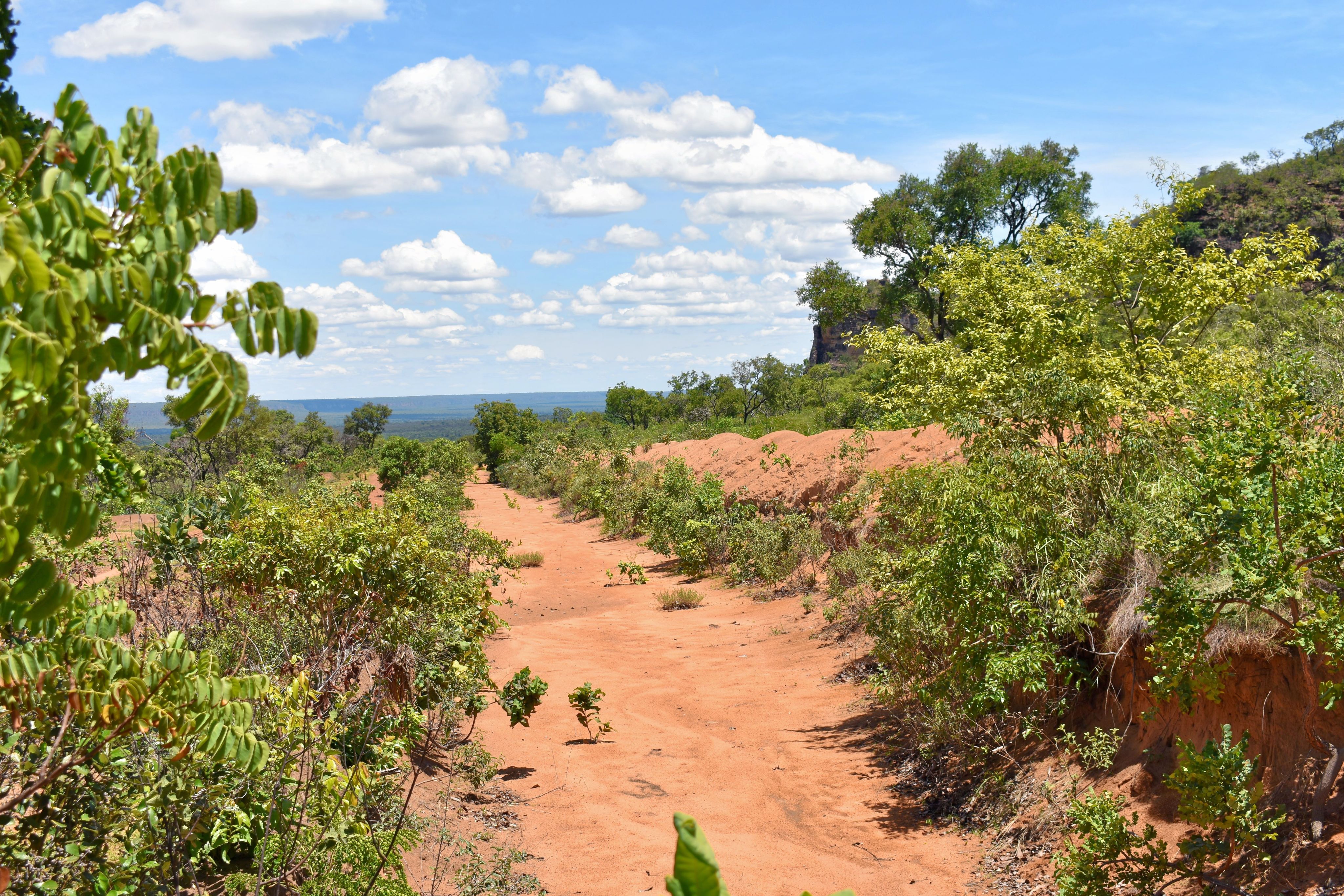
Capão do Modesto: “One of the most serious land grabbing cases in Bahia”
At the fundo e fecho de pasto community of Capão do Modesto, 19 private properties overlap its 11,200ha territory.98 Most of these plots were sold to agribusinesses – to be used as ‘paper’ legal reserves, enabling additional deforestation to take place elsewhere – by a poor and illiterate couple who signed the sale papers with their thumbprints.99 Analysis produced by the Rural Workers’ Lawyers Association revealed the couple had supposedly inherited 16,000ha of land in 1960, but there are no records of the deceased person’s inventory or demonstrating that they were his heirs, which are legal requirements.100 The analysis also showed the couple had never lived in the area. Residents at Capão do Modesto told Earthsight they suspect the couple were used as a front for a land grabbing scheme.101
Another red flag is the suspiciously low prices the farmers paid for the plots. In 2007 Luiz Carlos Bergamaschi, a major cotton farmer in western Bahia, current president of the Bahia Association of Cotton Producers (Abapa) and owner of 14 plots within Capão do Modesto, acquired a 90-ha property for BRL3,500 (US$1,600).102 This amounts to less than BRL38 (US$17) per hectare. None of his remaining 13 properties within Capão do Modesto cost him more than BRL361 (US$166) per hectare.103, 104 Rural properties in western Bahia were valued at between US$2,500 and US$4,000 per hectare at the time.105 Studies have suggested that excessively low prices paid for land in Brazil may be evidence of land grabbing.106
The same phenomenon of green land grabbing observed at Estrondo is what is at play at Capão do Modesto. Landowners have not acquired properties there to grow crops, but to set them aside as legal reserves for farms located elsewhere.107
It is no coincidence that cotton producers are claiming areas overlapping Capão do Modesto or the communities’ lands in Formosa do Rio Preto as their legal reserves. While the practice has been legal for decades, agribusinesses’ ability to locate legal reserves away from their farms has gained further impetus in recent years, following changes to Brazil’s Forest Code and Bahia’s environmental laws.108, 109 Large landowners throughout western Bahia have seized on this opportunity, which until very recently allowed them to completely clear their farms of native vegetation.110
However, experts interviewed by Earthsight are categorical about the harm this can cause: “The Cerrado is made up of several ecosystems. When farms and their legal reserves are in different areas the preservation of those ecosystems most affected by large-scale farming – which tends to be concentrated where meadows were once abundant – is hampered. Another acute problem is that much of the agribusiness activity in western Bahia is located on top of the Urucuia, Brazil’s largest aquifer. If these farms’ legal reserves are elsewhere, the aquifer is prevented from being replenished by the natural processes that only native vegetation can enable,” explains environmentalist dos Santos.111
Bergamaschi told Earthsight he had paid “market prices” for his properties at Capão. He denied they are illegal or linked to land grabbing, and emphasised they have all been duly registered with the relevant authorities.
Abapa’s president is not the only large cotton producer to be implicated in murky land deals at Capão do Modesto. The Horita Group is also accused of green land grabbing of the community’s lands.112 In 2009 it acquired Fazenda Alegre, a 2,169-ha property at Capão used as legal reserve for Fazenda Sagarana, a cotton farm nearly 150km (93 miles) away.113 Sagarana itself has been caught up in wrongdoing. In 2019 Ibama embargoed over 250ha of the farm over the cultivation of transgenic cotton on the buffer zone of a conservation area (the embargo has since been lifted).114 The Horita Group denies that Fazenda Alegre overlaps public or traditional communities’ lands.
SLC is equally tangled up in accusations of land grabbing at Capão. While it does not own properties there, a plot at Capão do Modesto known as Tabuleiro VII is the legal reserve for cotton and soy farms the company leases further west.115
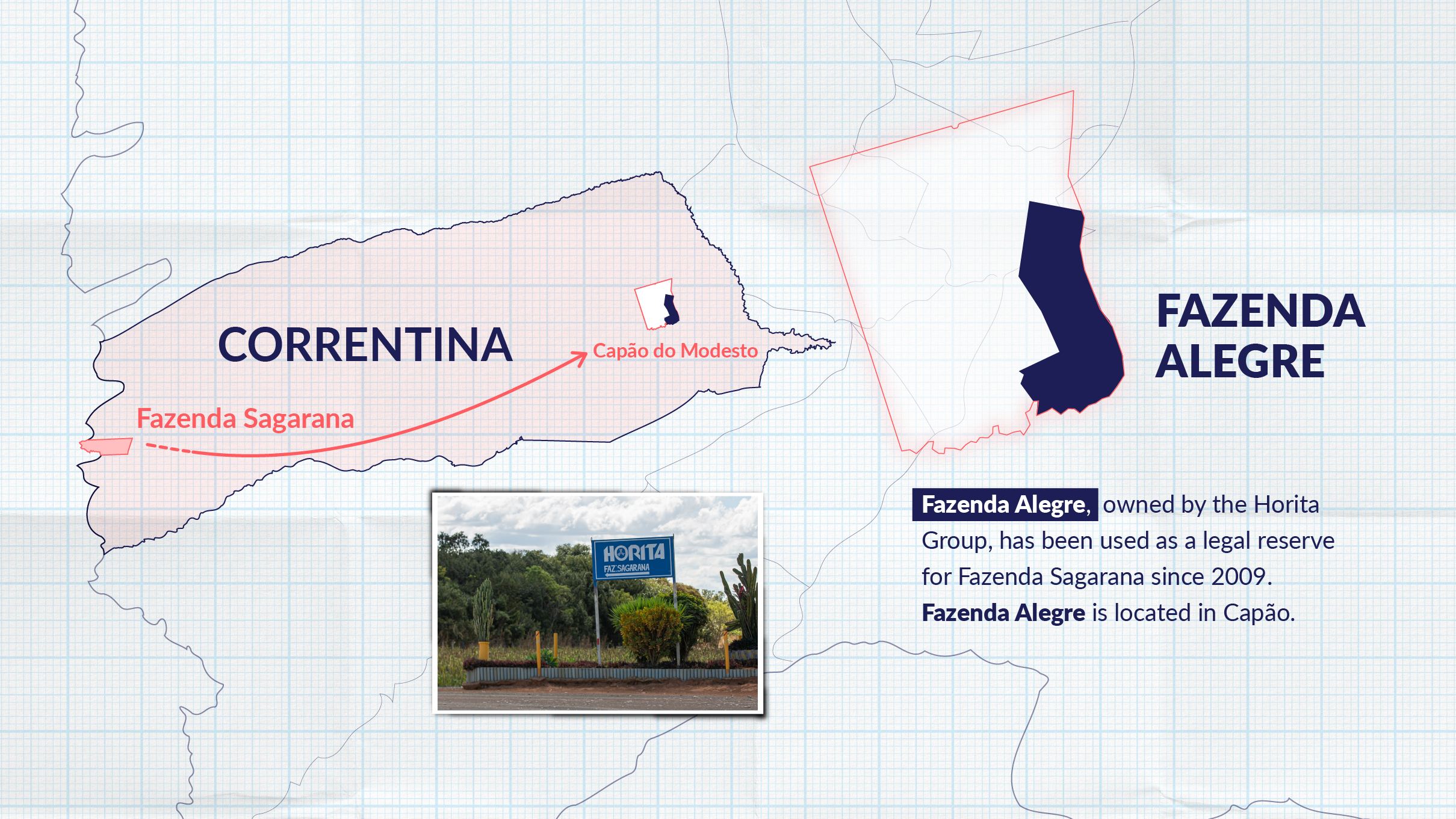
© Graphic by Earthsight
© Graphic by Earthsight
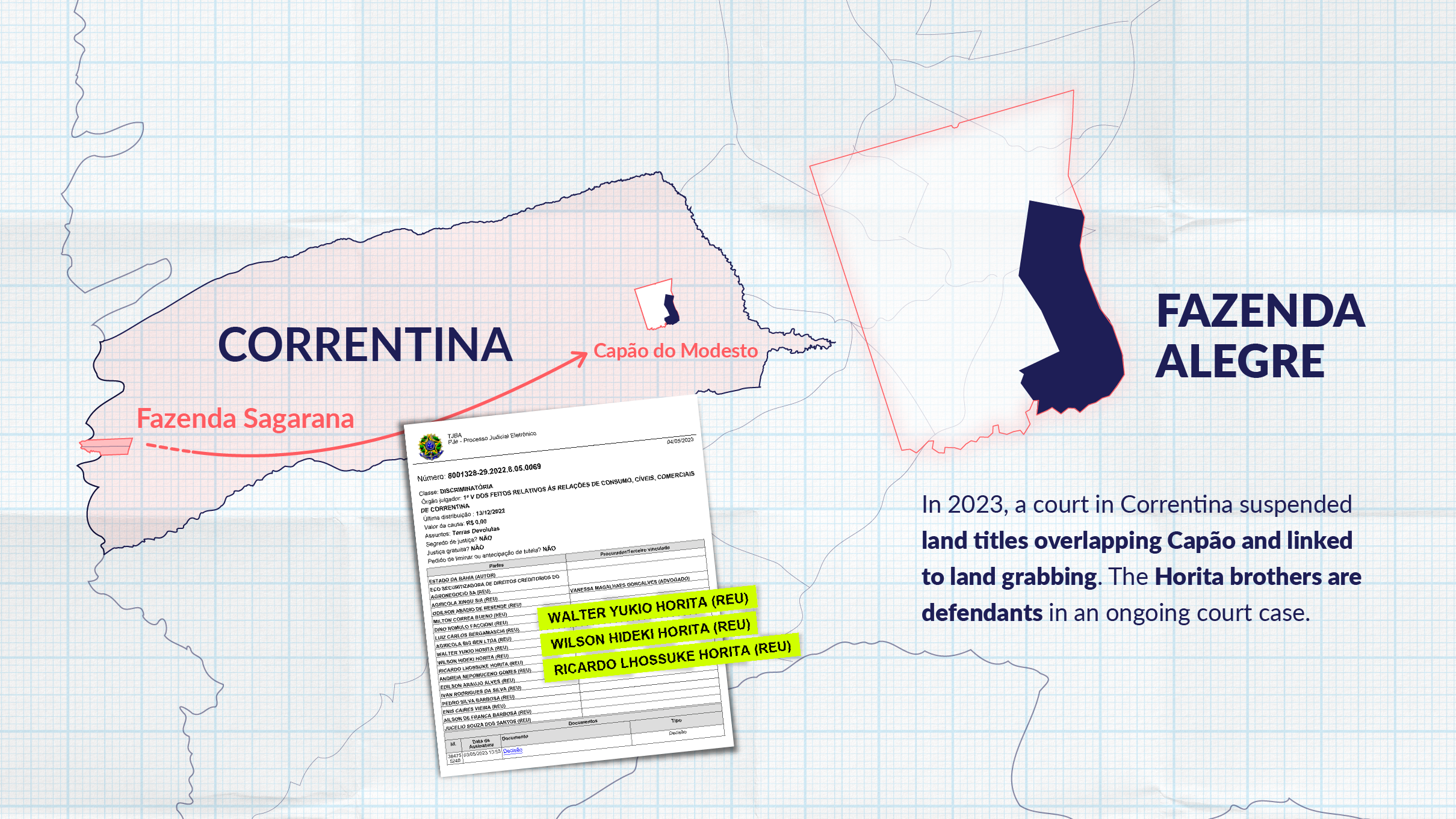
© Graphic by Earthsight
© Graphic by Earthsight
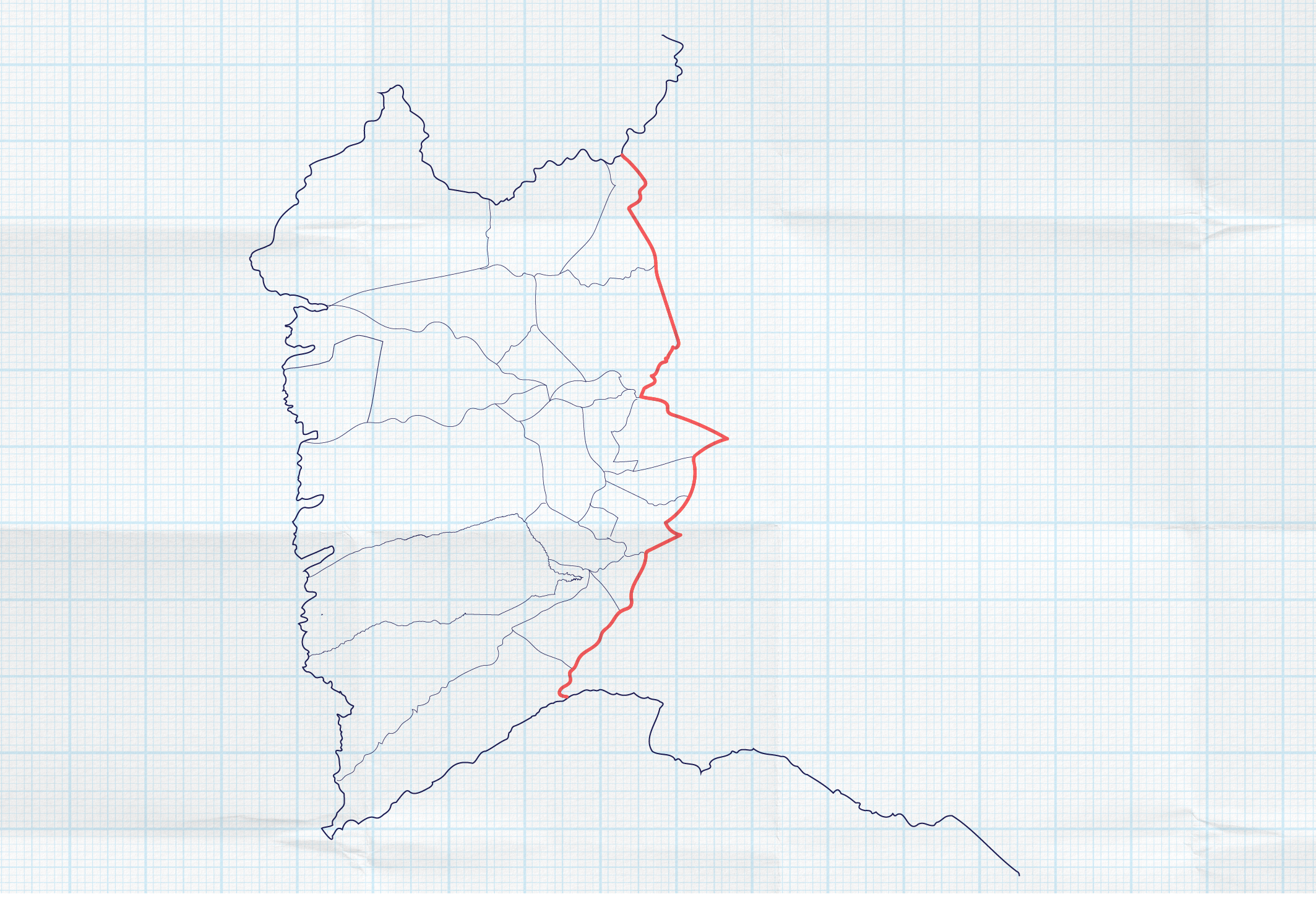
© Graphic by Earthsight
© Graphic by Earthsight
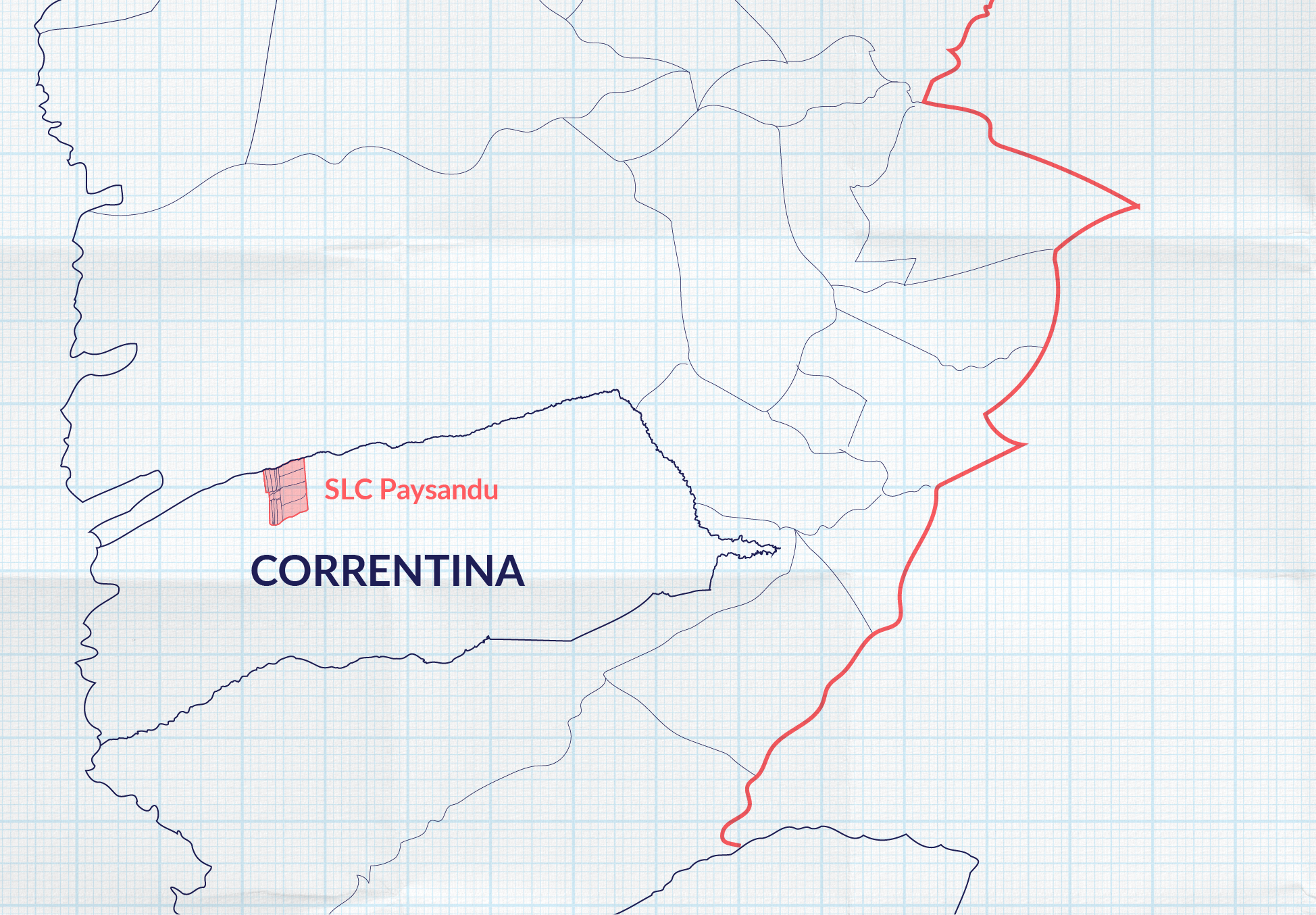
© Graphic by Earthsight
© Graphic by Earthsight
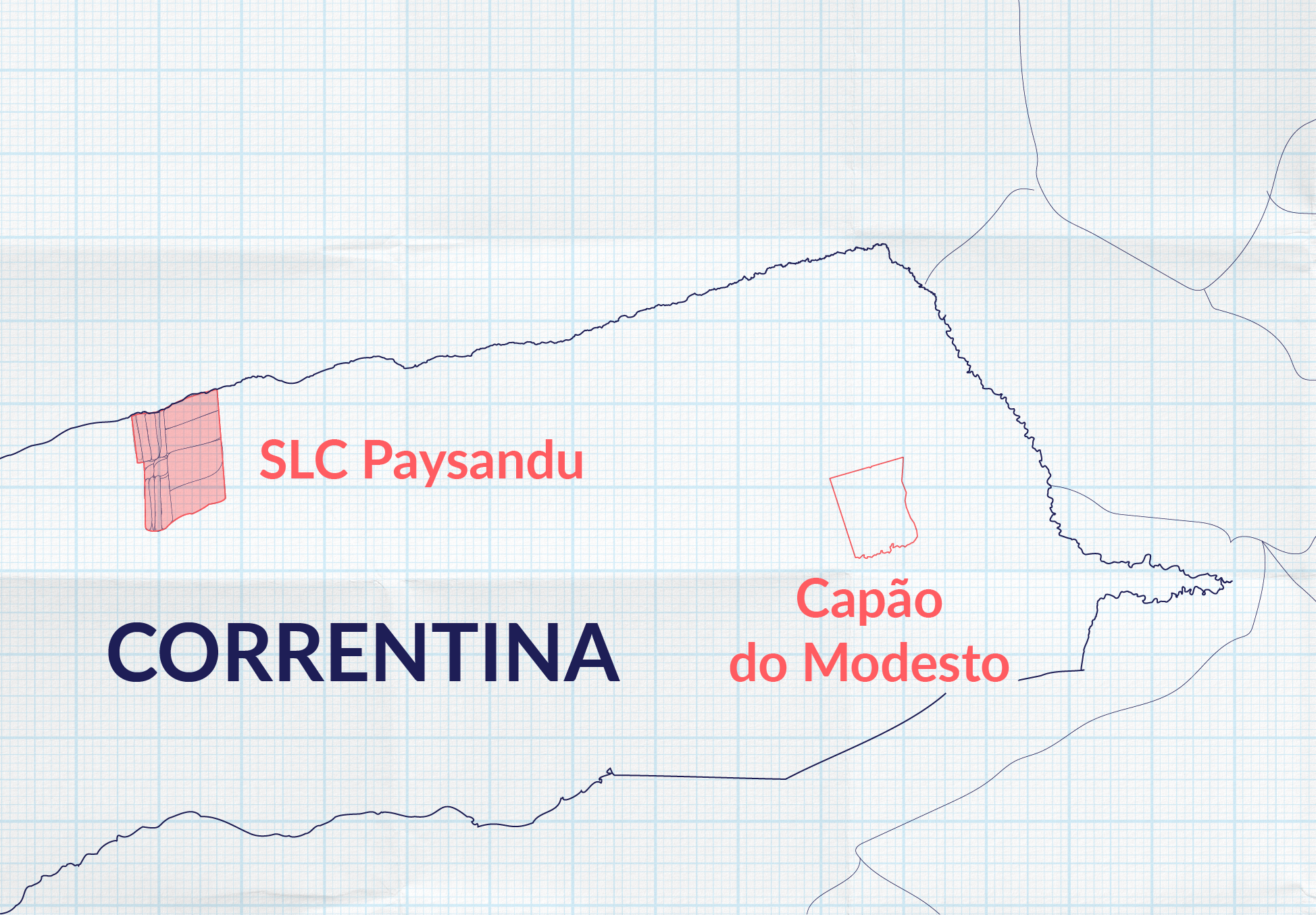
© Graphic by Earthsight
© Graphic by Earthsight
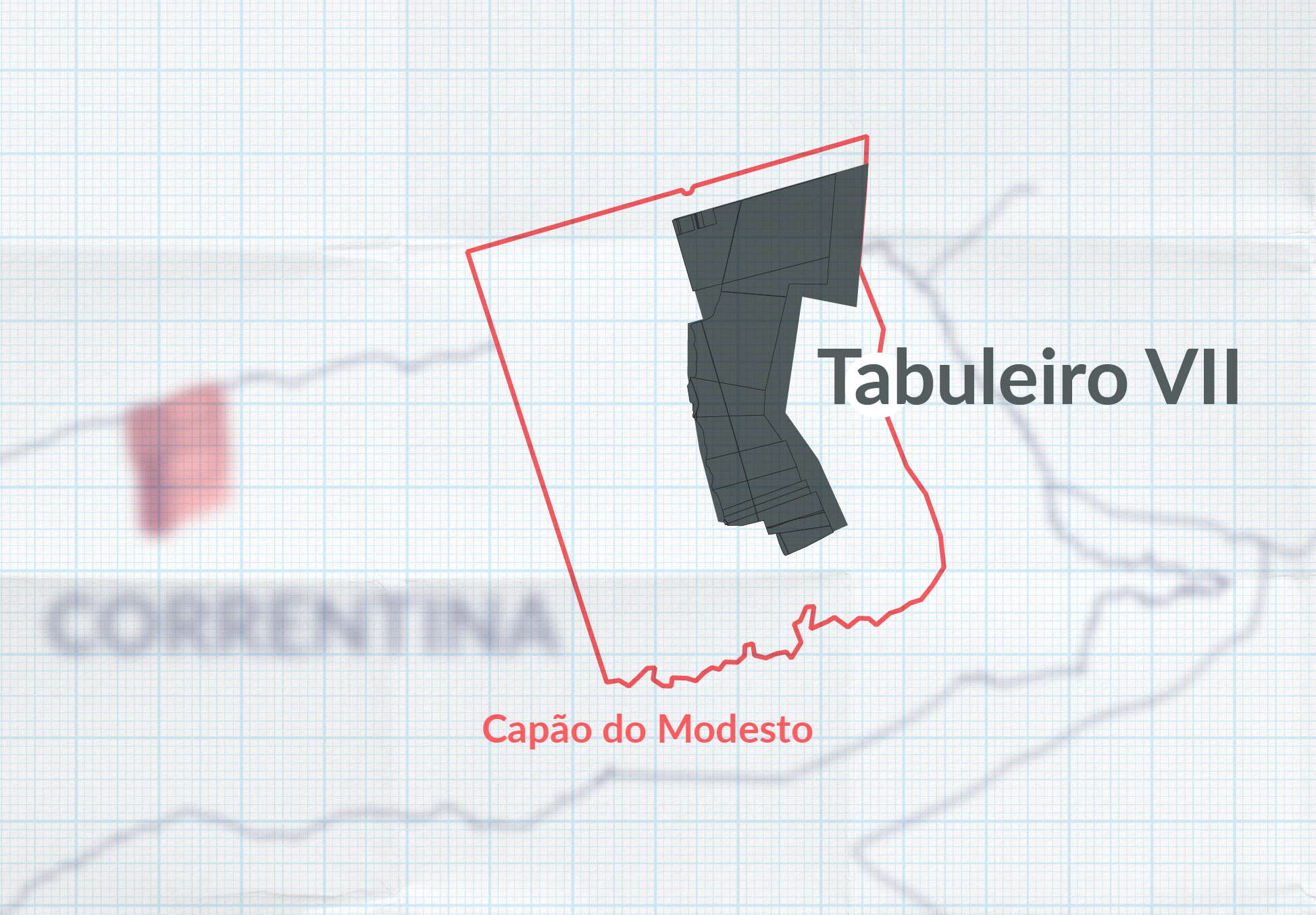
© Graphic by Earthsight
© Graphic by Earthsight
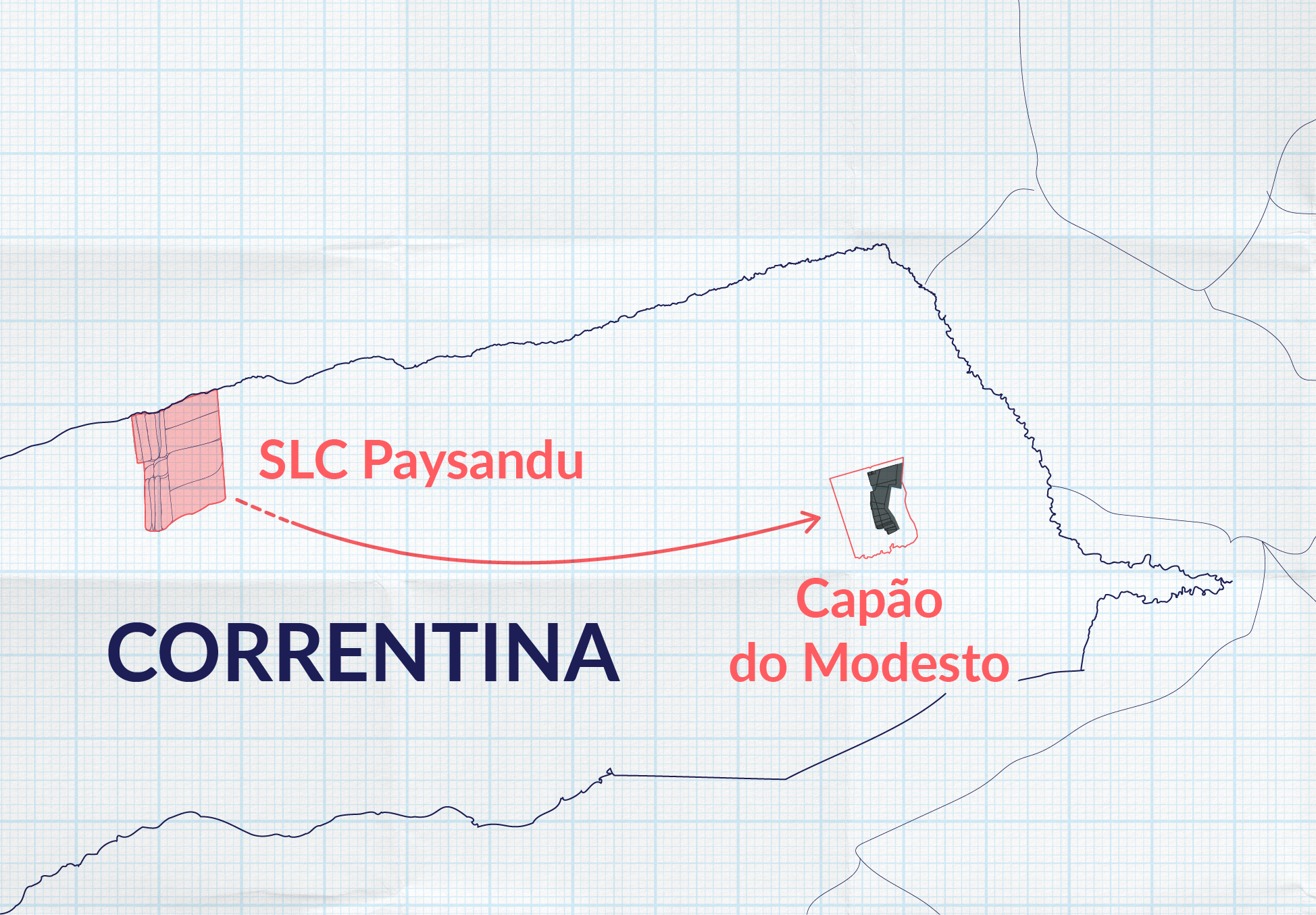
© Graphic by Earthsight
© Graphic by Earthsight
In Correntina, SLC leases a group of farms called Paysandu.
A plot at Capão do Modesto known as Tabuleiro VII is the legal reserve for Paysandu.
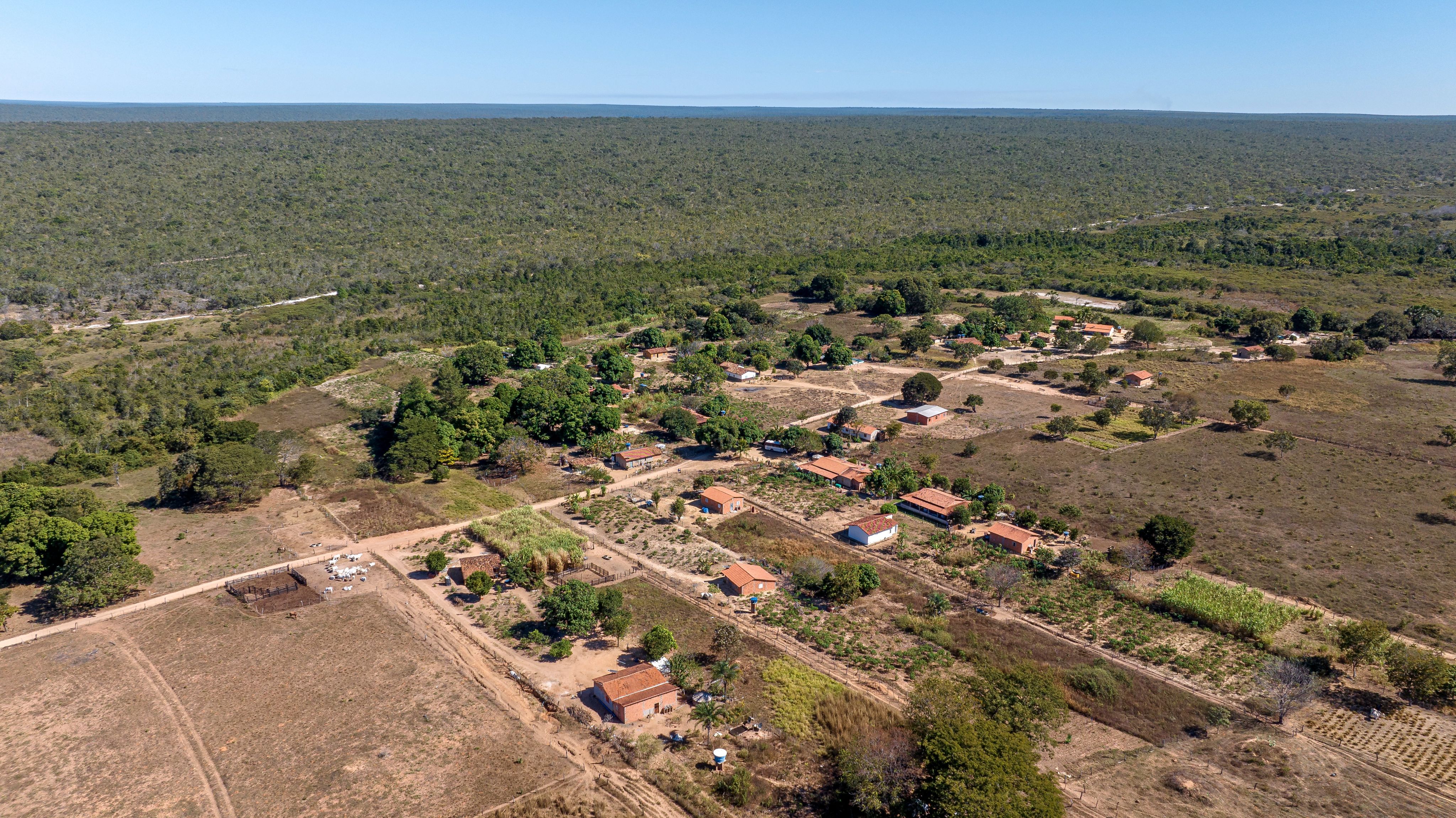
Capão do Modesto community Correntina, Bahia. © Thomas Bauer / Earthsight
Capão do Modesto community Correntina, Bahia. © Thomas Bauer / Earthsight
Cross-referencing documents provided by Bahia’s environment agency (INEMA) with land titles issued by Correntina’s notary office confirms the connection.
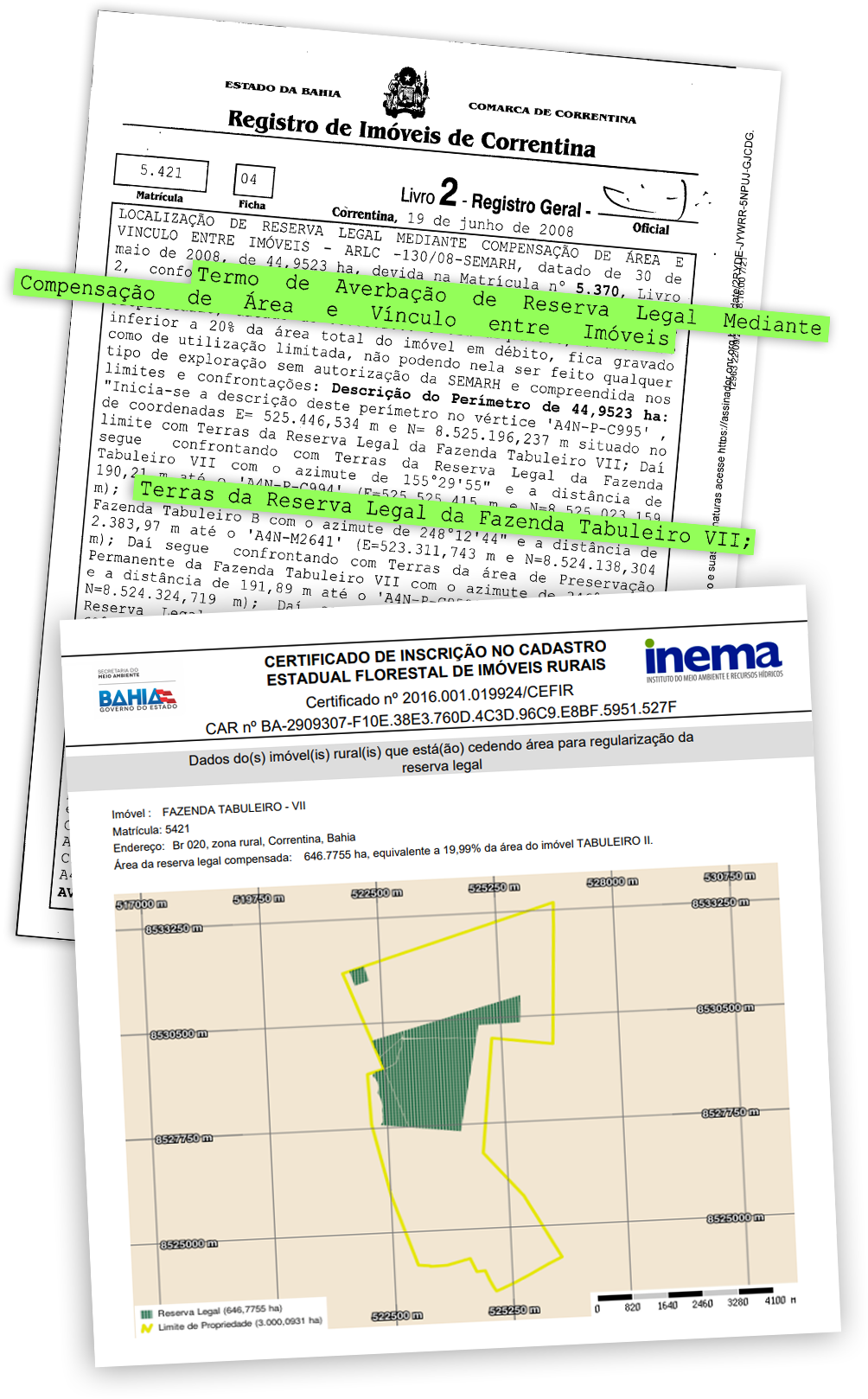
SLC denies that Tabuleiro VII is related to its leased farms.116 But evidence seen by Earthsight suggests otherwise. Cross-referencing data and maps provided by Brazil’s Rural Environment Registry (CAR)117 and Bahia’s environment agency (Inema)118 with land titles issued by Correntina’s notary office119 reveals that Tabuleiro VII is indeed the legal reserve for at least seven farms leased by SLC in western Bahia.120
The shady acquisition of properties at Capão by large landowners and cotton producers has been followed by violence and harassment against the community. "I've been attacked four or five times inside my own house. When a stranger arrives, I think they've come to eliminate us,"121 says Antônio dos Santos Silva, 49, president of Capão do Modesto’s community association. Silva told Earthsight he is under constant surveillance by armed men on motorcycles.
In February 2017, Silva was violently attacked in Correntina.122 The attackers were allegedly security guards hired by farmers. Capão residents told Earthsight about episodes of intimidation, surveillance, restriction of movement, and cattle theft by gunmen.
For years Silva and other community members have been fighting a tortuous legal battle for their land rights. In November 2017, the farmers filed a lawsuit against eight Capão do Modesto residents for ‘repossession’ of property.123 Although in January 2018, Judge Marlise Freire Alvarenga concluded that the landowners could not prove legitimate ownership of the land, in April that year she made a U-turn and accepted the landowners’ claims that Capão do Modesto residents had destroyed fences and were illegally grazing cattle on their legal reserves.124 In June 2018, however, Bahia’s high court ruled in favour of Capão and stressed that traditional communities’ collective ways of life are harmed by lack of access to their land.125
The community suffered another setback in June 2019 when a high court judge, Telma Britto, accepted new complaints made by the landowners that Capão’s residents had been invading their legal reserves.126 In February 2022, a new ruling by judge Matheus Agenor Alves Santos overturned Britto’s decision based on the fact that the community’s association had not been heard in the case. The following month, this ruling was suspended by Britto until an appeal could be heard.127 In April 2023, judge Britto once again sided with the landowners and decided the case was not related to a land conflict, but to invasion of private property by a small group of people.128 The community has appealed and the case is ongoing.
Parallel to this legal battle, in 2021 Bahia’s rural land agency, CDA, created a special commission to assess whether the community's 11,200ha of land merited protection from farming interests. The conclusion was that it did. In March 2022, CDA recommended legal action against the landowners.129
In December 2022, Bahia’s attorney general, Sisterolli Batista, finally took up the cause and launched a lawsuit against the farmers.130 He referred to Capão do Modesto as "one of the most serious land grabbing cases in Bahia,” and requested the suspension and eventual cancellation of all land titles overlapping it.131 The attorney general also noted the context of violent acts, threats, arbitrary detentions and closure of traditional roads perpetrated against the community by armed guards hired by the farmers.132
In May 2023, a judge in Correntina, Matheus Agenor Alves Santos, ordered the blocking of all land titles imposed on Capão and the suspension of landowners’ lawsuits over the area.133
While the decision is a victory for the community, its troubles are far from over. It is not clear whether the attorney general’s lawsuit will eventually lead to the landowners relinquishing their claims over Capão do Modesto. In the meantime, Silva and his fellow Capão residents continue to live in fear of the landowners’ next move and under the watchful eyes of armed thugs.
Buying their way out of trouble
Revelations that came to light in 2019 are further illustration of the egregiousness of large-scale land grabbing in western Bahia. That year the Federal Police released shocking news that a vast corruption scheme implicating dozens of businessmen, lawyers, judges, magistrates and politicians had been in operation in the state for years. Among its alleged protagonists was none other than Walter Horita.134
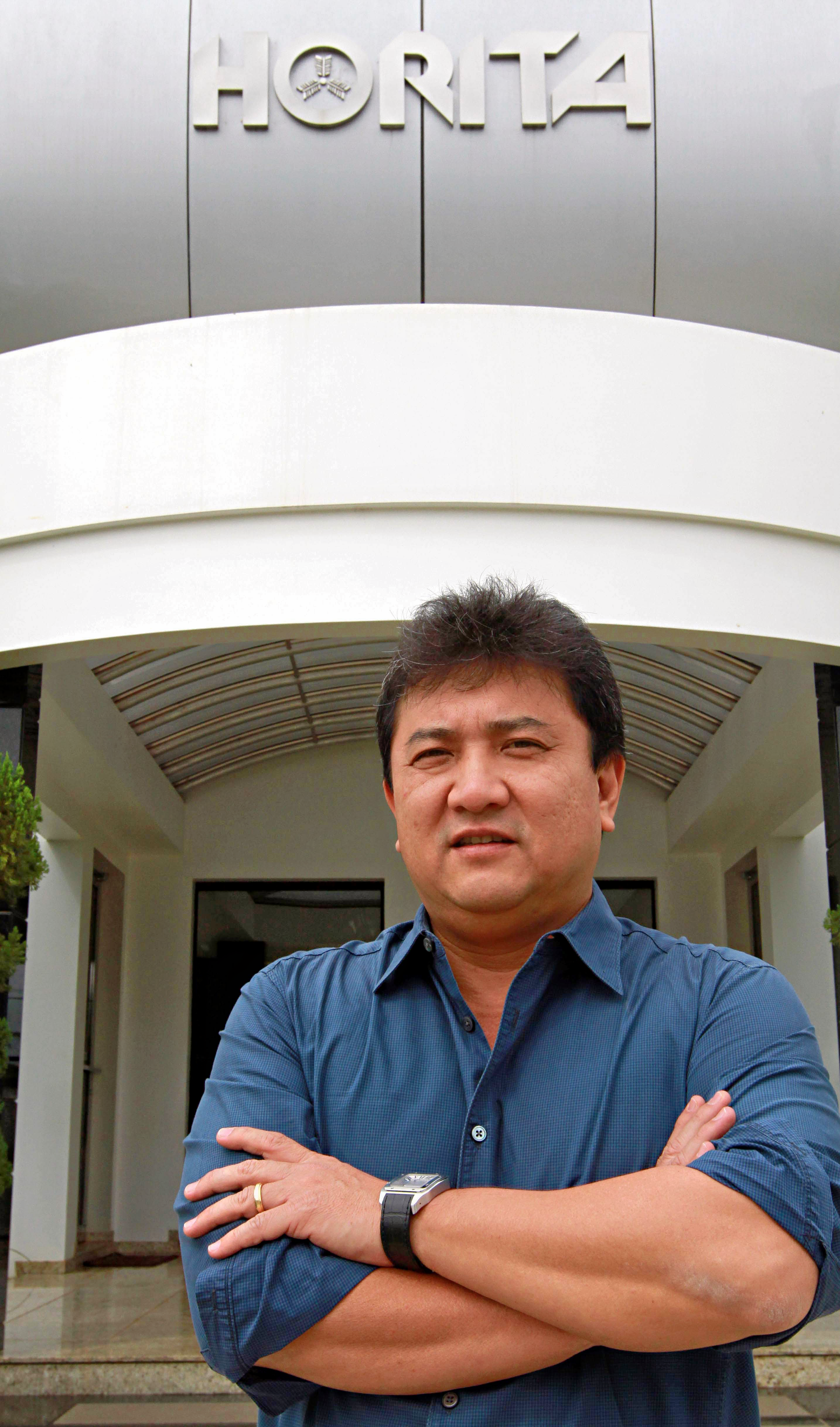
Walter Horita standing outside the Horita Group's office in Barreiras, Bahia. © Christian Rizzi
Walter Horita standing outside the Horita Group's office in Barreiras, Bahia. © Christian Rizzi
The police investigation, known as Operation Far West (Operação Faroeste), exposed the widespread sale – for large sums of money – of court rulings related to land disputes in Bahia. The level of evidence or suspicion against Walter Horita must have been sufficiently strong to justify the police wiretapping his phone as part of its investigations.
Transcriptions of Horita’s phone conversations reveal his apparent attempts to influence judicial and political actors in Salvador, Bahia’s capital, in relation to the attorney general’s lawsuit against either Estrondo or the landowners with reserves at Capão do Modesto.135 In November 2019, the Federal Police searched Horita’s offices and home, and seized documents.136
According to the complaint that kick-started Operation Far West, between 2013 and 2019 Horita supposedly made bank transfers worth a fortune – at least BRL7.5 billion (US$1.5 billion) – in breach of transparency rules about sender and beneficiary data.137, 138 The investigation also revealed that between March and July 2018, Horita apparently transferred a total of R$6 million (US$1.2 million) to a court official.139
The revelations, which have led to ongoing criminal and civil court cases, resulted in the suspension of key figures within Bahia’s judiciary. Among them was judge Marivalda Moutinho,140 who worked in Formosa do Rio Preto, which was described by the Federal Prosecutor’s Office as the “criminal epicentre” of the corruption scheme.141 In her office, police officers found documents on which the names Walter Horita and Estrondo were handwritten opposite the sum of BRL670,000 (US$137,000).142 The judge had allegedly acted with the support of an aide who is accused of negotiating the sums paid by Horita and other commodity producers to implicated judges.143
In 2021 Brazilian media reported that Horita had offered to collaborate with the investigation under a plea bargain and signed an out-of-court agreement with the federal attorney general.144 Horita allegedly paid BRL20 million (US$4 million) as part of the agreement.145
In comments sent to Earthsight, the Horita Group states Walter Horita has not been charged by the Public Prosecutor’s Office at a federal high court. It “vehemently denies” that Horita has entered a plea bargain146 and says the company never had any dealings with judge Moutinho. According to the Horita Group, independent audits confirm Walter Horita has never moved money in ways that breach transparency rules.147
In the meantime, agribusinesses have continued to clear vast swathes of native Cerrado in western Bahia’s stolen public lands to serve cotton and grain markets abroad. The devastation has often occurred with state complicity. Estrondo, the Horita Group and SLC Agrícola all have their own dark histories of deforestation, as we will see in the next chapter.
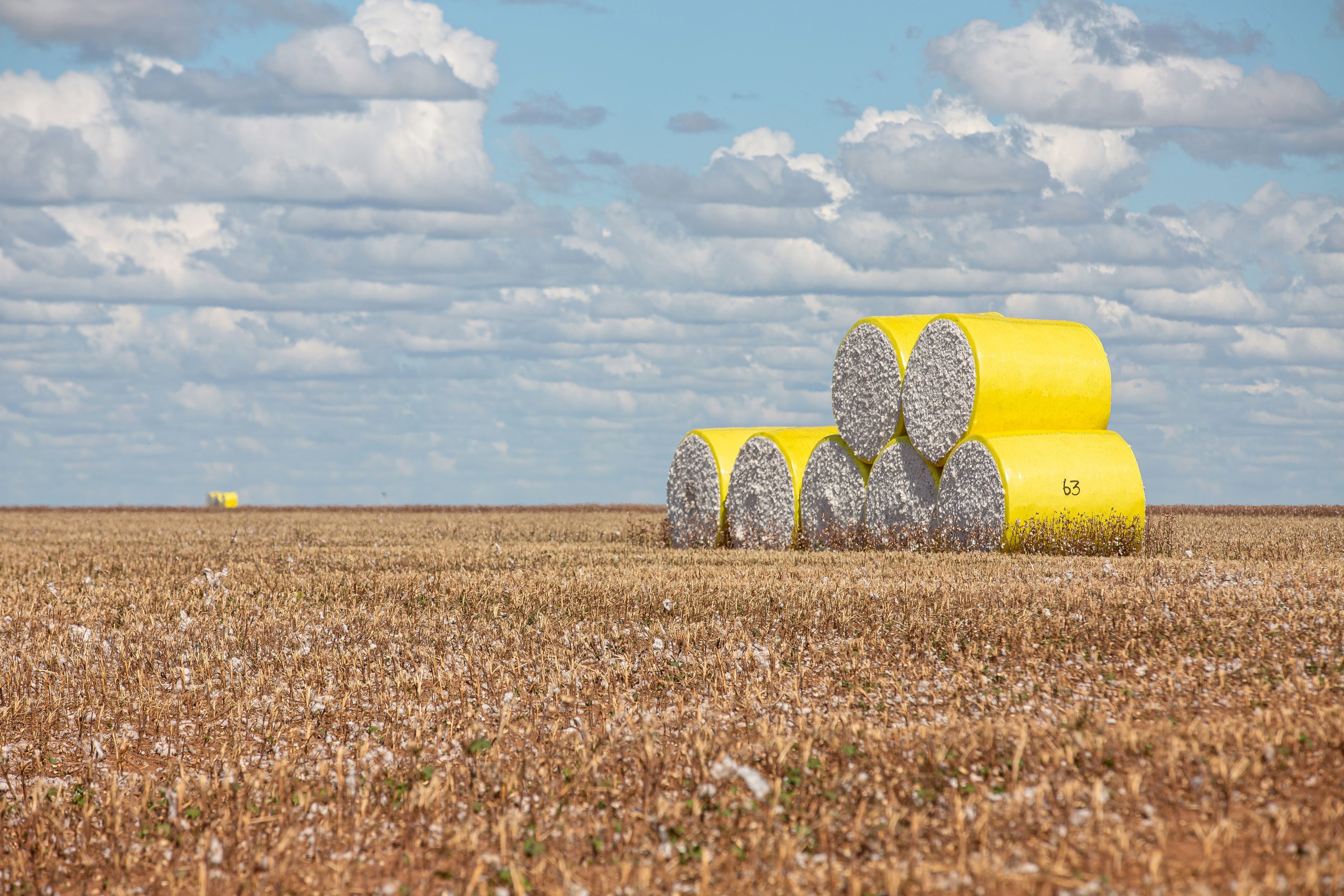
Chapter 3:
Crimes against the Cerrado
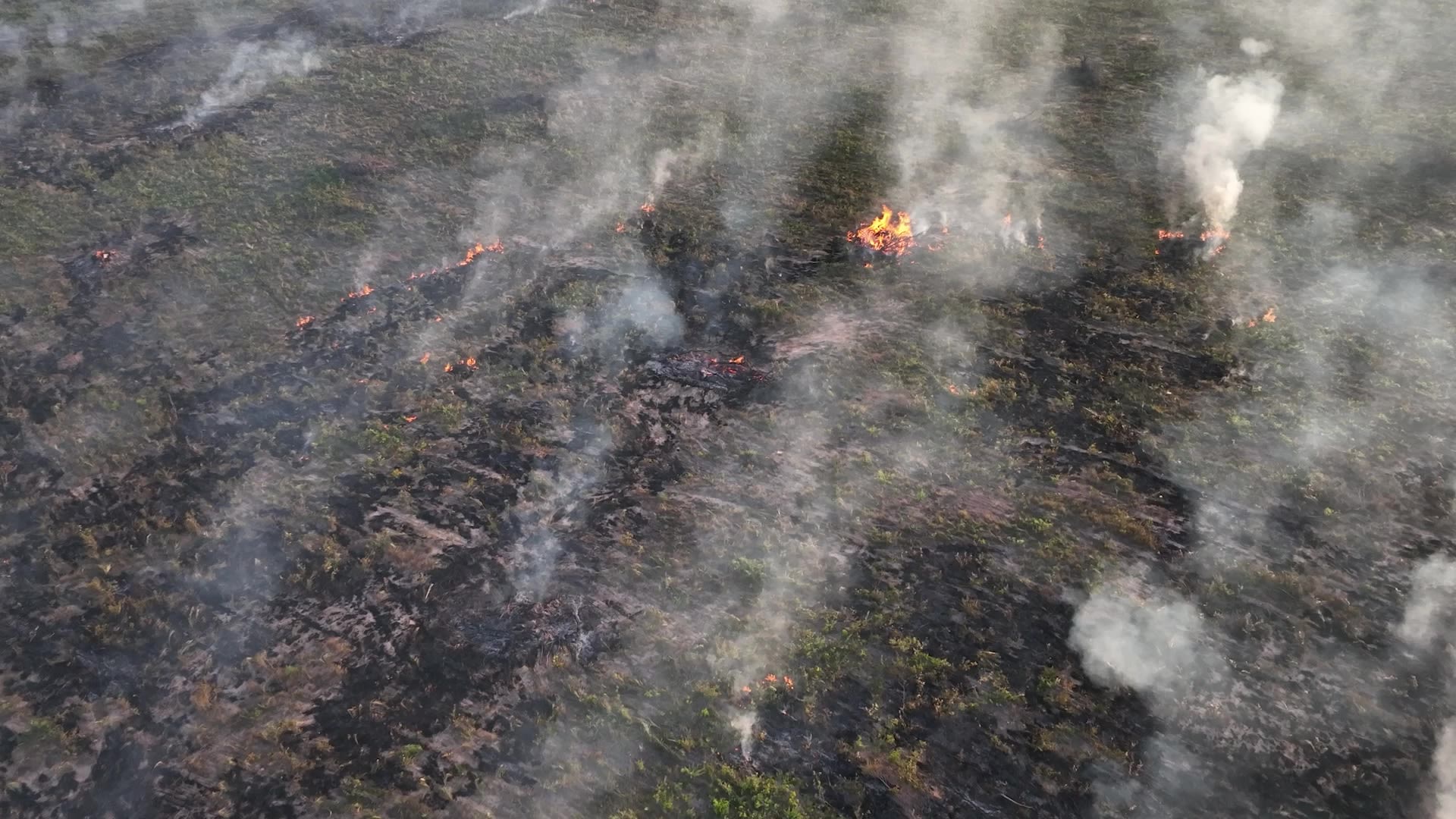
“We used to be afraid of alligators when swimming in rivers. Today you can’t even spot a little gecko.”
Marcos Rogério Beltrão dos Santos
Local environmentalist, alluding to the impacts of deforestation in western Bahia
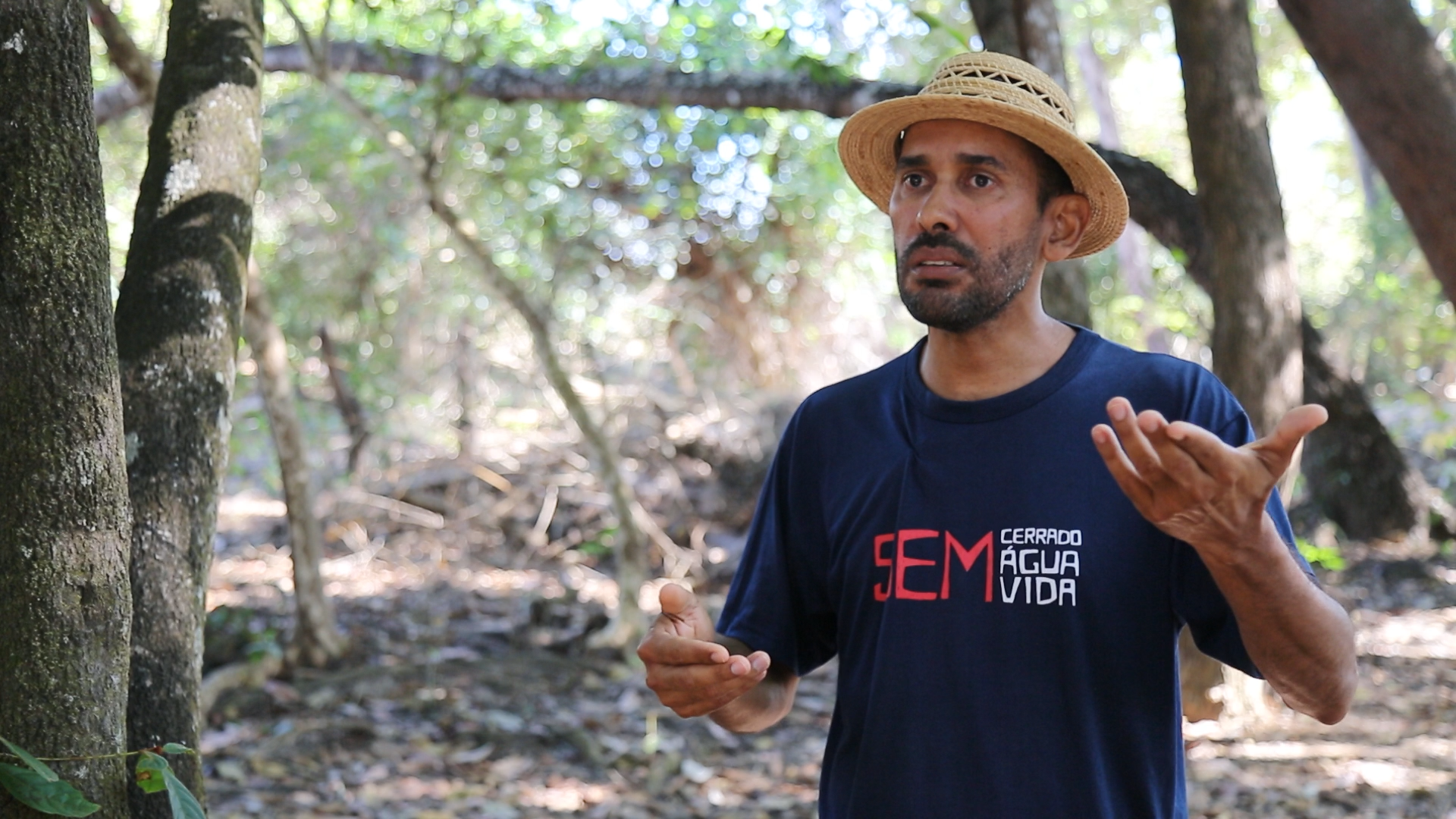

The Cerrado is home to five per cent of the world’s species and a third of Brazil’s biodiversity.149 It plays a crucial role in replenishing several major Brazilian and South American rivers.150
Traditional community members across western Bahia, including geraizeiros, fondly remember the days when tucum, pequi, golden grass and coconut were abundant. They could hunt and fish. For generations the Cerrado provided them with food, clean water, shelter and natural medicines.
All this has dramatically changed. The biome has lost over half its native vegetation to large-scale agriculture in recent decades.151 Since 1985 Bahia alone has lost nearly a quarter of its original 9 million hectares of Cerrado.152 The climate impact has been enormous: clearing Cerrado vegetation for agricultural production generates as much carbon per year as the annual emissions of 50 million cars.153
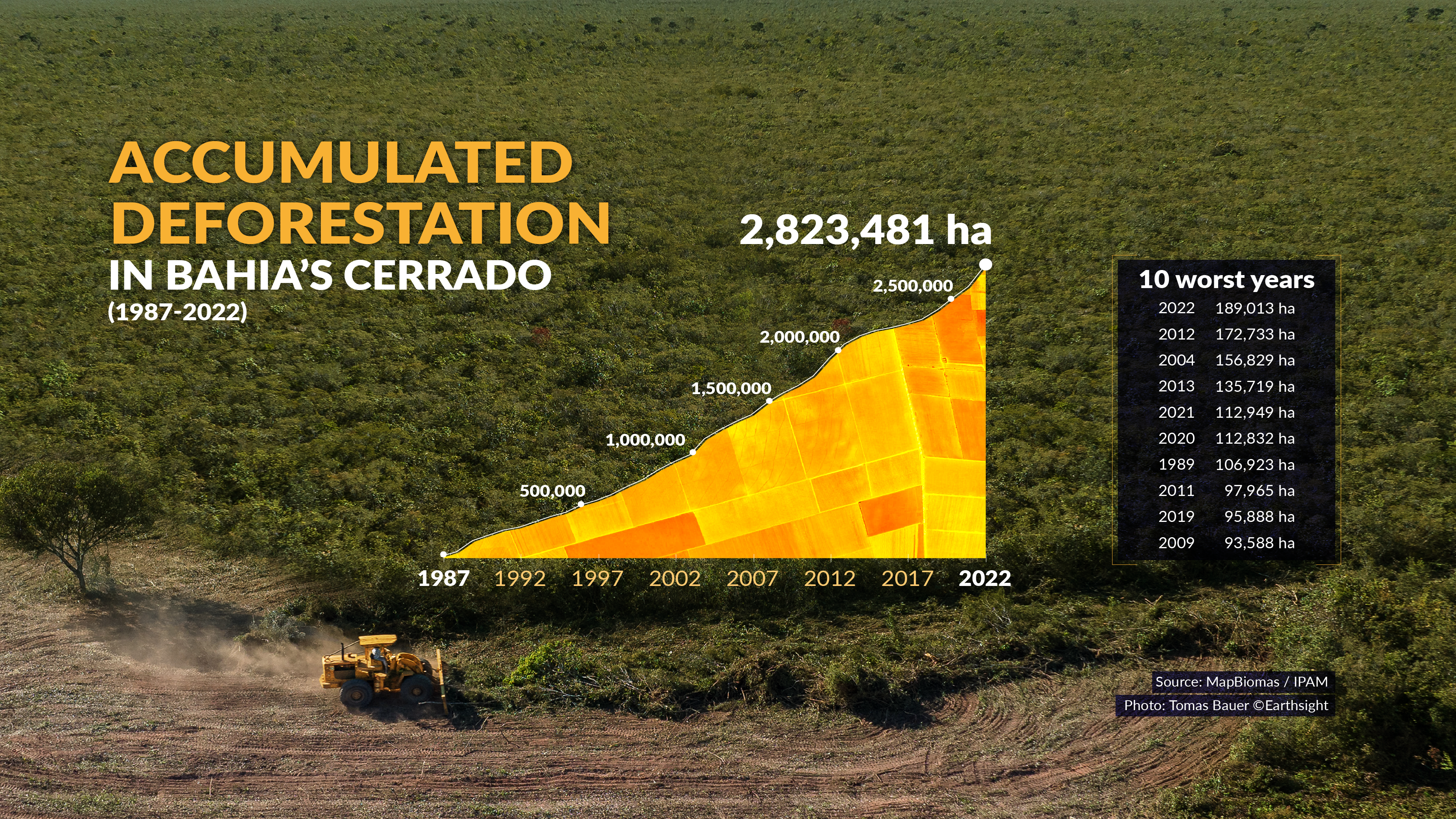
© Graph data sourced from MapBiomas / IPAM. Image by Thomas Bauer / Earthsight
© Graph data sourced from MapBiomas / IPAM. Image by Thomas Bauer / Earthsight
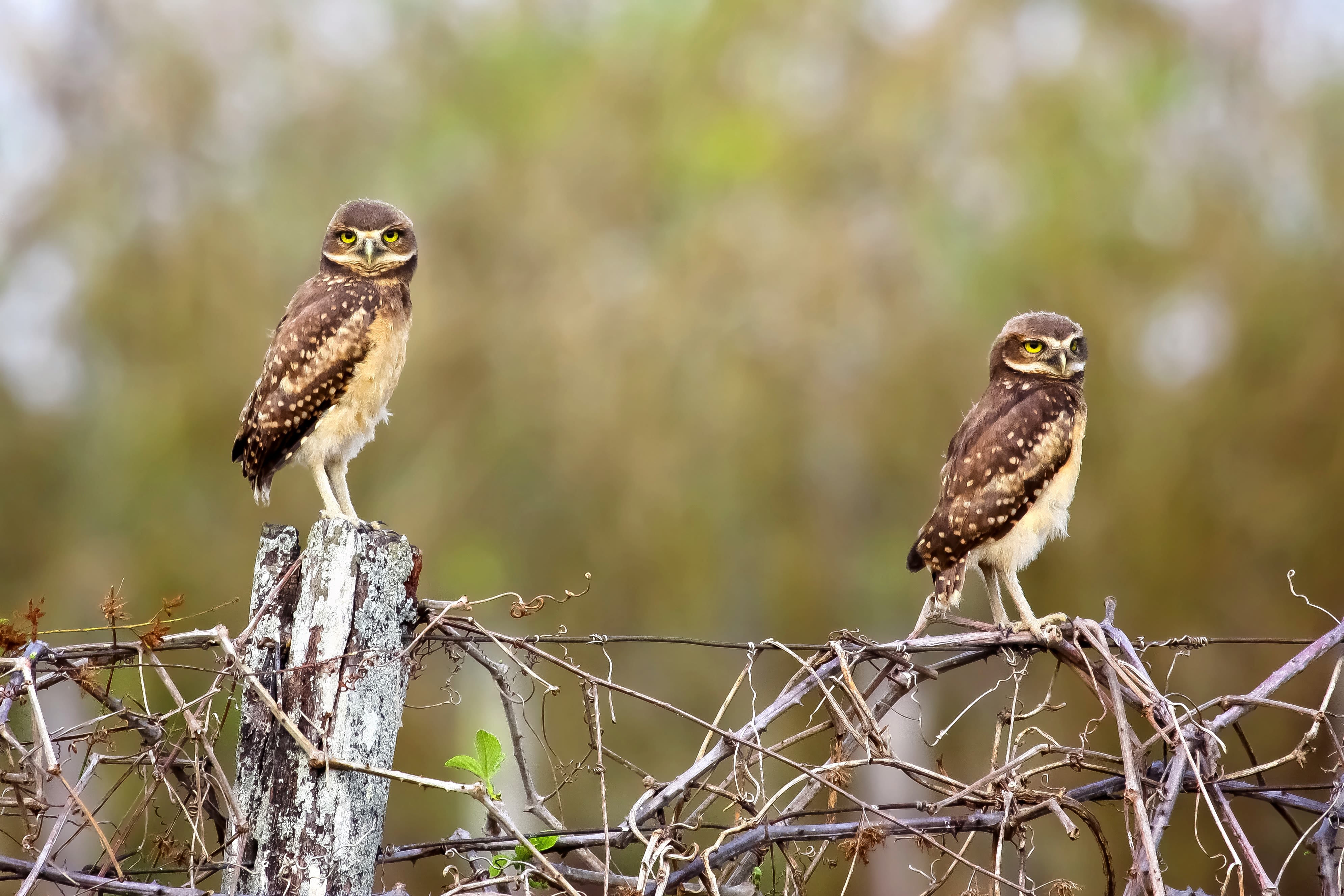
Burrowing Owls, Brazil. © Uwe Bergwitz / Shutterstock
Burrowing Owls, Brazil. © Uwe Bergwitz / Shutterstock
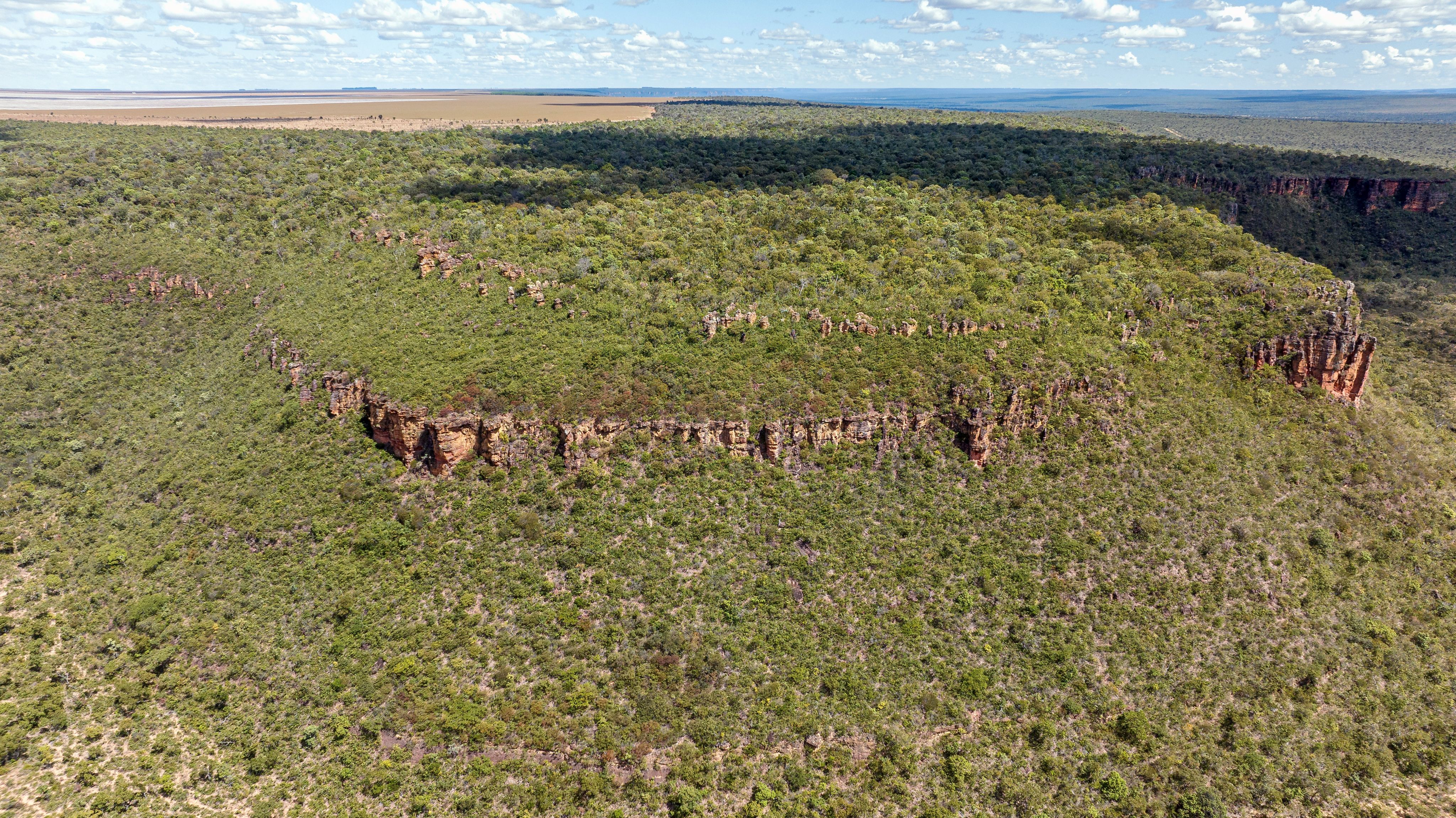
Cacimbinha community land with Vitória Horita farm in the distance, Bahia. © Thomas Bauer / Earthsight
Cacimbinha community land with Vitória Horita farm in the distance, Bahia. © Thomas Bauer / Earthsight
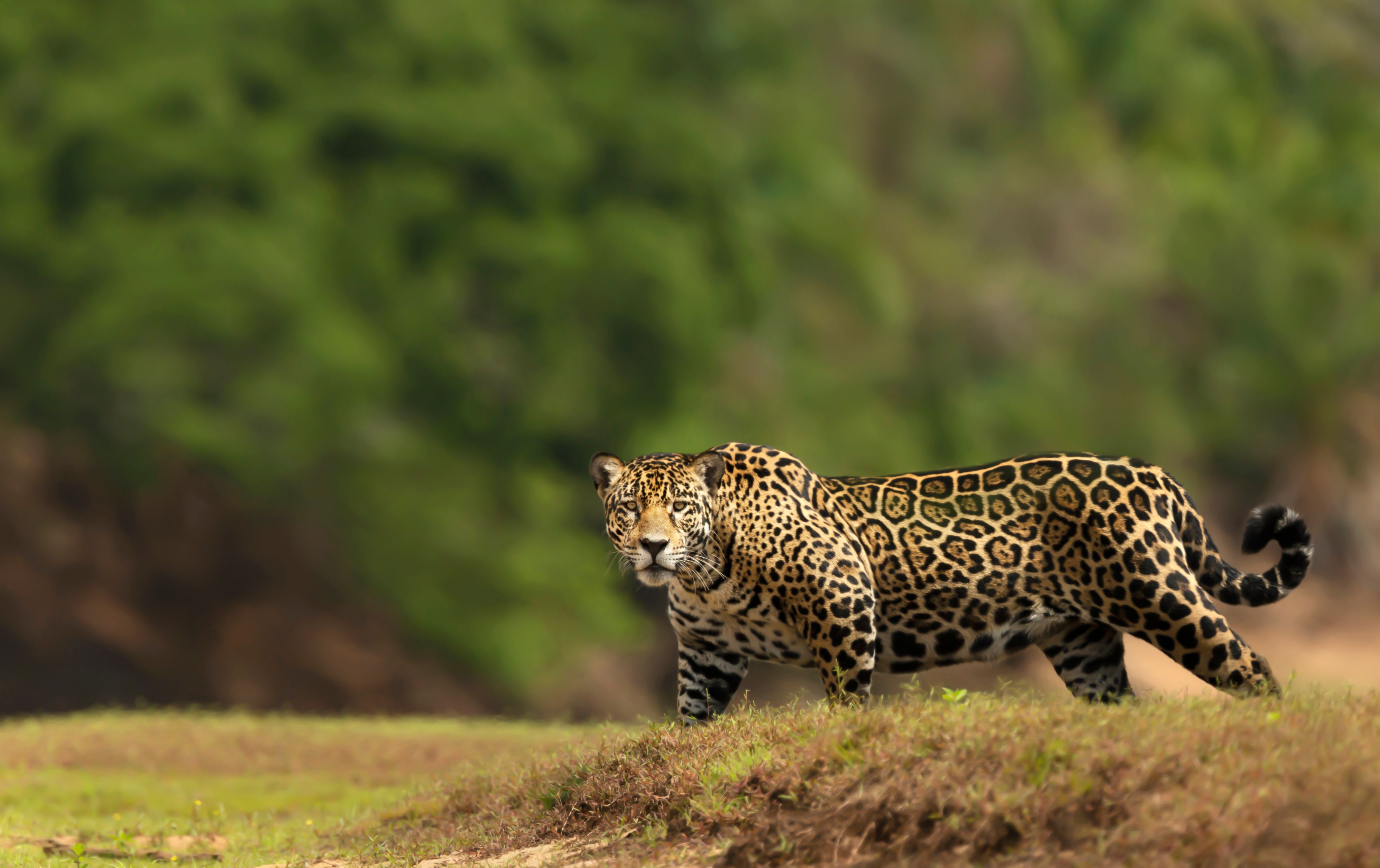
Jaguar, Brazil. © Giedriius / Shutterstock
Jaguar, Brazil. © Giedriius / Shutterstock
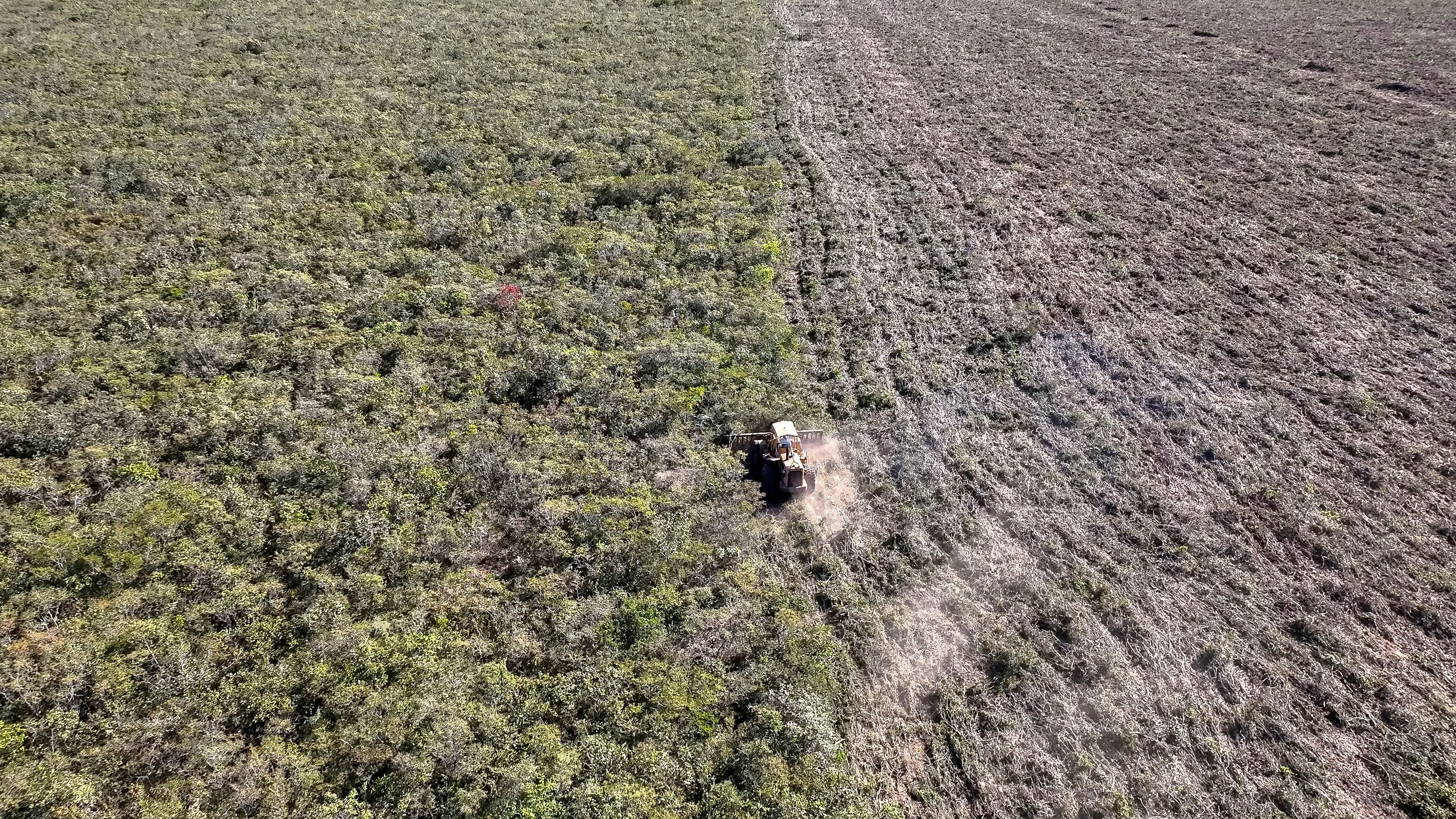
During field work for this investigation, Earthsight witnessed deforestation taking place in Correntina, Bahia. © Thomas Bauer / Earthsight
During field work for this investigation, Earthsight witnessed deforestation taking place in Correntina, Bahia. © Thomas Bauer / Earthsight
The Cerrado risks losing over 1,100 species by 2050 if agribusiness expansion continues at the current pace.154 Several fauna (maned wolf, blue-eyed ground dove) and flora (jussara palm, brasiliana, canelinha) species are threatened with extinction due to habitat loss – a reality facing nearly a fifth of the biome’s species.155 The giant armadillo has lost over 50 per cent of its natural Cerrado habitat.156
Local communities have seen their traditional activities severely hindered by plantation encroachment, biodiversity collapse, water overexploitation and pesticide contamination. The chapadas (high plateaus), once teeming with rheas, siriemas, burrowing owls, white-lipped peccaries and even jaguars, are now bare.157
Local residents showed Earthsight dry riverbeds and lost springs. Major Cerrado rivers are expected to suffer a 34 per cent drop in their water levels – equivalent in volume to eight Nile rivers – by 2050 due mostly to deforestation and overexploitation.158 We drove through local roads that are buckling as the Urucuia, Brazil’s largest aquifer, is unsustainably exploited for irrigation.
Cotton in particular is a notoriously thirsty crop. It is estimated that 10,000 litres of water are required to produce 1kg of cotton fibre, and that it takes around 2,700 litres of water to make one cotton t-shirt.159 Agribusinesses in western Bahia extract nearly two billion litres of water per day – enough to supply 12 million people – almost free of charge.160
They pay this back by dumping 600 million litres of pesticides on the Cerrado every year.161 Cotton uses significantly higher percentages of pesticides categorised as highly hazardous than any other agricultural crop.162 Because pesticides are an important factor in a crop’s greenhouse gas emissions, their heavy use in cotton production also means the commodity has an extremely high carbon footprint compared to other commodities.163
In fact, textile production emits more CO2e (CO2 equivalent) per year than international flights and maritime shipping combined.164 Around 70 per cent of this comes from raw materials production, including cotton.165 Some estimates say the global clothing industry has a similar carbon footprint to that of all EU Member States combined.166 Others say if the fashion industry were a country it would be the sixth largest emitter of greenhouse gases in the world.167
Estrondo: a long history of illegalities
Beyond the low valleys coveted by agribusinesses as protected areas, the forests once abundant on Estrondo’s chapadas have been replaced by cotton and soy monocultures for as far as the eye can see. One can drive for an hour across Estrondo’s chapadas and see nothing but vast plantations occasionally dotted with silos or office buildings. The stench of pesticide is often in the air.
Estrondo has a long and troubling history of large-scale illegal deforestation.168 Since 2004 two of the companies that manage Estrondo, CMOB and Delfin Rio, have been fined a total of BRL125 million (US$26 million) by Ibama, Brazil’s environment agency, including for the unauthorised clearance of 60,000 hectares.169 In the 2000s the agency embargoed 45,000ha of the estate due to deforestation based on expired permits.170 An embargo is a punitive measure used by Ibama to shut off a piece of land from further commercial exploitation and let it regenerate. Farmers are not allowed to grow crops or raise livestock on an embargoed area. Embargoes are among Ibama’s most important law enforcement tools and are used extensively throughout Brazil.
By 2007 more than half of Estrondo’s current area had been deforested. The destruction reached a whopping 167,000ha, an area larger than London, with part of the farms’ protected areas illegally degraded.171 It is estimated that under a possible civil suit Estrondo would have to pay the state of Bahia upwards of BRL200 million (US$40 million) in environmental damages.172
Ibama itself has been dragged into the shady behaviour of Estrondo’s landlords. In 2003 three Ibama agents in western Bahia were accused of issuing Estrondo fraudulent permits to clear 49,000ha.173 They were eventually suspended and sued for corruption in a court case that also embroiled the three companies that run Estrondo.174 A 2008 Ibama report found that at least 38,000ha of this area had been cleared.175
Estrondo and its farmers are not the sole culprits of large-scale destruction of lands that should never have become farms in the first place. Inema, Bahia’s environmental agency, has gladly provided a helping hand.176
Public prosecutor Eduardo Antônio Bittencourt Filho does not shy away from criticising the agency’s behaviour: “Bahia’s greatest environmental problem are the deforestation permits themselves.”177 The recent loss of tens of thousands of hectares of pristine vegetation at Estrondo bears this out.
In 2019 Inema inexplicably authorised Delfin Rio to clear 24,700ha of native vegetation on the western section of Estrondo.178 NGOs and Bahia’s Public Prosecutor’s Office argued the permit was illegal due to, among other things, the ongoing lawsuit against Estrondo for land grabbing brought by the attorney general.179
In 2021 Inema belatedly notified Delfin Rio it should seek consent from Bahia’s rural land agency, CDA, before proceeding with the clearance due to Estrondo’s legal troubles. Unsurprisingly, this was too little, too late.180 Between late 2021 and early 2022 Delfin Rio deforested all 24,700ha illegally authorised.181 Estrondo told Earthsight it operates with the necessary environmental licenses.
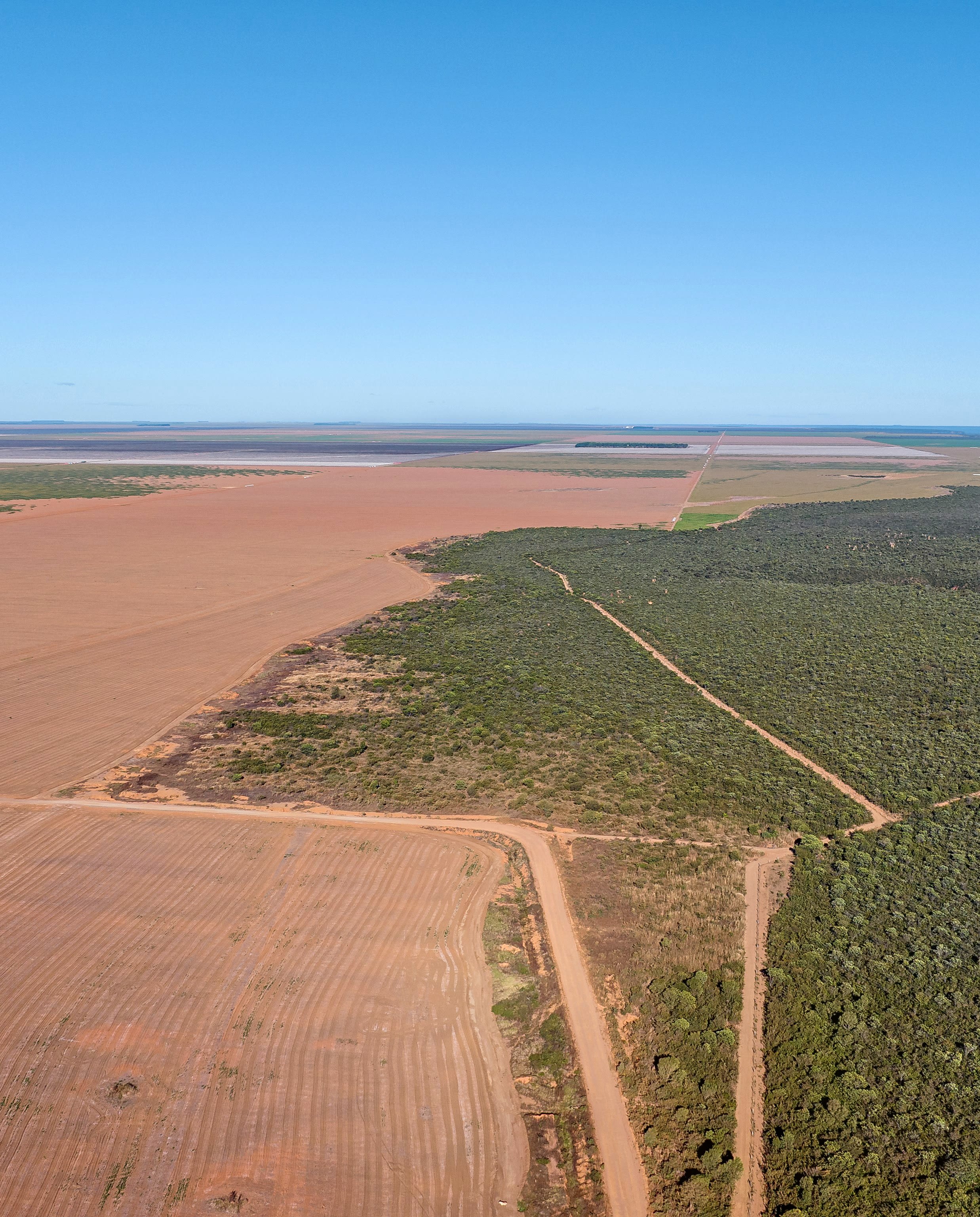
Estrondo estate seen from Cachoeira community land, Bahia. © Thomas Bauer / Earthsight
Estrondo estate seen from Cachoeira community land, Bahia. © Thomas Bauer / Earthsight
The Horita Group: true environmental footprint shrouded in secrecy
Earthsight was unable to determine whether any of the illegal deforestation cases relating to Estrondo and detailed above involved the Horita Group, the largest agribusiness within the estate. But the company is certainly guilty of at least some infractions there.
In 2008 Ibama embargoed a 900-ha farm called Lote 16, an embargo which is still in place.182 At the time, this farm did not belong to the Horita Group, which acquired it in 2014. By law, embargoed areas should not be used for crops but be left to regenerate. In order to check whether the company was complying with this requirement, Earthsight analysed over 100 satellite images available on Global Forest Watch for the 2015-2023 period, especially covering the weeks between late May and late August when most of the harvest takes place and cotton is easily visible as the white bolls are fully open. The analysis reveals that the Horita Group grew cotton on Lote 16’s embargoed area in at least four years (2017, 2018, 2021 and 2023) since it acquired the property, which is in violation of the embargo.
In August 2014, Inema found 25,153ha of illegal deforestation on farms leased by the Horita Group at Estrondo. These were within the 49,000ha illegally authorised by Ibama agents years earlier.183 In 2020 Inema indicated it could not find permits for 11,700ha of deforestation carried out between 2010 and 2018 at farms operated by the group at Estrondo.184
In fact, despite exhaustive searches and unanswered Freedom of Information requests submitted to Inema, Earthsight could find almost no deforestation permits, known as ASVs, issued to the Horita Group and its affiliated companies.185 This indicates that permits, wherever they exist, may have been requested and issued under third parties’ names.186 Without the permits, it is not possible to assess their legality or whether the Horita Group has complied with their terms. This is a serious blind spot because research indicates Inema has repeatedly issued irregular ASVs over the last decade and a half.187
Between 2002 and 2019 the Horita Group’s owners were fined a total of nearly BRL22 million ($4.5 million) by Ibama due to environmental violations in western Bahia.188 Asked by Earthsight about these fines (which are directed at the specific individuals, not the corporate group, as is commonly the case in Brazil),189 the Horita Group told Earthsight “practically all fines […] have been ruled unsubstantiated.” It did not make clear to which fines it referred. Earthsight analysis of Ibama’s public database reveals that at least two thirds of the fines either remain in force or were paid, confirming their validity.190
Outside Estrondo, the company’s Timbauba farm in the municipality of Luis Eduardo Magalhães has been the target of not one, but two Ibama embargoes. Both were imposed in April 2018 on the farm’s two runways used for the aerial spraying of pesticides and other agrichemicals, indicating irregularities in this practice.191 Flight data analysed by Earthsight show at least 10 landings on and take offs from these runways between May 2021 and July 2023,192 in breach of the embargoes. Timbauba, a 16,000-ha farm, is one of the company’s properties that grow cotton.
In comments sent to Earthsight, the Horita Group acknowledged these two embargoes, but argued the use of the runways had been legal. It pointed to an environmental license it received for one of them in August 2023 – it is not clear who issued this license – and its expectation that another license for the second runway would be issued by the municipal authority at any moment. The company did not explain how these licenses retroactively authorised it to use the embargoed runways.
The cases highlighted above illustrate a history of environmental infractions, disrespect for the law and destruction of Cerrado vegetation. Based on our analyses of Horita’s past and present farms in western Bahia – including properties leased or owned by the group – Earthsight estimates the company has cleared at least 30,000ha of native vegetation over the last 20 years.193 This is a conservative estimate. It is more probable the group is responsible for 50,000 or even 60,000ha of native Cerrado deforestation in western Bahia this century.194
The difficulty in precisely assessing the group’s links to deforestation lies in the complex ways in which it has acquired, leased or sold myriad properties over the decades. Registration of land titles in Bahia is incredibly murky and hard to trace due to the widespread use of obscure frontmen and other manipulative methods commonly adopted by agribusiness, as vividly demonstrated by the land grabbing cases described above.195
It is striking that, while the Horita Group itself admits to growing large-scale crops in western Bahia since the mid-1980s,196 the 104 land title records related to the company identified and analysed by Earthsight indicate Horita only acquired its first farm in the region in 1999, with most registrations dating from post-2004.197 Despite exhaustive searches of property records and notary data, Earthsight was not able to identify land titles for more than 30 of the company’s apparent properties in western Bahia. In addition, only about a third of the land titles we analysed contained dates of acquisition of the properties.
It is impossible to say how much of the deforestation at Horita’s farms was legal, but easy to understand that none of it is sustainable for the long-term conservation of the Cerrado and its biodiversity, or the livelihoods of traditional communities. The Horita Group says it does not have a single hectare in contravention of environmental legislation. It asserts it has proved the legality of its activities in relation to all sanctions imposed by environmental agencies. However, the public record discussed above in relation to fines and embargoes shows the company has a long history of breaking the law. This evidence is hard to dismiss.
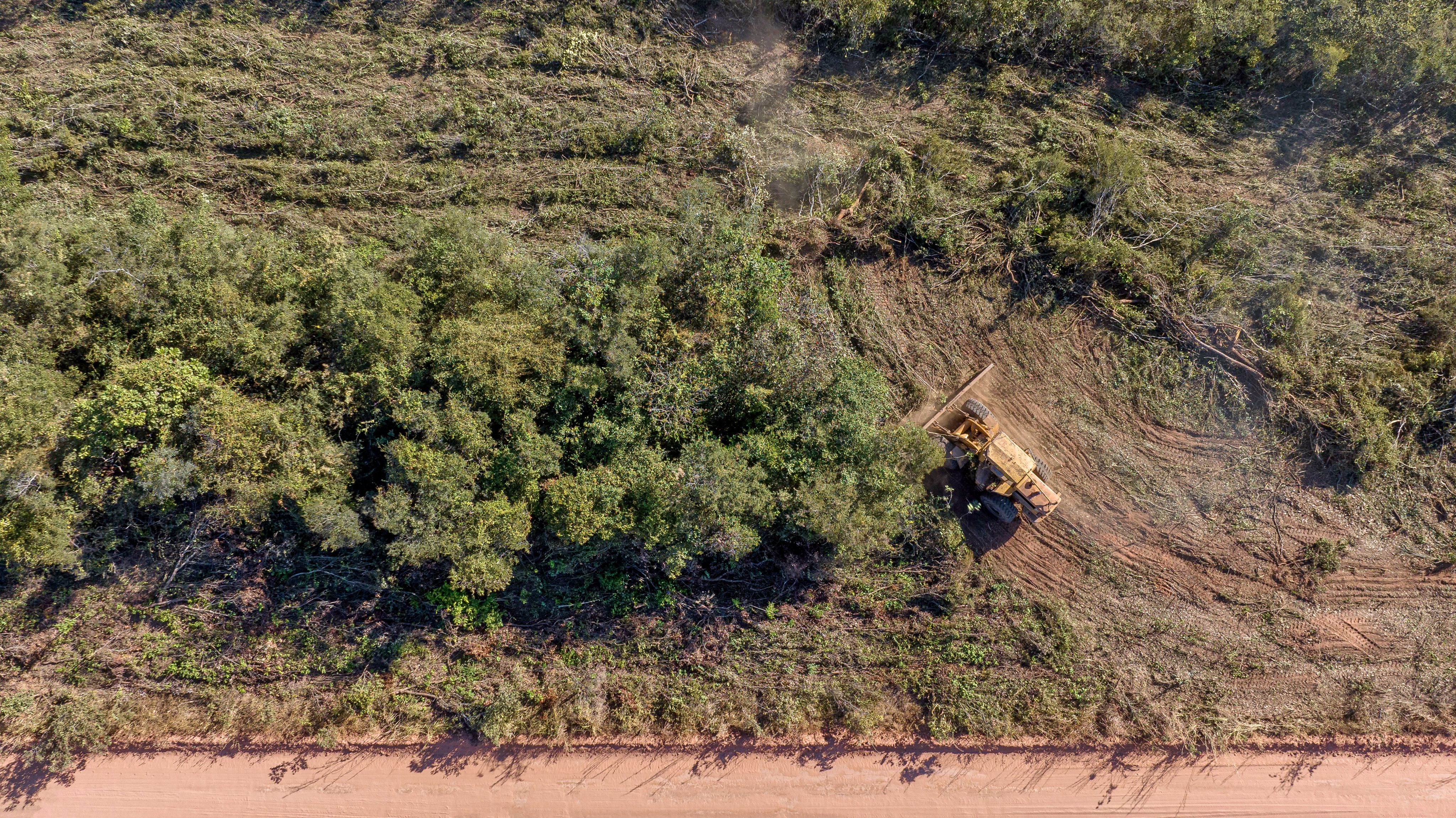
SLC: when deforestation costs as much as a “traffic fine”
SLC Agrícola has a similarly striking history of deforestation in western Bahia. The company has been named one of the top deforesters in the Cerrado.198 SLC’s Piratini, Palmares and Parceiro farms, all of which grow cotton, lost at least 40,000ha of native Cerrado vegetation in the last 12 years.199 Although SLC told Earthsight it has not cleared any areas since 2020 and adopted a zero-deforestation policy in 2021, under which it commits to not converting any native vegetation into crops, a report by Aidenvironment reveals the company cleared 1,365ha of native vegetation at its Palmares farm in September 2022. About half of this loss (700ha) was registered on the farm’s protected areas.200
Satellite images analysed by Earthsight reveal a pattern of fires and forest loss within areas zoned for conservation inside SLC cotton farms201 almost every year between 2012 and 2023.202 A group of SLC properties in Formosa do Rio Preto known as Parceiro, which grows cotton, lost an estimated 1,000ha of protected areas and other protected areas to fires and deforestation between 2014 and 2021.203
Repeated occurrences of vegetation loss in these areas strongly indicate violations of environmental laws that demand companies preserve their protected areas and other types of protected areas.204, 205 SLC Agrícola told Earthsight the fires were not caused by the company but were the result of natural processes.206
Ibama has fined the company over BRL1.2 million (US$250,000) since 2008 for environmental infractions committed at its cotton farms in western Bahia.207 However, this does not seem to trouble some of SLC's shareholders. The company has several foreign investors, including Odey Asset Management, owned by Crispin Odey, one of the biggest funders of the Brexit campaign in the UK. The British investor has claimed that SLC Agricola's environmental infractions cost him as much as a “traffic fine.”208 SLC said it has appealed against all Ibama fines and is awaiting final rulings.
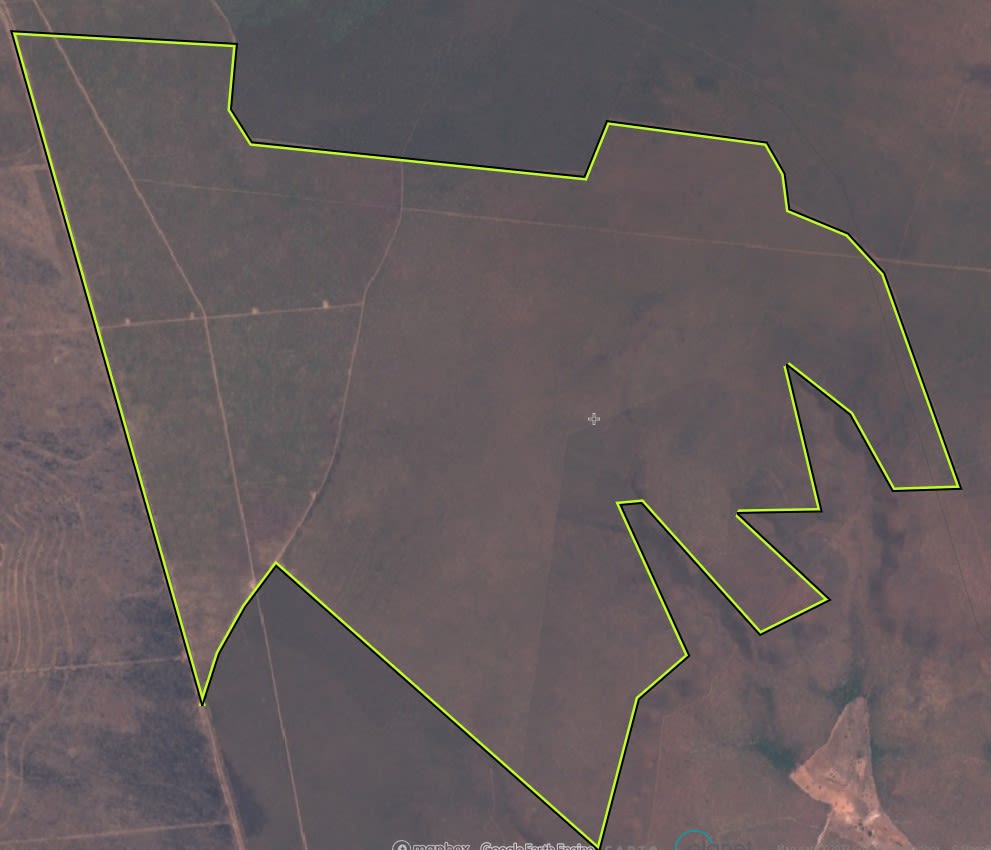
SLC Parceiro Nativa before fires on protected area, 2 Oct 2017. © Sentinel-2 satellite image provided by Global Forest Watch
SLC Parceiro Nativa before fires on protected area, 2 Oct 2017. © Sentinel-2 satellite image provided by Global Forest Watch
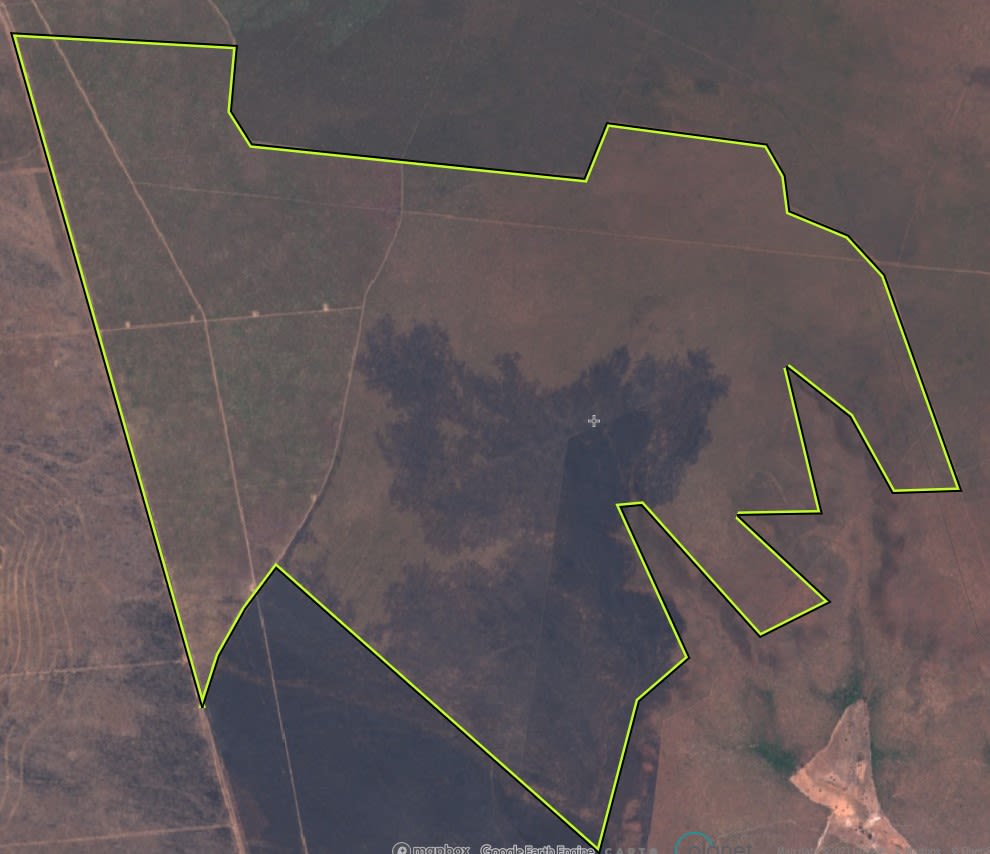
SLC Parceiro Nativa after fires on legal reserve 12 Oct 2017. © Sentinel-2 satellite image provided by Global Forest Watch
SLC Parceiro Nativa after fires on legal reserve 12 Oct 2017. © Sentinel-2 satellite image provided by Global Forest Watch
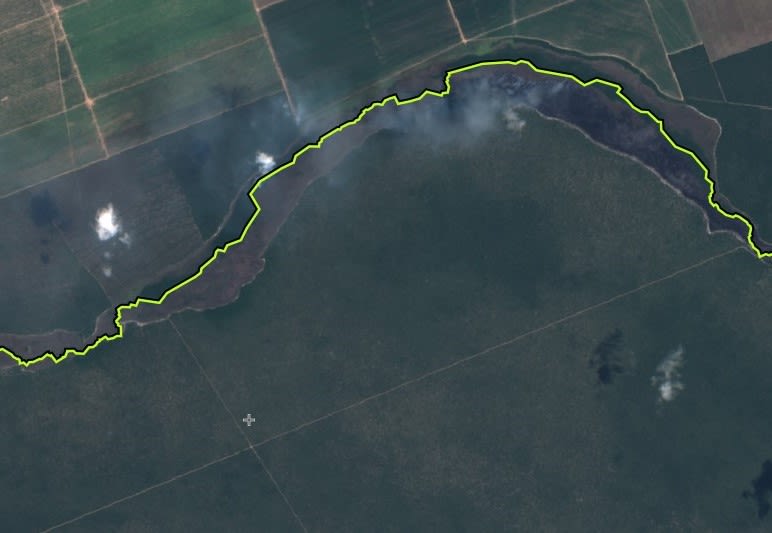
SLC Paladino Tabuleiro legal reserve with smoke during fires visible from a satellite. © Sentinel-2 satellite image provided by Global Forest Watch
SLC Paladino Tabuleiro legal reserve with smoke during fires visible from a satellite. © Sentinel-2 satellite image provided by Global Forest Watch
Global brands fail to act
Industrial-scale destruction of the Cerrado – often made possible by state complicity but at other times downright illegal – has happened for a reason. Commodities grown on this land find easy access to profitable, eager markets abroad.209 Cotton is a prime example. Large producers in western Bahia have accumulated land, wealth and political power thanks, in part, to the boom in Brazilian raw cotton exports over recent decades.210
As we shall see, big European-owned retail houses are helping fuel this destruction with their relentless hunger for cotton. Consumers are likely unaware of how their clothes, towels and bed sheets contribute to the misery wreaked upon local communities and wildlife in Brazil’s Cerrado. But the hidden supply chains moving Horita and SLC cotton all the way to shoppers in Europe can be exposed. They reveal a dramatic truth about the failure of European brands to fully understand and address their links to Brazil’s dirty cotton.
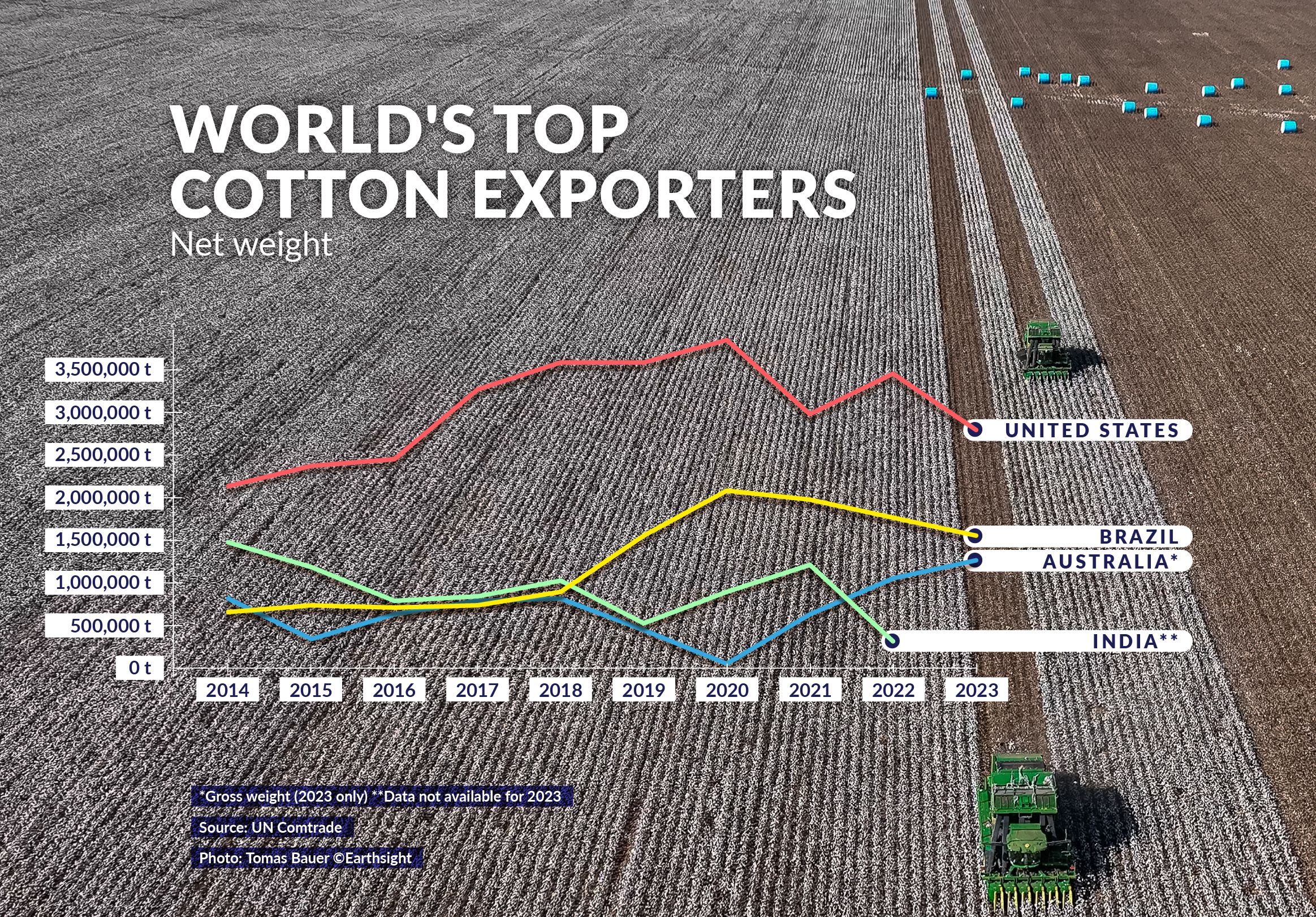
Chapter 4:
The Western connection

Tracing the threads to the world’s largest fashion retailers
For this report Earthsight obtained and painstakingly analysed thousands of shipment records, as well as information made available by Asian textile manufacturers,211 lists of suppliers published by major Western retailers and fashion brands,212 and other sources.213 Our investigators also went undercover at Brazil's second largest agribusiness trade show and at textile fairs in Europe posing as foreign investors.214 The investigation revealed a stark reality: cotton tainted by the deforestation, land grabbing and violence against traditional communities we documented in Bahia is ending up in the supply chains of the world’s two largest fashion retail chains: Zara and H&M.215
Using the available shipment records, Earthsight was able to trace 816,000 tonnes of direct cotton exports from the two controversial cotton producers in Bahia at the heart of this report, Horita Group and SLC Agrícola, to foreign markets between 2014 and 2023.216, 217 Other data suggest that the true total exports of the two firms during that period was well over 1.5 million tonnes, with the difference exported via intermediaries. For example, SLC claimed to be responsible for 11 per cent of Brazil’s exports in 2019/20 – suggesting total exports in the region of 228,000 tonnes. But we were only able to trace 80,320 tonnes that year.
China, Vietnam, Indonesia, Turkey, Bangladesh and Pakistan, we found, are the main destinations of SLC and Horita’s exports.218 A large portion of the shipments identifiable as from SLC or Horita were to middlemen – raw material traders, or firms only producing yarn but not finished goods – or to countries (such as China) where export shipment records are not available. Both things led to investigative dead-ends. In those cases where we were able to trace the tainted cotton to clothing manufacturers in Asia and onwards from there to end markets, however, again and again we found that those Asian firms were supplying finished cotton goods to numerous well known Western retailers – including millions of items to Zara and H&M.219, 220
Headquartered in Spain, Zara is owned by the Inditex Group, which also owns fashion brands Pull&Bear, Bershka, Massimo Dutti, Stradivarius and Zara Home.221 Inditex and Sweden’s H&M are the largest fashion groups in the world with a combined profit of around US$41 billion in 2022.222, 223 They are almost everywhere, from Latin America to the US and Europe. Leaders in the fast fashion sector, H&M has 4,399 shops around the world while Zara and other Inditex brands have 5,815.224, 225
The rise of ‘fast fashion’ in recent decades has been highly controversial due to its large environmental footprint and wastefulness.226 Relying on low prices, large sale volumes and mass production, this business model replicates styles from fashion shows and delivers them at cheaper prices. New collections released every few weeks keep shoppers hooked. H&M offers up to 16 clothing collections each year, while Zara provides 24.227 The global retail giants are among the world’s largest cotton consumers.
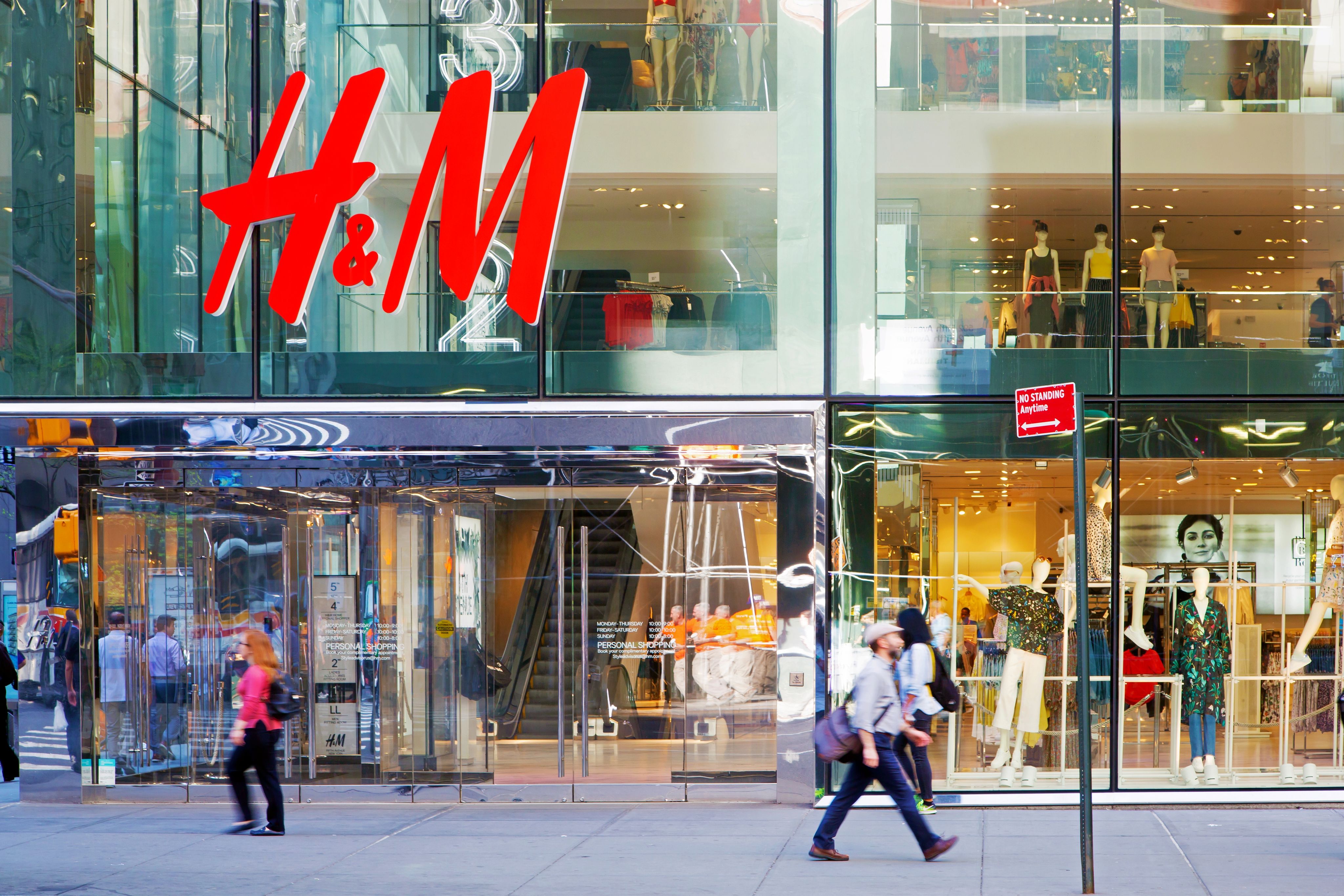
We identified eight Asian clothing manufacturers using Horita and SLC cotton while at the same time supplying one or both of the big retailers with finished cotton garments.228
The largest customer for the tainted cotton in recent years, our analysis revealed, is an Indonesian firm, PT Kahatex. Over the last decade, Kahatex has been among the five largest consumers of Brazilian cotton in the world.229 Brazil is the largest source of cotton for the Indonesian garment industry, in which Kahatex is a dominant player.230 Almost a third of the cotton the firm uses is imported from Brazil.231 Between 2015 and 2023, we found, this included at least 15,200 tonnes of cotton from Horita and SLC in Bahia.232 The data show that Horita and SLC are supplying at least 4 per cent, and possibly as much as 29 per cent, of all Kahatex’s global imports of raw cotton.233
Individual shipment records for exports of clothing from Indonesia in turn reveal that H&M is Kahatex’s second largest customer, accounting for 29 per cent of the Indonesian firm’s clothing exports.234 H&M stores in the EU, we found, imported 74 million pairs of cotton socks made by Kahatex in the year to September 2021, including 16 million to Germany.235 H&M imported 1,041,113 hoodies, 699,809 pairs of shorts and 654,401 pairs of trousers from Kahatex in the EU as well.236 H&M stores in the US received 7.9 million pairs of Kahatex socks, and those in the UK 3.9 million.237 Based on average retail prices of relevant products in the UK in October 2023, H&M is selling £366 million of Kahatex-made cotton clothing every year (€419m; USD444m).238
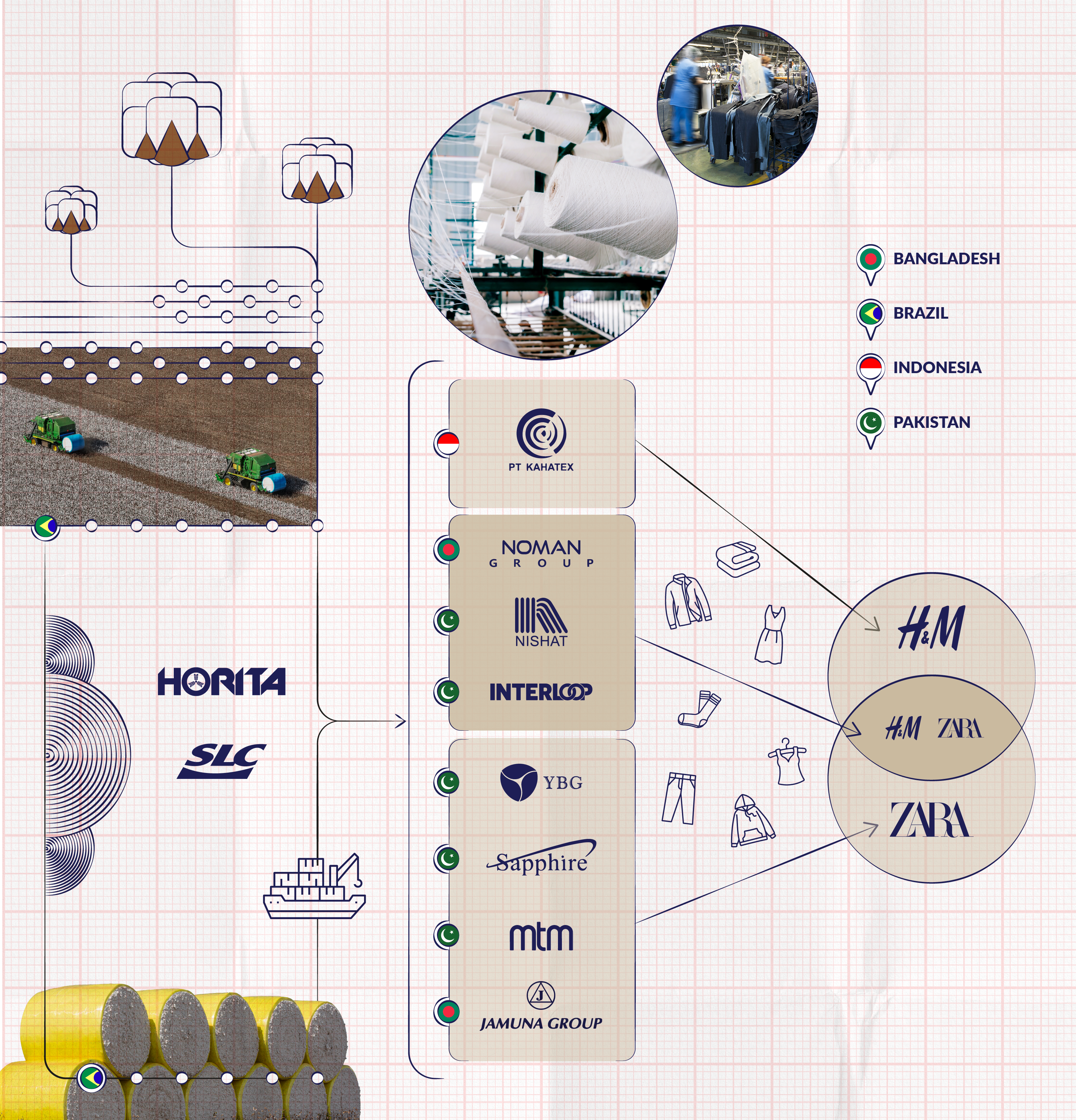
© Supply chain graphic by Earthsight
© Supply chain graphic by Earthsight
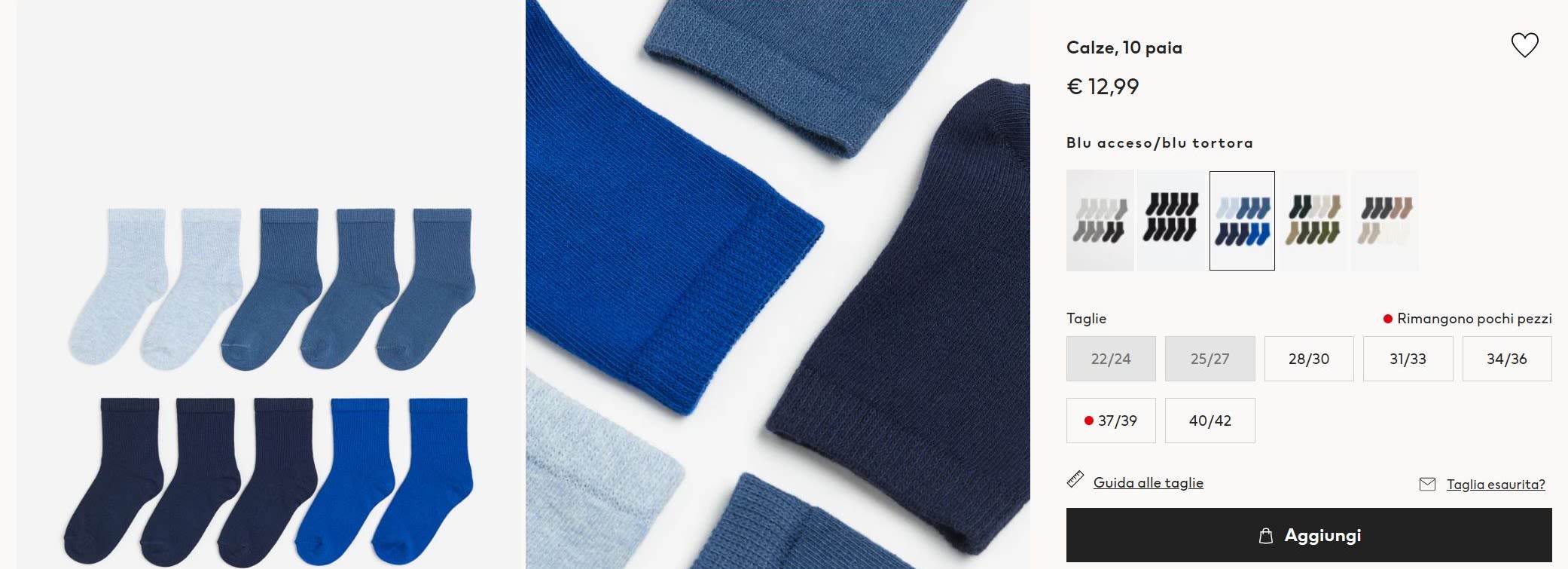
Buried in the webpages for individual products sold by H&M is information on the manufacturer of each. Scraping this data, we were able to confirm that among the many products made by Kahatex and sold in H&M stores in multiple countries239 are its highly promoted 10-packs of men’s plain cotton socks.240 Kahatex is also a listed supplier of the relaxed fit sweatshirt.241
Another Asian manufacturer acting as a conduit for the tainted goods is the Jamuna Group, one of Bangladesh’s largest industrial conglomerates.242 Almost two-thirds of Jamuna’s garment exports are to Inditex Group companies.243 Since at least 2018, the company has produced jeans and other denim clothing for Zara, Bershka and Pull&Bear, which enter Europe through Spain and the Netherlands.244 Shipment records for Zara list the importer as Inditex; those for the other two brands identify them specifically. Between 2017 and 2023, the Jamuna Group directly imported at least 7,010 tonnes of cotton produced by SLC and Horita in western Bahia.245 SLC and Horita supplied between 4 and 14 per cent of Jamuna’s entire global imports of raw cotton during 2023.246
In the year to August 2023, meanwhile, our research shows, Zara stores in Europe sold €235 million’ worth of jeans and other denim clothes, which are made with cotton, manufactured by Jamuna in Bangladesh – approximately 21,500 pairs a day.247 Unlike H&M, Zara does not identify manufacturers of individual products on its website, but it does list the country of manufacture. Where items are confirmed there as Bangladesh-made, it is possible using wider Bangladesh export shipment records and product descriptions therein to nevertheless identify specific Jamuna-produced goods sold by Zara. This includes top-promoted men’s cropped slim fit jeans,248 and women’s straight-fit high-waist long length jeans, which also retail for the bargain price of €29.95.249, 250
An even larger volume of raw cotton (at least 15,600 tonnes between 2015 and 2023) from SLC and Horita in Brazil was imported by another Bangladeshi firm, Noman Group, which supplies both Zara Home and H&M.251
Five textile manufacturers in Pakistan that supply H&M and Zara have also imported thousands of tonnes of cotton harvested in western Bahia by Horita and SLC.252 At textile trade fairs in Frankfurt and Paris in January and February 2023, Earthsight’s undercover investigators talked to representatives from these companies, who confirmed that they supply the two big retail chains.
In those cases in which H&M’s most basic men’s cotton socks were not made by Kahatex, our research revealed they were probably made by another SLC/Horita customer, Pakistani firm Interloop.253 One of its directors told Earthsight’s undercover investigators that the Swedish group is Interloop’s largest customer.254 Shipment records confirm that Interloop shipped some 30 million pairs of cotton socks to H&M in 2023, with the largest destinations being stores in Germany, Sweden, USA, Belgium, Spain, UK, Italy and the Netherlands. It shipped 350,000 pairs of women’s denim jeans to Inditex the same year.255 Between 19 and 42 per cent of Interloop’s total imports of raw cotton, worldwide, came from SLC or Horita in Brazil, Pakistani import shipment records show.256
In comments sent to Earthsight, Inditex confirmed it sources finished goods from the Asian manufacturers identified in this investigation, but said that, “according to suppliers’ information,” those firms do not directly purchase cotton from any Brazilian producer. The company did not provide any evidence to substantiate this claim, which runs counter to the hard evidence obtained by Earthsight: individual shipment records for each and every shipping container, with individual code numbers, showing the number of cotton bales in each, the name of the supplier and the identity of the customer.
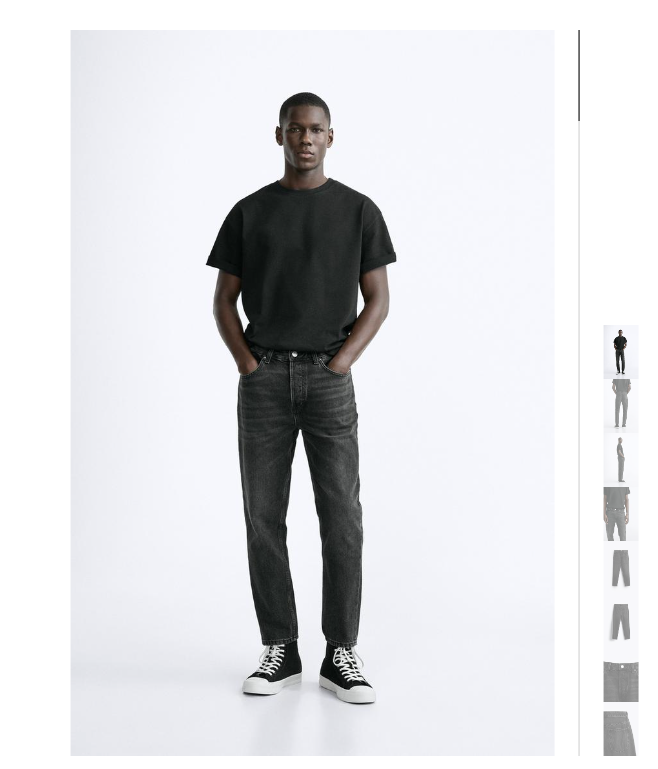
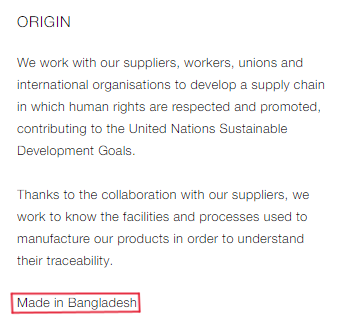
Slim cropped-fit jeans possibly made by Jamuna in Bangladesh, for sale on Zara’s website, in late 2023.
Slim cropped-fit jeans possibly made by Jamuna in Bangladesh, for sale on Zara’s website, in late 2023.
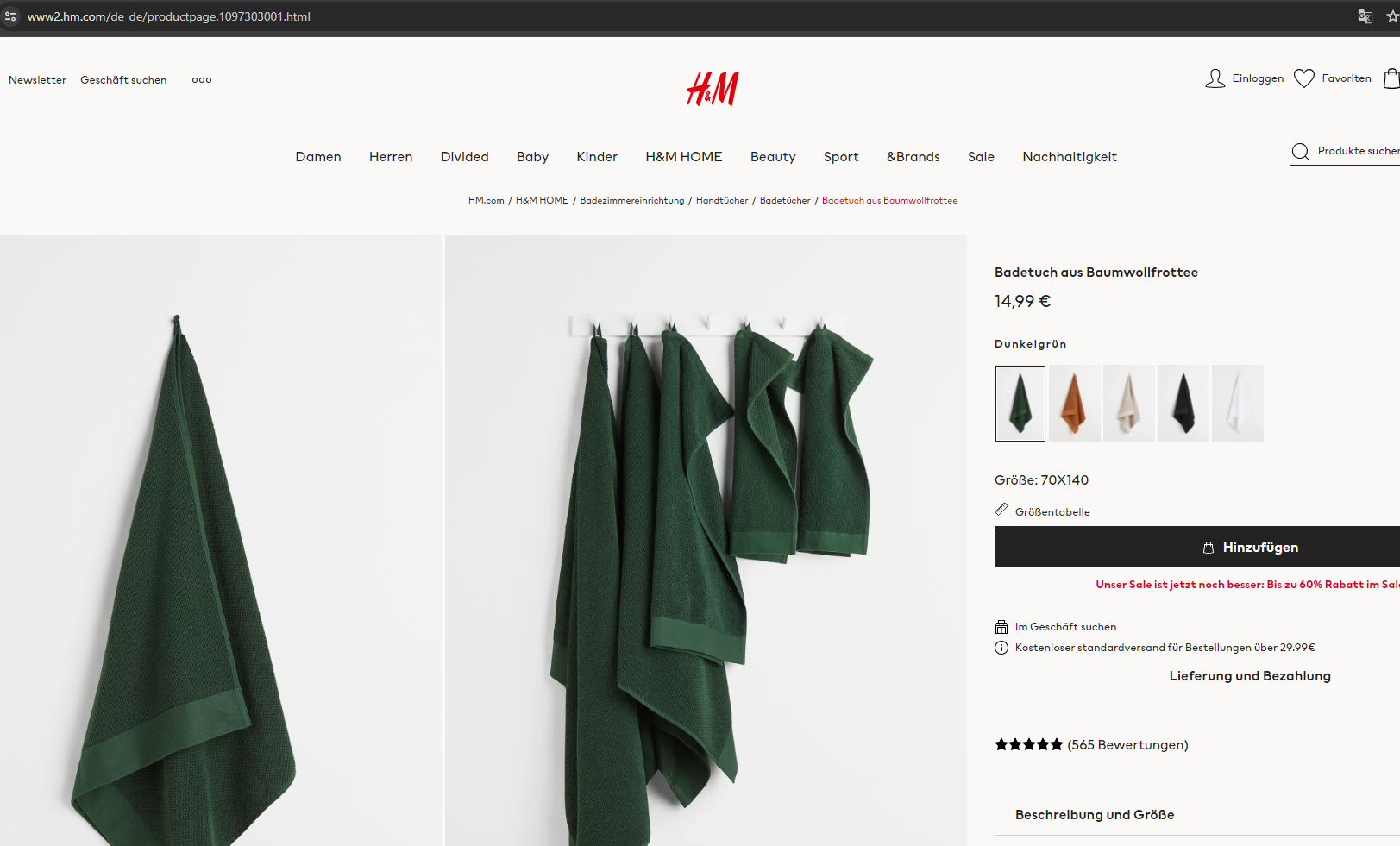
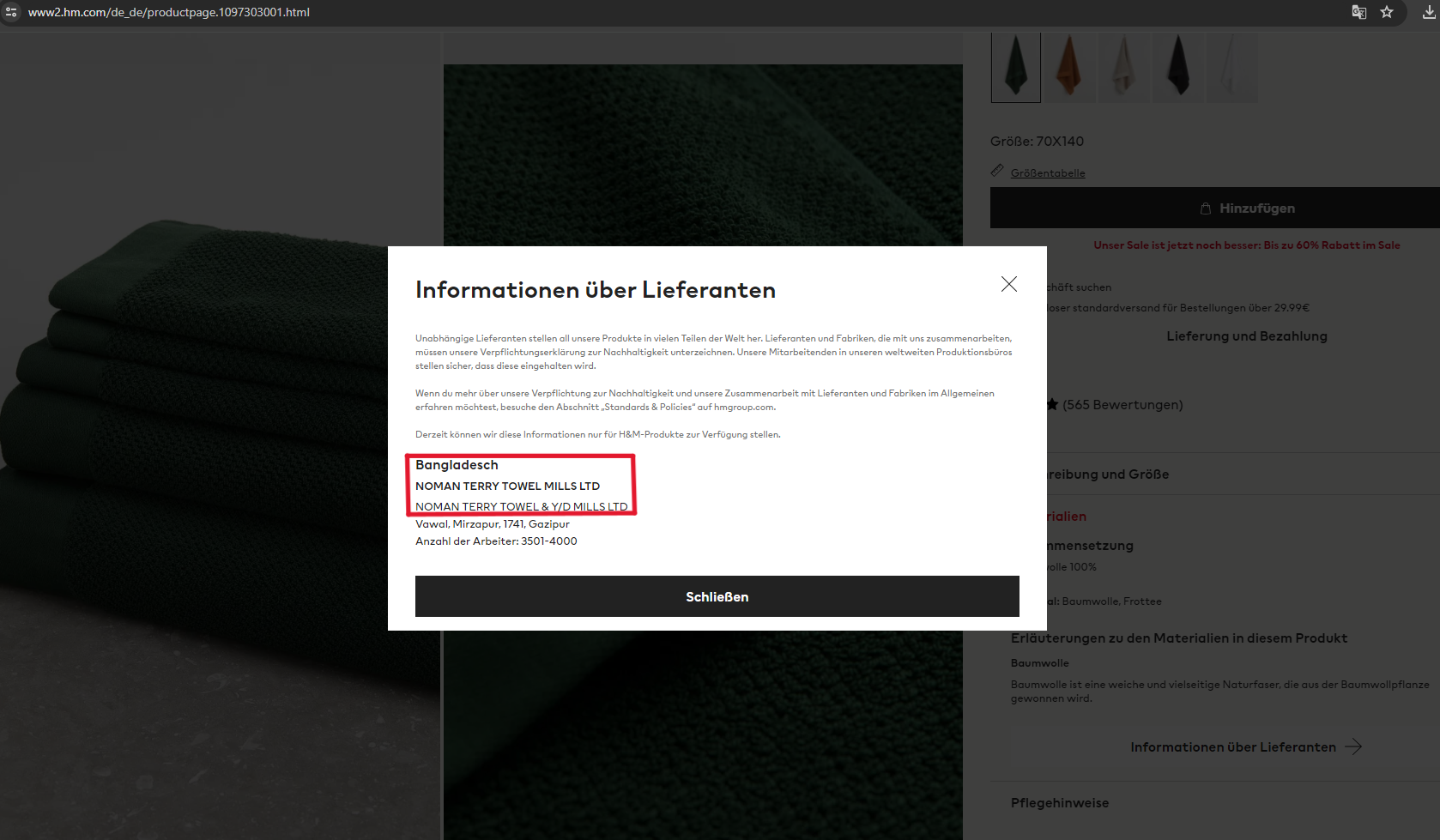
H&M Germany's website (accessed in late 2023) showing that their towels are supplied by the Noman group in Bangladesh.
H&M Germany's website (accessed in late 2023) showing that their towels are supplied by the Noman group in Bangladesh.
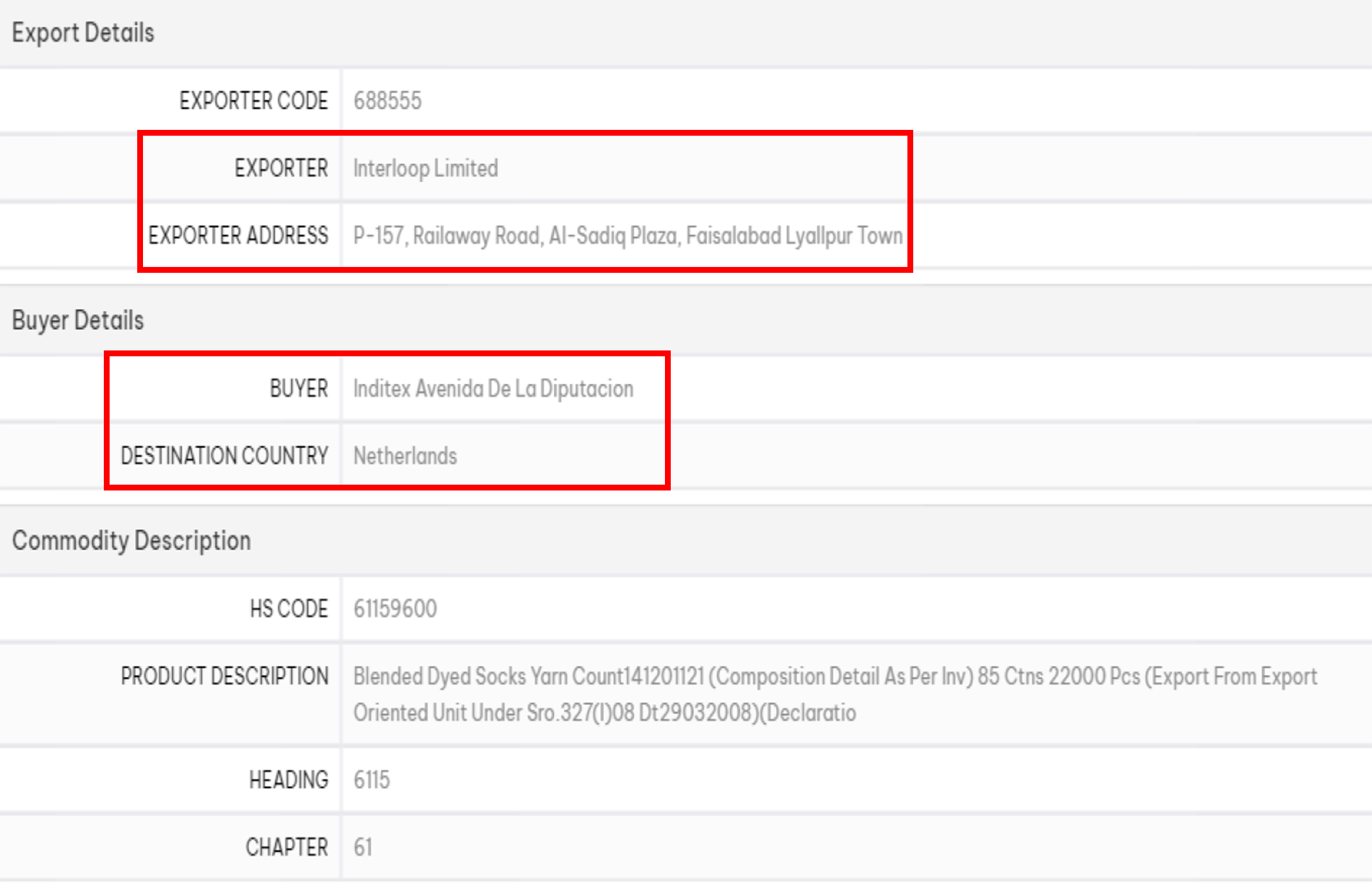
Shipping record from 9th June 2022 showing Inditex buys socks from Interloop, Pakistan.
Shipping record from 9th June 2022 showing Inditex buys socks from Interloop, Pakistan.
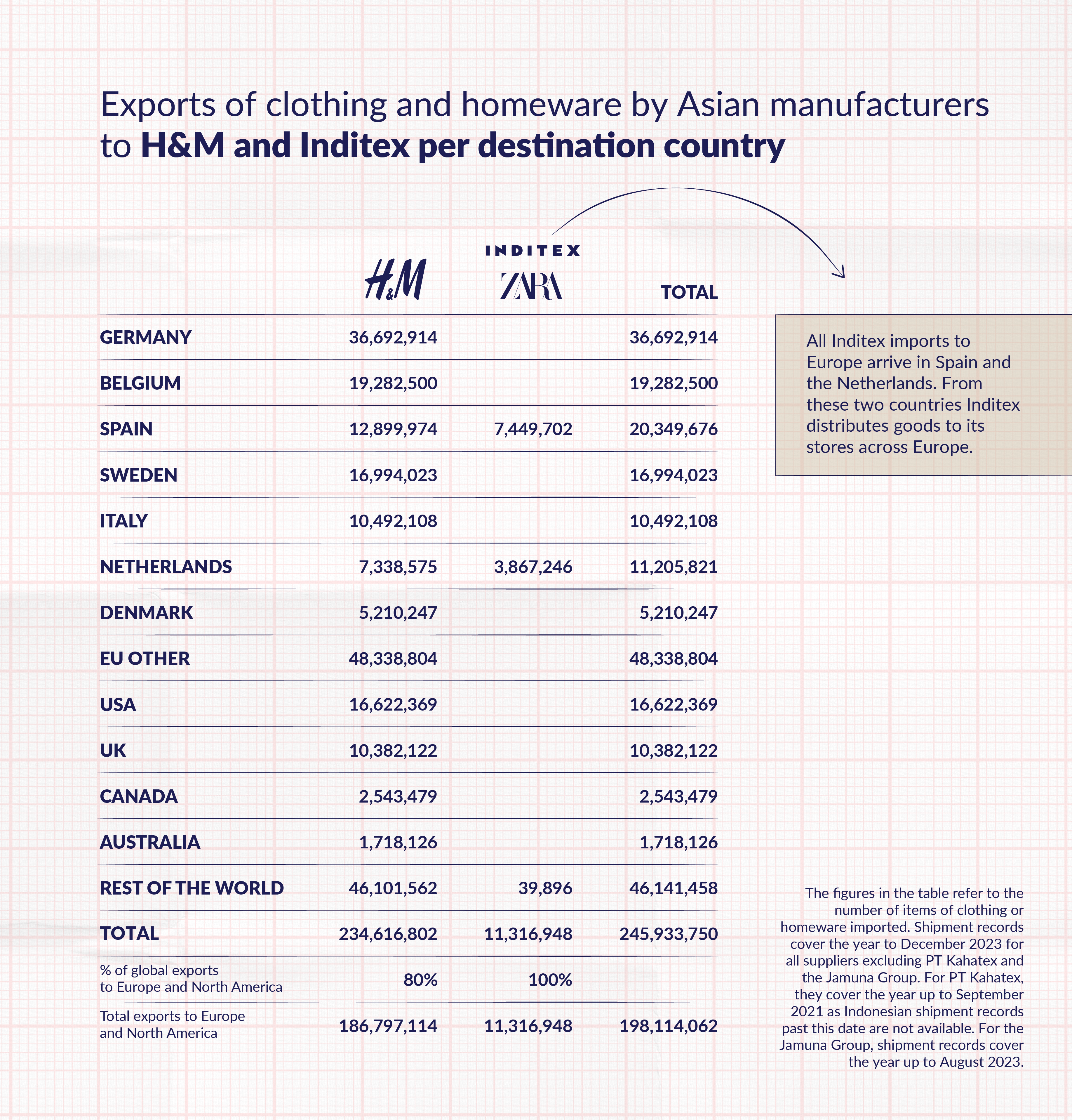
© Export table by Earthsight
© Export table by Earthsight
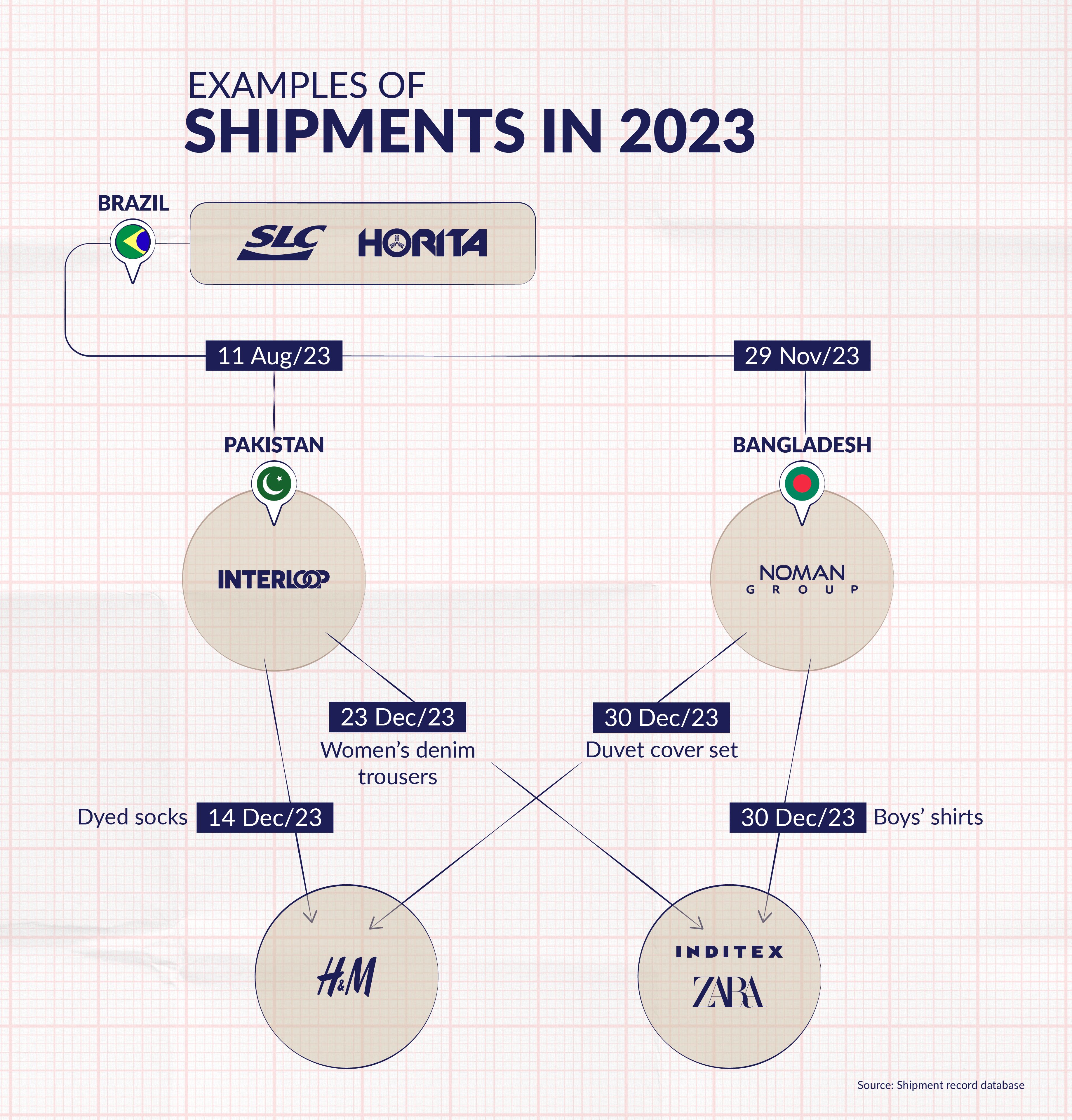
© Graphic by Earthsight
© Graphic by Earthsight
Similarly, Interloop also denied directly importing cotton from SLC or the Horita Group. Kahatex simply stated it purchases cotton from “global commodity trading houses.”257 Both companies highlighted a number of cotton certification schemes they rely on as proof of legality and sustainability. The Jamuna Group and the Noman Group did not respond to Earthsight’s requests for comment.
H&M, on the other hand, did not deny the trade links between its suppliers in Asia and the Horita Group and SLC (which undermines Inditex’s claim, since H&M and Inditex share several of these suppliers). The company instead emphasised it has a “long-standing commitment to source raw materials responsibly […] while also supporting local communities and ecosystems.”
Investigation launched
How did these big retailers end up with supply chains tainted with Brazilian cotton linked to deforestation and land grabbing? Part of the answer lies in the fact that their ethical policies are full of holes.258 More importantly though, the ethical supply chain system they rely on is fundamentally flawed.
When it comes to ensuring their cotton is ethically sourced, both companies rely on using cotton supplied by farmers certified by Better Cotton, the world’s best known sustainable cotton certification scheme. All of H&M’s cotton is already Better Cotton-certified (or, to a much lesser extent, organic certified).259 More than 90 percent of Inditex’s cotton was already BC (81 per cent), recycled (6 per cent) or organic (4 per cent) by 2022.260 The firm expected to reach 100 per cent BC or organic cotton in 2023.261 H&M is one of Better Cotton’s founding members, and until recently was represented on its governing council.262 The two firms are by far the largest users of BC-certified cotton on the planet; Inditex alone consumed 205,000 tonnes of it in 2022.263
Responding to Earthsight’s findings in advance of publication, Inditex said land grabbing and deforestation “should not be allowed under any circumstances,” and highlighted Better Cotton’s requirements on respect for the rights of indigenous peoples and local communities.
Over the years, the Better Cotton label has become a symbol of concern for the environment. Previously known as the Better Cotton Initiative (BCI), the scheme was created in Switzerland almost 20 years ago. Auditors for the scheme are meant to check that minimum requirements are met on working conditions in farms and factories, as well as environmental protection during cotton production, including reducing water and pesticide use and protecting soils and biodiversity.264
In Brazil, the Responsible Brazilian Cotton (ABR) programme, run by the Brazilian Cotton Producers’ Association (Abrapa), operates under a benchmarking agreement with Better Cotton. In effect, this means Better Cotton and Abrapa’s ABR are granted as a single certification to Brazilian cotton farmers.265
Brazil produces the world’s largest amount of Better Cotton-licensed fibre. The country accounts for 42 per cent of the global certified volume, with over 2 million tonnes in 2022.266
But there is one rather glaring problem with all this: the cotton we linked to land rights and environmental abuses in Bahia is Better Cotton-certified. The scheme patently failed to prevent this cotton reaching concerned consumers. Those involved don’t seem to agree on just how much of the cotton concerned is certified. Horita and SLC claim all their production is certified;267 Better Cotton told us the firms have a total of only three certified farms at present, but Abrapa says 14 of these companies’ farms in Bahia are certified.268 Without doubt several of the farms are certified. The SLC cotton fields linked to Capão do Modesto where we documented wrongdoing, for example, and Horita’s Centúria farm at Estrondo, are certified according to all parties.269
This state of confusion should not perhaps be surprising, as Better Cotton has repeatedly been shown to be deeply flawed. Indeed, the certification scheme has been plagued by accusations of greenwashing and criticised for not allowing for full traceability of supply chains and not addressing human rights violations.270, 271 Past analyses indicate the label cannot be seen as a guarantee of environmental or social responsibility.272
H&M and Inditex stated they had shared Earthsight’s findings with Better Cotton, which had launched an investigation as a result. Better Cotton said it had asked Abrapa to investigate our findings since the farms in question had been certified by the Brazilian association. It stated that initial findings submitted to it by Abrapa had “not identified any non-compliance issues.” No evidence was provided to substantiate this conclusion.
Still, Better Cotton indicated it had “made the assessment that further research is required […] in order to better understand the risks present in the region and what they could mean for credible implementation of the Standard.” Accordingly, it said it will “contract an independent auditor to run enhanced verification visits focusing on areas of risk highlighted in the report,” with the aim of having an assessment completed within 12 weeks.
The label stated that if evidence on non-compliance with its requirements is found, the Horita Group and SLC Agrícola’s licenses “will be revoked.” It acknowledged investigations such as ours “can highlight areas where the objectives outlined in the Better Cotton Standard may not be fully achieved.”
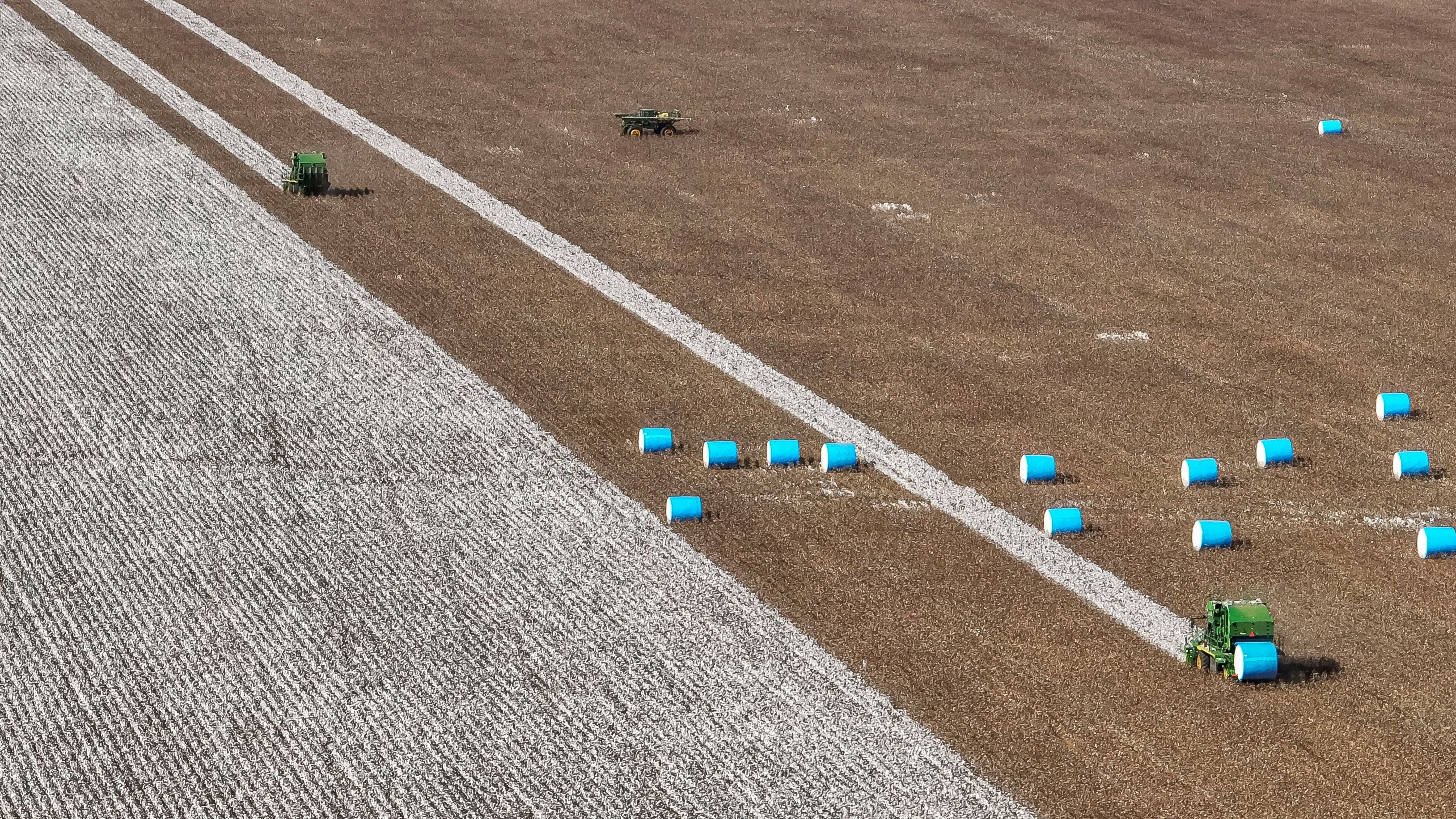
'Better' Cotton?
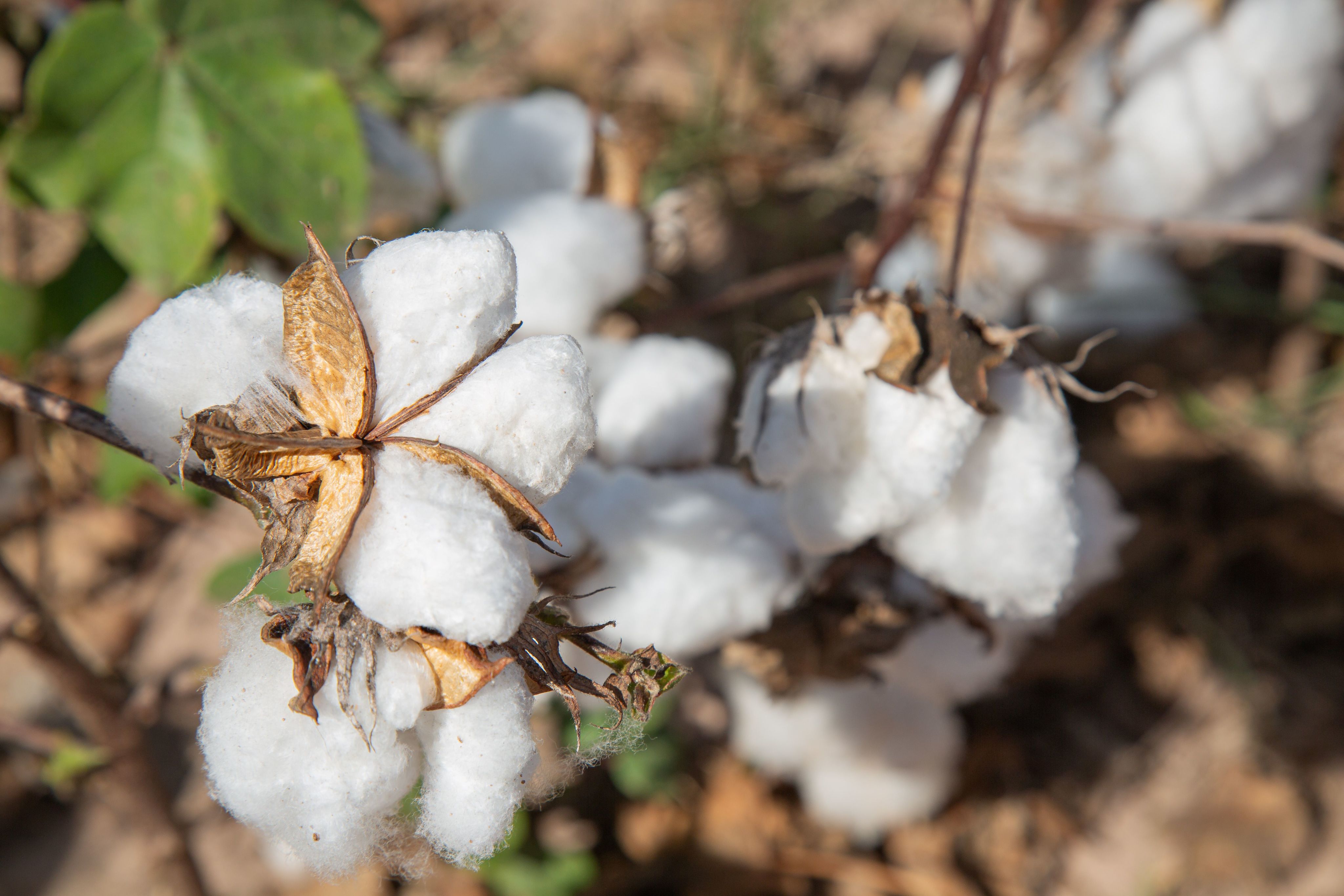
Cotton plants at the Cotton plants, Bahia. June 2023. © Thomas Bauer / Earthsight
Cotton plants at the Cotton plants, Bahia. June 2023. © Thomas Bauer / Earthsight
One reason Abrapa’s initial investigation may have drawn a blank could be a simple one: it wasn’t compliance that was the problem, but the standard itself.
Of seven principles which Better Cotton currently requires companies growing cotton to follow, only one relates to biome conservation or local communities.273 Principle 4 concerns biodiversity and land use, but its relevance to the issues seen in Bahia is severely limited.274
Better Cotton requires that when converting native vegetation to cotton production, certified farms must follow a process designed to protect ‘high conservation values’ (HCV).275 Part of that includes a requirement to consult with and obtain the free, prior, informed consent (FPIC) of local communities who will be affected. But there is no requirement for a producer to demonstrate that it holds legal rights over the land under cultivation: that the land was not ‘grabbed’. There is no ban on growing BC cotton on land illegally cleared of forest before it was certified, and therefore no checks as to whether that might be the case. In fact the standard includes no requirements at all for individual certified farms to comply with relevant laws on land rights or environmental protection.
Even the limited requirements that do exist are of doubtful value because the compliance system is riddled with holes. In Better Cotton’s checklist for assessing large farms (its strictest one as smallholders get a simplified system), there are no specific indicators relating to FPIC.276 Auditors are simply recommended to ask the company concerned whether it has followed the standard’s requirements on High Conservation Values.277 It is assumed that if they haven’t, they will simply confess. And while Better Cotton members – including Horita and SLC – are required to sign a general ‘Code of Practice’, which includes a promise to “comply with all relevant legal requirements,”278 there is no mechanism in place for checking compliance. Again, the system simply assumes that cotton companies wouldn’t lie.
One result of these flaws is that it is easy for firms with many farms to simply certify the good ones alone – or to drop them from the scheme while conversion takes place, then re-certify them afterwards.
More broadly, the Better Cotton system suffers from deep conflicts of interests, especially in Brazil. Abrapa – a producers’ association that exists to defend and promote the sector’s interests – is in charge of the certification programme in the country.279 Abrapa works closely with local associations, including Bahia’s producers’ association Abapa.280 Both Abapa and Abrapa’s presidents are cotton growers.281 Luiz Carlos Bergamaschi and a member of the Horita family, alongside other large cotton producers, are part of Abrapa’s councils.282 The cotton producers are effectively certifying themselves.
In comments sent to Earthsight, Abrapa said it does not approve, issue or revoke ABR/Better Cotton certificates, all of which are done by third-party auditors. Abrapa emphasised it fully trusts ABR/Better Cotton’s auditing independence, without providing details about how such independence is ensured. How much one can trust the various third-party auditing firms charged with actually doing the checks is anyway brought into question by their own conflicts of interest within a labelling system in which they are paid by the cotton companies, and compete for business from them.
In an almost comical twist, immediately after asserting its neutrality, Abrapa said in its response to our findings that it would “fully support the producers in legal action” against Earthsight in case our report caused them any harm. It also added the Horita Group and SLC Agrícola’s comments in an annex to its own letter, verbatim.
The big retailers are a little more honest about the problems with Better Cotton. Inditex told Earthsight it “continuously collaborates with certifying organizations and other specialized third parties to enhance the quality of these standards, their requirements, their traceability tools and compliance policies.” H&M said it engages with the label’s leadership to continuously review the scheme and “identify improvement needs.” The company admitted that “despite the standard owners’ best efforts, violations can of course occur.”
Empty promises
H&M boasts a series of commitments to resilient ecosystems, supply chain due diligence, water conservation, anti-corruption, and local communities’ land rights.283 Inditex has a Biodiversity Strategy to encourage sound land management by raw material suppliers,284 and a Policy on Human Rights that includes communities’ rights.285
However, far from the textile fairs in Europe, the traditional communities of western Bahia are painfully aware of the empty promises made by brands that have pledged to reduce their environmental impacts. "Multinationals publicly espouse good practices and social responsibility, but deep down, when you look at [their impacts on] traditional communities, the reality is different," summarises environmentalist dos Santos. 286
“These foreign companies should be ashamed of themselves. The whole world today buys cotton and soy tainted by land grabbing. Whoever is buying these commodities can be certain that they are stained with blood,” argues Iremar Barbosa de Araújo, a schoolteacher and resident of the traditional community of Arrojelandia.287
The European fashion industry, despite its immense market power and financial muscle, seems either unwilling or unable to rigorously implement the necessary policies and monitoring systems that would allow it to cut any ties to land grabbing, deforestation and violations of local communities’ rights. As a result, their customers are inadvertently made complicit in such abuses.288
Some improvements to Better Cotton’s standards and procedures are under way. A new set of Principles and Criteria came into effect in March 2024.289 But as we will detail in the next chapter, plenty of problems remain.
If corporations cannot act of their own accord, it is urgent that governments and regulators step in. Wealthy consumer markets, including the EU, UK and US, are currently taking steps to do just that. However, as we will see in the next chapter, while certain sectors are either being regulated or soon expected to be so, cotton and the textile industry are largely being let off the hook.290 This must change.
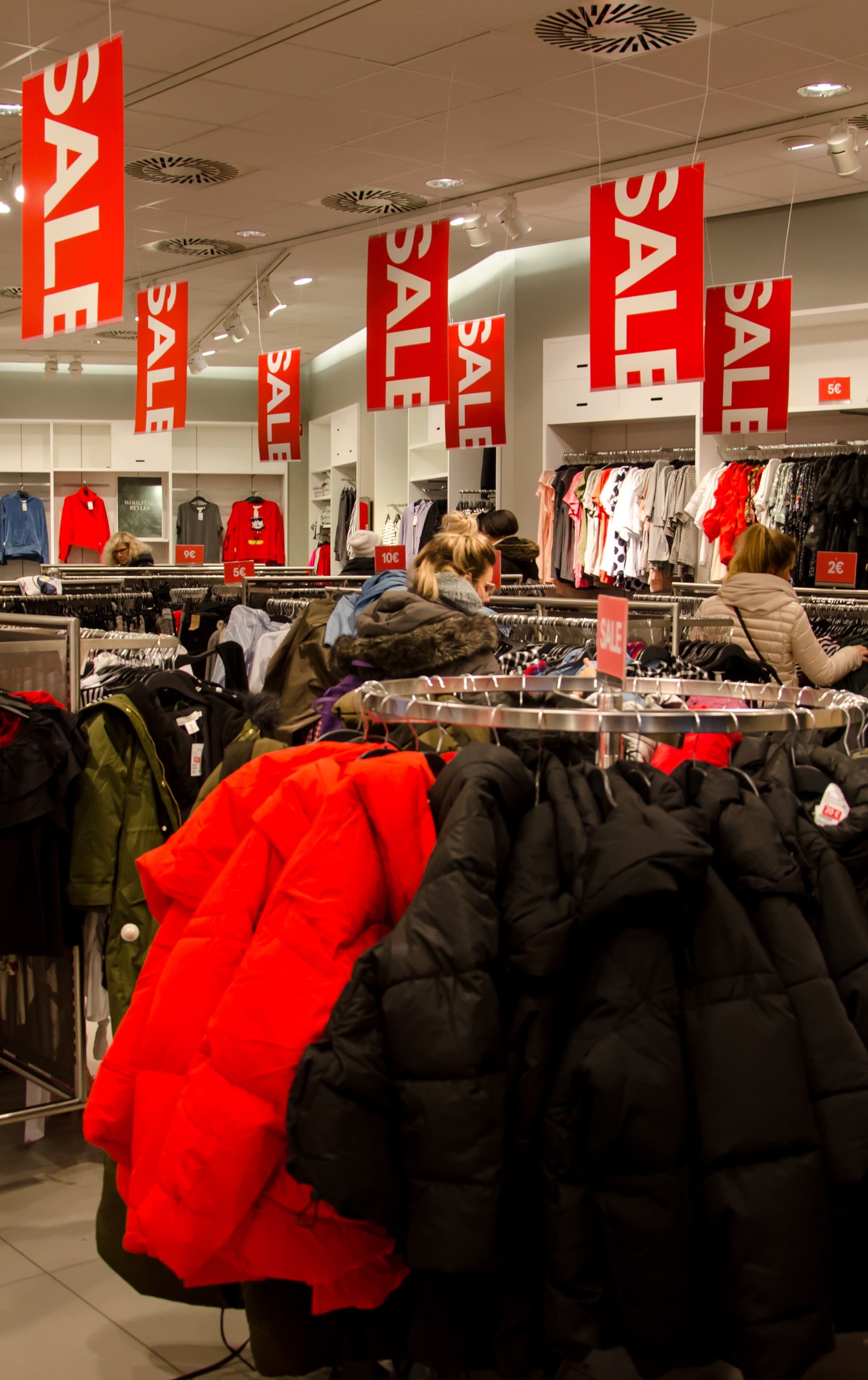
Inside an H&M store during a sale. © Shutterstock
Inside an H&M store during a sale. © Shutterstock
Chapter 5:
What must be done?
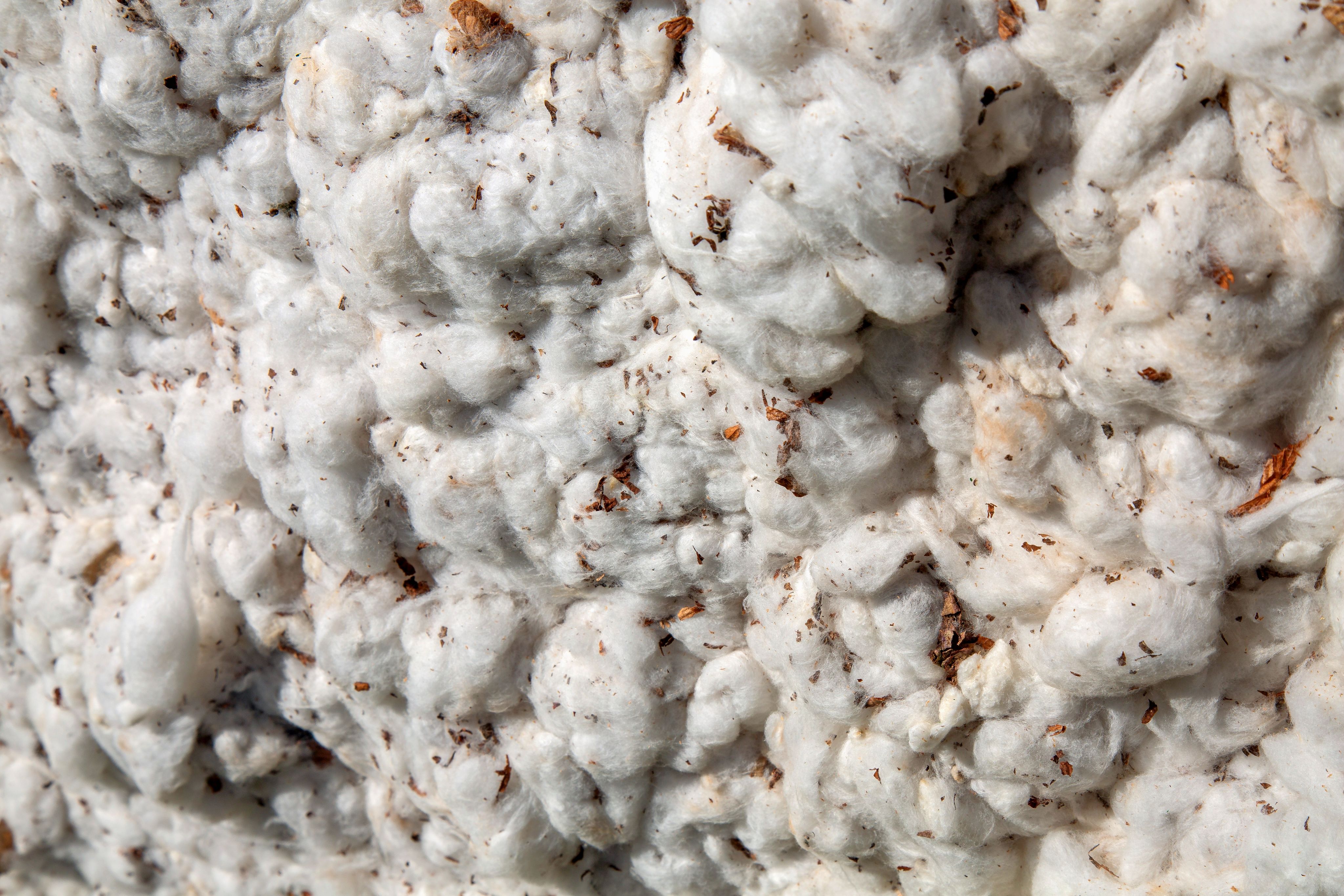
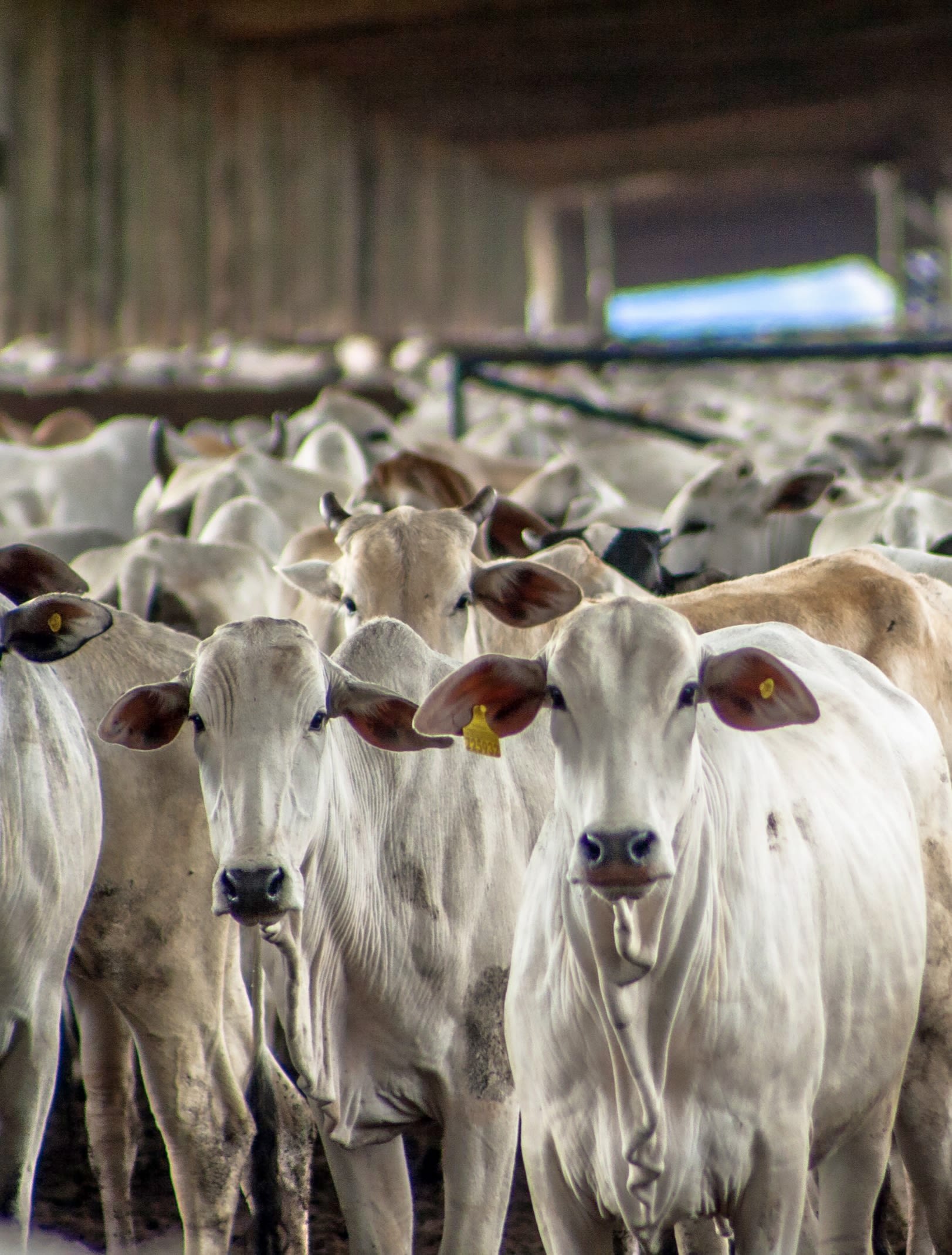
The consumption of Brazilian beef and leather is one of the largest drivers of global deforestation.
The consumption of Brazilian beef and leather is one of the largest drivers of global deforestation.
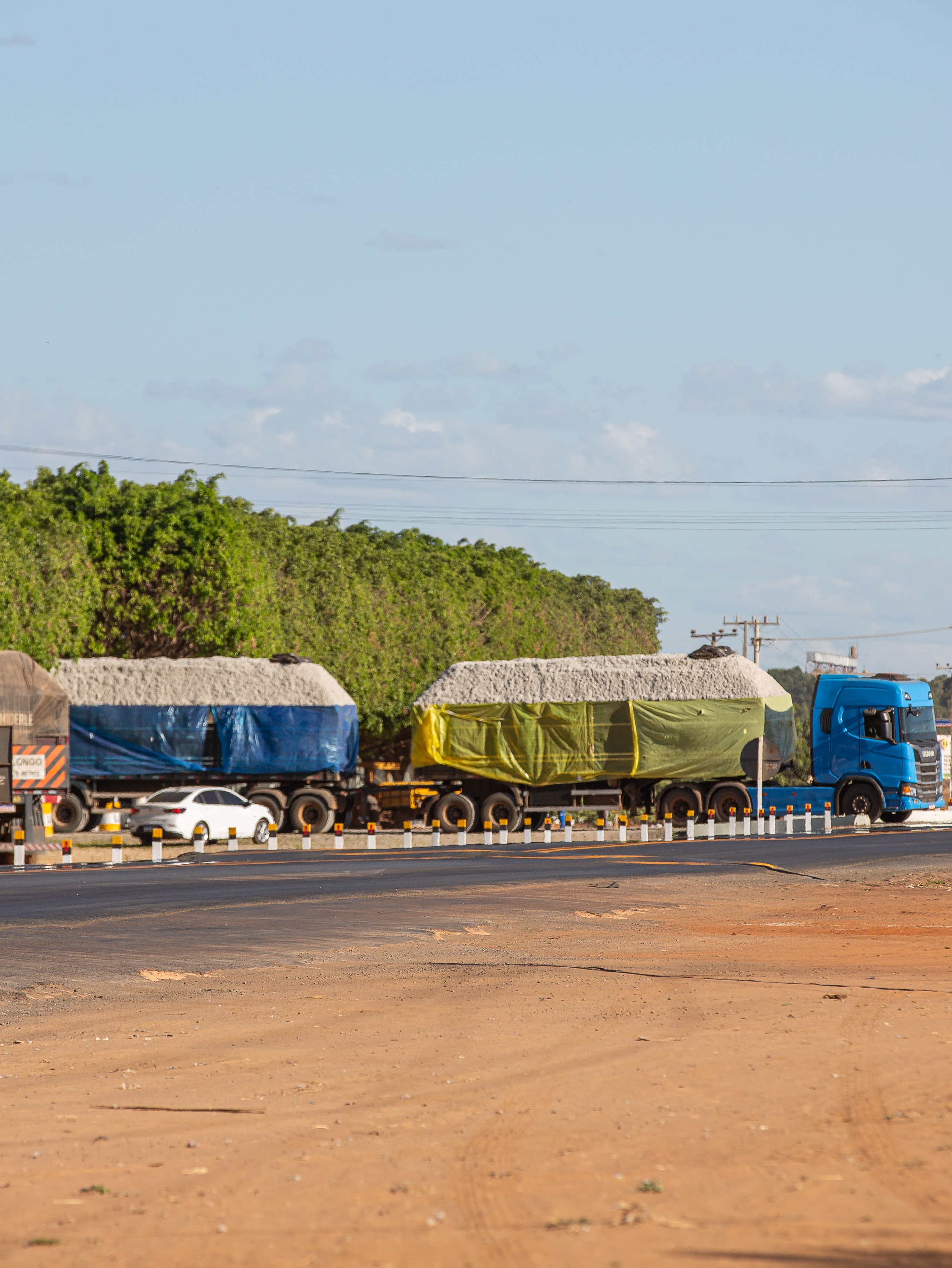
Trucks carrying cotton in São Desidério, Bahia. © Thomas Bauer / Earthsight
Trucks carrying cotton in São Desidério, Bahia. © Thomas Bauer / Earthsight

Fast fashion brands release new collections every few weeks to keep shoppers hooked. H&M offers up to 16 clothing collections each year, while Zara provides 24. © Shutterstock
Fast fashion brands release new collections every few weeks to keep shoppers hooked. H&M offers up to 16 clothing collections each year, while Zara provides 24. © Shutterstock
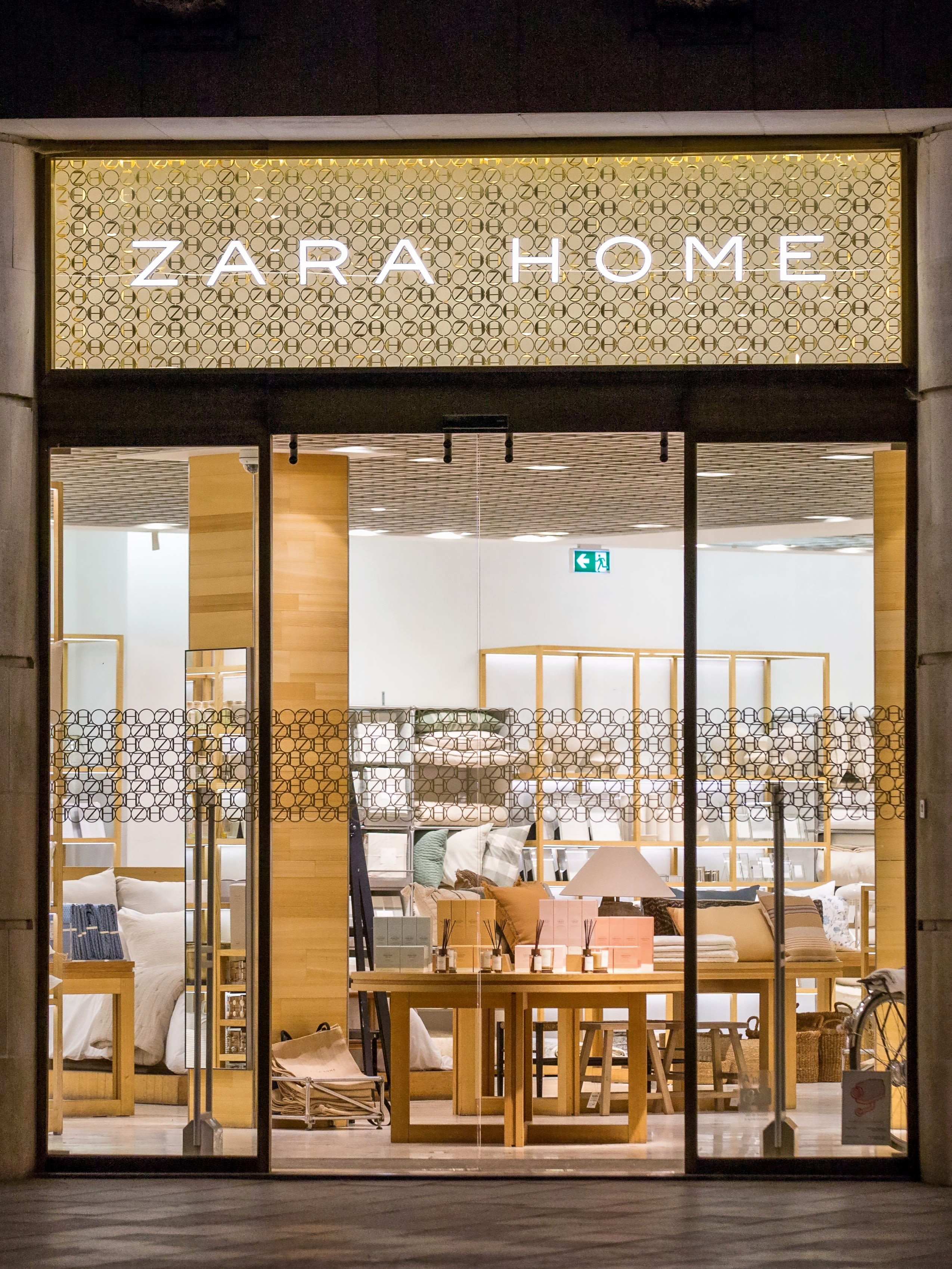
Once the CSDDD has passed, Inditex-owned Zara will have to identify and mitigate environmental and human rights risks in its supply chains. © Shutterstock
Once the CSDDD has passed, Inditex-owned Zara will have to identify and mitigate environmental and human rights risks in its supply chains. © Shutterstock
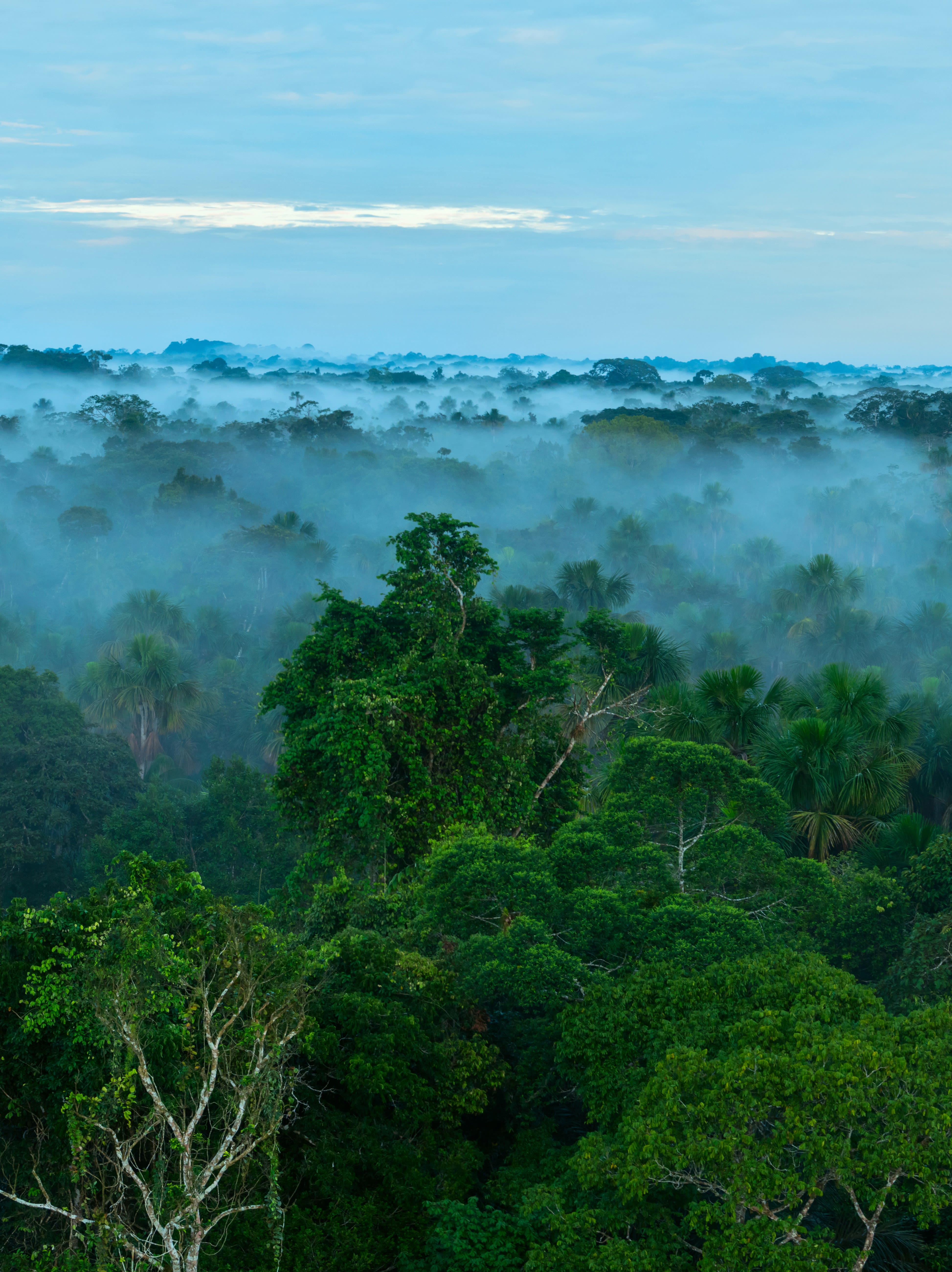
The EU Deforestation Regulation requires production to be deforestation-free and legal, but does not yet include cotton in its scope. © Shutterstock
The EU Deforestation Regulation requires production to be deforestation-free and legal, but does not yet include cotton in its scope. © Shutterstock

The EU Deforestation Regulation needs to go beyond its narrow focus on forests to protect less densely forested ecosystems, such as the ones common in the Cerrado. © Thomas Bauer / Earthsight
The EU Deforestation Regulation needs to go beyond its narrow focus on forests to protect less densely forested ecosystems, such as the ones common in the Cerrado. © Thomas Bauer / Earthsight

Products sold in the UK, EU and US have devastating impacts across the world - proper regulation and enforcement are key to changing this. © Shutterstock
Products sold in the UK, EU and US have devastating impacts across the world - proper regulation and enforcement are key to changing this. © Shutterstock
Consumer country regulation
In terms of pressure on land, and the human and ecological consequences, EU consumption of textiles is second only to consumption of food.291 Almost all of that pressure happens overseas, and almost all relates to the cultivation of cotton.292 The biggest culprits are the biggest consumers. The EU is the largest importer of clothing in the world, and the US is the second largest.293
Yet while increasing attention is being paid in these markets to the impacts of our food consumption – including soy, beef, cocoa and palm oil – on land and forests overseas, the impact of our clothes on those same things has received less scrutiny. That needs to change.
Governments on both sides of the Atlantic are gradually realising that voluntary action by companies, under pressure from concerned consumers or pressure groups, is never going to successfully address the impacts of our consumption abroad. Green labels and certification schemes have universally failed to deliver on their promises,294 and there are always going to be firms who simply will not sign up.
In recognition of this, consumer country laws are under development or have been recently passed which seek to address the negative impacts of supply chains through regulation. These fall under two main categories: laws specific to deforestation, and wider laws about human rights and environmental impacts.
France has a general law on ethical supply chains, the Loi de Vigilance. A similar law in Germany took effect in 2023, the Lieferkettenschutzgesetz (LkSG), though it is deeply flawed.295 Under the LkSG, a company’s due diligence obligations for indirect suppliers are much weaker than for direct suppliers, and a regulated company would only have to take action, such as carrying out a risk analysis, when they already have “substantiated knowledge” that human rights abuses or environmental damages have occurred. Given that the European fashion industry does not source cotton directly, this approach is insufficient to address the harms revealed in this report.
With its EU Strategy for Sustainable and Circular Textiles, the European Commission in principle agrees that government-led action is needed to ensure the fashion and textile industries change their practices.296 Adopted in March 2022, the strategy aims to reinvent the lifecycle of textile and footwear products by changing how fabrics are made, consumed, and disposed of. However, the strategy places little focus on the environmental and social impacts of cotton production.297 The European Parliament’s resolution on the strategy stresses the need to cover the entire value chain of textile products but also fails to directly tackle issues connected with cotton sourcing.298
Two regulatory actions at the EU level named in the Commission’s strategy and the Parliament’s resolution do have the potential to address European complicity in the environmental harms and human rights violations revealed in this report.
One is the EU Corporate Sustainability Due Diligence Directive (CSDDD). If enacted, it will require large companies operating in the EU to exercise due diligence throughout their supply chains. As such, the CSDDD could have a positive impact for the communities affected by large-scale cotton production in Brazil. If passed, EU-based companies, including Inditex and H&M, would in the future have to identify and prevent, mitigate, minimise or bring to an end adverse human rights and environmental impacts in their cotton supply chains.
Despite having passed most of the usual hurdles to become law,299 the CSDDD was nearly killed in early 2024 due to a dramatic U-turn by the German government.300 Contrary to EU practice, the German coalition government withdrew its support ahead of what would normally be a final rubber-stamping process in the EU.301 The U-turn was the result of a change of heart at the pro-business German political party FDP, a minority partner in the government coalition. FDP has received funding from businesses which will be affected by the law, including big cotton clothing retailers found by Earthsight to also be sourcing suspect clothing from Asia.302 Last-ditch efforts to rescue the law have since led to further weakening of the text, including restricting the law’s applicability to the very largest businesses while extending the period after which they would need to comply.303
The CSDDD is not perfect. Even before the final changes made to salvage the law in the Council, pressure from certain Member States – notably Germany and France – during earlier negotiations between the Council and European Parliament led to a significantly weakened text.304 Specific rights of indigenous peoples and traditional communities are not included, for example.305 Yet the passing of such a law can bring much-needed accountability to some European supply chains and allow those negatively affected by large companies’ activities to hold them liable before EU courts.
The second law is the EU Deforestation Regulation (EUDR). It came into force in June 2023 – although companies will only have to comply with it from December 2024 – and is arguably the strictest ever of its kind passed in a major consumer market. It demands that firms trace goods covered by the law306 back to the land where the raw materials were produced. It requires that production not only be deforestation-free, but also legal under the producer country’s environmental, land and human rights laws. It also requires companies to carry out due diligence in order ensure that the risk of breaching the law’s requirements is reduced to a minimum – an important shift in the burden of proof, particularly given the vast grey areas surrounding legality in certain places, including Bahia.
The EUDR has, however, a serious limitation: it does not cover cotton. Unlike better known drivers of deforestation, including beef, soy and palm oil (which are covered), the law will not prevent the cotton supply chains of Europe from being tainted by land grabbing, deforestation or violations of traditional communities’ land rights. There is a ray of hope, however. The law does require that the range of commodities it covers be reviewed after the first couple of years of implementation. The Commission should include cotton in its upcoming impact assessments on commodities that the law could cover in future.
Simply adding cotton and derived products to the EUDR may, however, not be enough. Further improvements to the EUDR307 and proper enforcement are also needed. For example, the regulation needs to go beyond its current, narrow focus on forests to also protect other types of ecosystems, including the less densely forested ones common in the Cerrado.308 Enforcement authorities in EU countries will need to ensure laws protecting traditional communities’ rights are complied with even if local enforcement in the producer country is lacking or local governments are being complicit in illegalities.309
For ‘forest-risk-commodities’ such as beef and soy, a new law akin to the EUDR has also recently been enacted in the UK, as part of the Environment Act, though it has not yet come into full effect and no date for this has been announced.310 A similar bill, the FOREST Act, has meanwhile been introduced in the US Congress. Neither of these laws includes cotton, focusing instead on better-known deforestation drivers, including cattle, soy and oil palm.
Even if they did, it is unclear to what extent they would be able to ensure cotton entering UK and US supply chains were truly sustainable. This is because the Environment Act and FOREST Act only cover illegal deforestation – as opposed to focusing on eliminating all deforestation from supply chains as the EUDR does. A sole focus on illegal deforestation is unlikely to sufficiently address cases where harmful deforestation authorised by local governments contravenes local laws.311
While many details of the law are yet to be decided through secondary legislation, the UK Environment Act also applies only to forests as defined by the UN’s Food and Agriculture Organization,312 suffering from the same limitation as the EUDR. In addition, it does not explicitly refer to human rights and it remains to be seen whether secondary legislation will include laws protecting human rights among those that need to be complied with.
Given that cotton is one of the greatest sources of pressure on land linked to Western consumption, the US, UK, EU and individual EU Member States must ramp up their ambition. The ministerial level of the Council of the EU and the EU Parliament must finally pass the CSDDD. Those EU Member States which had sought a much stronger law should consider bolstering it by passing their own, stricter national legislation. The UK and EU laws on forest-risk commodities must be strengthened, including by properly assessing the addition of cotton. In the US, the inclusion of cotton in the draft FOREST Act should be considered, and wider ethical supply chain legislation akin to the CSDDD urgently developed. Above all, it is essential that all these laws are properly implemented and enforced, something that past experience with legislative efforts to address unethical supply chains suggests is far from certain.313
Action in Brazil
The election of President Luiz Inacio Lula da Silva at the end of 2022 was welcomed by environmentalists the world over. The reintroduction of policies to combat deforestation in the Amazon, which practically disappeared during Jair Bolsonaro's administration, was among the first actions implemented in Lula's first days in office.
As a result, deforestation in the Brazilian Amazon fell by almost 50 per cent in 2023 compared to the previous year.314 Climate campaigners could breathe more easily.
However, the sense of relief was incomplete. While the latest news from the Amazon is cautiously positive, the opposite is true in the Cerrado: the problem is getting worse, not better. In 2023 the biome registered frightening rates of deforestation, which increased by 43 per cent compared to the previous year.315
As a reaction to this troubling trend, the Brazilian government has unveiled the fourth phase of its plan to prevent and control deforestation and fires in the Cerrado, known as the PPCerrado. The government asserts that the initiatives outlined in the plan will eliminate deforestation by 2030, offering a glimmer of hope.
However, the effectiveness of the proposed measures remains uncertain as the plan exclusively targets illegal deforestation, which contradicts the aim of eliminating all deforestation.316 Failing to address deforestation authorised by local governments leaves the door open for the kind of unsustainably permissive – and sometimes illegal – policies adopted by the state of Bahia.
While Bahia’s 1989 Constitution has strong provisions on environmental protection, successive state governments have adopted regulations that undermine them.317 Since 2011, environmental licensing has not only become self-declaratory but has been severely weakened.318 This has been challenged by public prosecutors.319 In parallel, approval of deforestation permits (ASVs) has skyrocketed. Between 2012 and 2021, ASVs were issued for around 750,000 hectares, an area larger than Paris, London, Rome, and New York City combined.320
Just as worrying as the deforestation permits are the hundreds of authorisations granted to agribusinesses to drill wells and extract water from the Urucuia aquifer for irrigation.321 Between 2007 and 2022, more than 830 permits authorising the extraction of 17 billion litres of water per day were issued.322 Combined with the effects of deforestation, this has had dramatic impacts on the region’s water availability.
The federal government should put in place a plan to halt all large-scale deforestation in the Cerrado, not only the illegal kind. Bahia’s government should fulfil its constitutional mandate and map all public lands to ensure they are preserved, and that traditional communities fully enjoy their land rights. Bahia’s rural agency must speed up analyses of allegedly fraudulent land titles overlapping with traditional communities’ territories with a view to reclaiming these lands. The series of setbacks in environmental policies should be reversed immediately by Bahia’s environmental agency, which must also invest in transparency and make available all data related to deforestation and water permits issued in recent decades.

Action by companies
While the ultimate answer to this scandal lies with governments, that does not mean that companies have to wait until they are forced to act. On the contrary, with the net of regulation gradually tightening around global supply chains linked to consumption in wealthy countries, it makes sense for companies to move sooner rather than later, putting them in a better position when regulation arrives.
The first thing the fashion giants must do is adopt sufficiently ambitious goals. H&M’s Human Rights Policy makes no reference to land conflicts or traditional communities.323 Neither its Sustainability Commitment nor its Responsible Raw Material Sourcing Policy identifies deforestation linked to cotton production as a risk to be monitored and mitigated.324 Inditex says it does not manage land in protected areas and that it respects the rights of local communities “where it conducts its business activity,” but it is unclear whether it expects the same from its cotton suppliers.325
Their environmental and human rights policies should be clear about covering their entire cotton supply chains, and specify measures that mitigate risks of deforestation, pesticide contamination or violations of traditional communities’ rights. Their policies should also include possible remedies for harms that do occur. Western retailers cannot be exempted from their responsibilities for abuses and violations committed by the agribusinesses that grow their cotton.
In the cotton sector, imminent regulation is already helping to drive action. As Better Cotton admitted in 2022, “Traceability within the cotton supply chain will soon become a market ’must’ with legislators on both sides of the Atlantic moving to toughen rules.”326 As part of its 2030 strategy, Better Cotton Traceability was launched at the end of 2023. However, it fails to commit to tracing cotton back to farm of origin – the only level of traceability that truly matters – limiting itself to country of origin.327 This is clearly insufficient as illegalities and abuses committed at individual cotton farms would remain out of sight for foreign buyers unless they did their own traceability (which has also been lacking). It also leaves the system wide open to laundering.
Better Cotton has put in place a new set of Principles and Criteria (P&Cs), which came into effect in March 2024.328 They require cotton producers to mitigate social and environmental risks to “surrounding communities”, people or ecosystems “beyond the farm boundaries”;329 ban the conversion of “natural ecosystems” by certified farms after 31 December 2019 (which, unlike the other P&Cs, will only be in force from August 2025, a year later than originally planned);330 call for the protection of High Conservation Value (HCV) lands by agribusinesses planning new conversions;331 and demand compliance with “all applicable laws” in the producer country, including those deriving from international treaties.332
However, problems remain. The ban on deforestation after 31 December 2019 does nothing to prevent BC cotton from being produced on land which was illegally deforested prior to that date. The requirement to avoid harm to surrounding communities says nothing about communities whose lands have been stolen and transformed into plantations.333
The criteria on natural ecosystem conversion and HCV protection meant to mitigate risks to communities within farm boundaries334 only apply before land is converted and have no relevance thereafter. In addition, they fail to explicitly require the free, prior and informed consent of communities affected by conversion plans.335 Better Cotton could at least have been clearer that the new HCV criteria are meant especially to protect indigenous peoples and traditional communities. But guidance they have promised on this has yet to be published.
The legality criteria are also still vague about what types of laws are applicable, failing to even mention the importance of laws on land use and ownership.336 There is no wording on what is expected from producers in situations (common in Brazil) where one government agency says something is illegal and another says otherwise; or where a company may have one legal document but not all of those required. In all the cases documented in this report, the certified farms in question could have produced some kind of ‘proof’ of legality to present to an auditor.
The wider issue of implementation and enforcement seems to have been left unresolved. Even in instances where the issues we have exposed could potentially be covered by the new P&Cs, there is little reason to believe such breaches would be detected or acted upon. This is especially the case considering the conflicts of interest inherent in the system. The auditing firms are paid by the agribusinesses they are meant to monitor. Our experience researching other green labelling schemes337 tells us that, ultimately, global industries cannot be trusted to police themselves.
Even in the rare instances where the issues we have exposed could potentially be covered by the new P&Cs and picked up by auditors, it is very likely the tainted cotton would make it into BC supply chains anyway. This is because of the lack of adequate traceability highlighted above.
Better Cotton must act to further strengthen its standard, as well as the systems for implementing and enforcing it. Big clothing retailers, including H&M and Zara, must pressure it to do so. Until it does, they must go beyond using certification schemes to ensure their goods are ethically sourced, and must institute their own, more rigorous checks.
Fashion Crimes was published on the 11th April 2024
ADDENDUM
In an email sent to Earthsight in May 2024, SLC Agrícola stated that the Tabuleiro VII legal reserve at Capão do Modesto is not part of its lease agreement with the company that owns the Paysandu Farm in Correntina. This information had not previously been shared with Earthsight. SLC Agrícola did not share the lease agreement with Earthsight or provide further evidence to substantiate its statement.
Credits
Research: Earthsight
Footage and imagery: Earthsight / Thomas Bauer (unless stated otherwise)
Data visualisation and graphic design: @FlavitoReis
Cover illustration: @samuel_bono
Acknowledgements
Earthsight would like to sincerely thank the following organisations and individuals for their support and invaluable insights: Geraizeiro communities, fundo e fecho de pasto communities, AATR, 10envolvimento, ISPN, Marcos Rogério Beltrão dos Santos, MPE-BA, Dr Luciana Khoury, MPF-BA, Comissão Pastoral da Terra, Observatório do Mercado, Grilagem e Financeirização de Terras no Brasil, Imaterra and Aidenvironment.
This report has been produced with the financial assistance of the Norwegian Agency for Development Cooperation (Norad), alongside other donors.
The content of this publication is the sole responsibility of Earthsight and cannot in any way be taken to reflect the opinions of the individuals or organisations above, or our donors.

